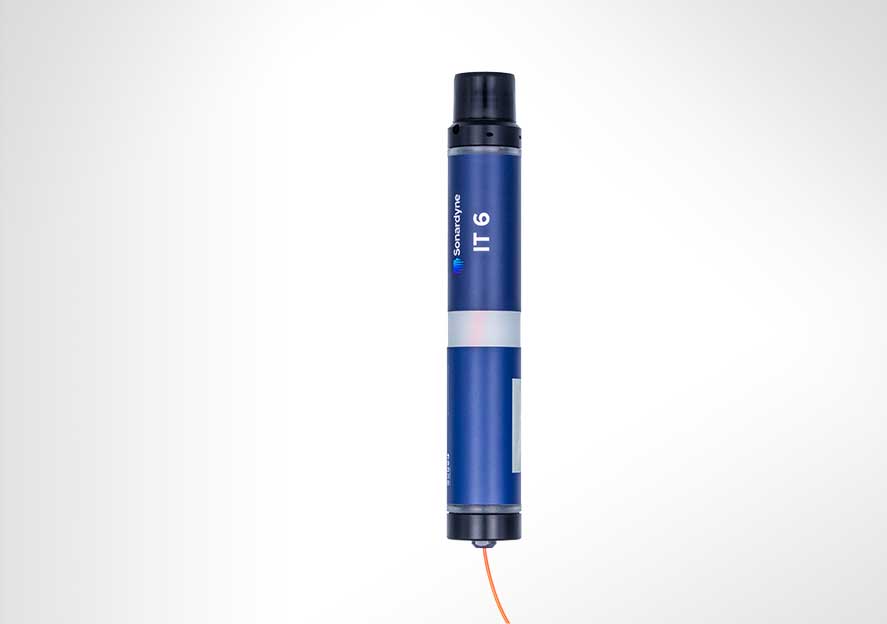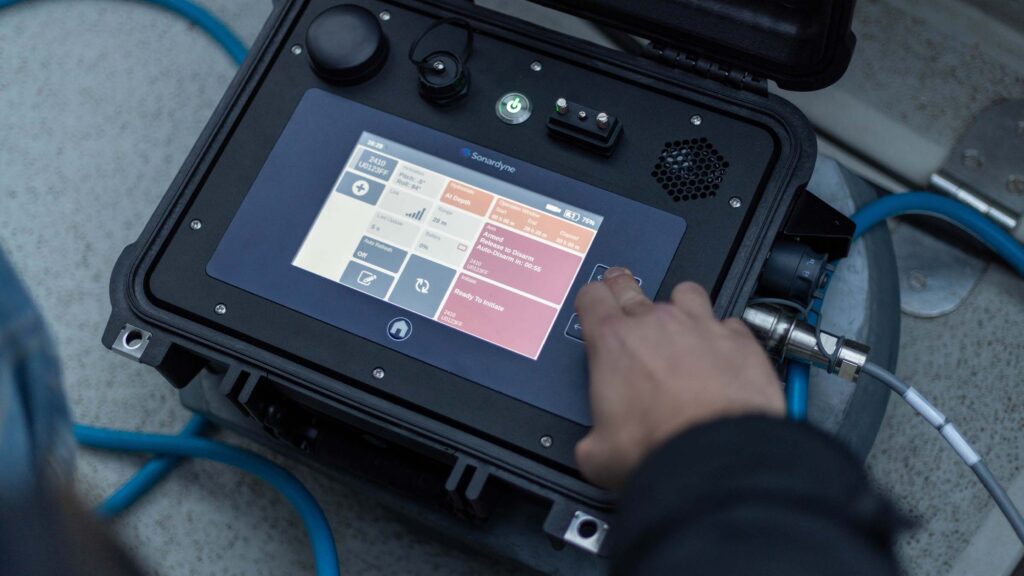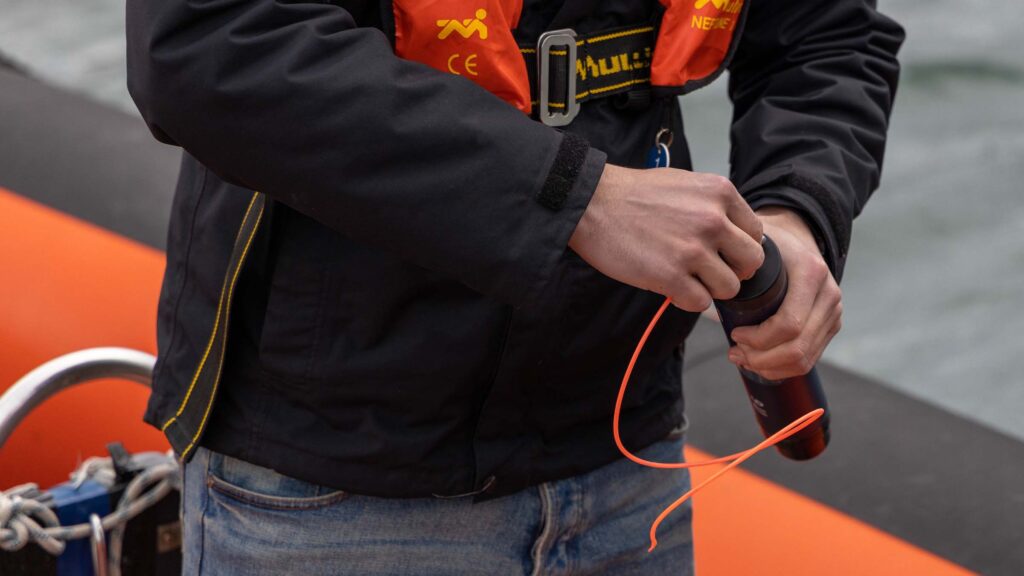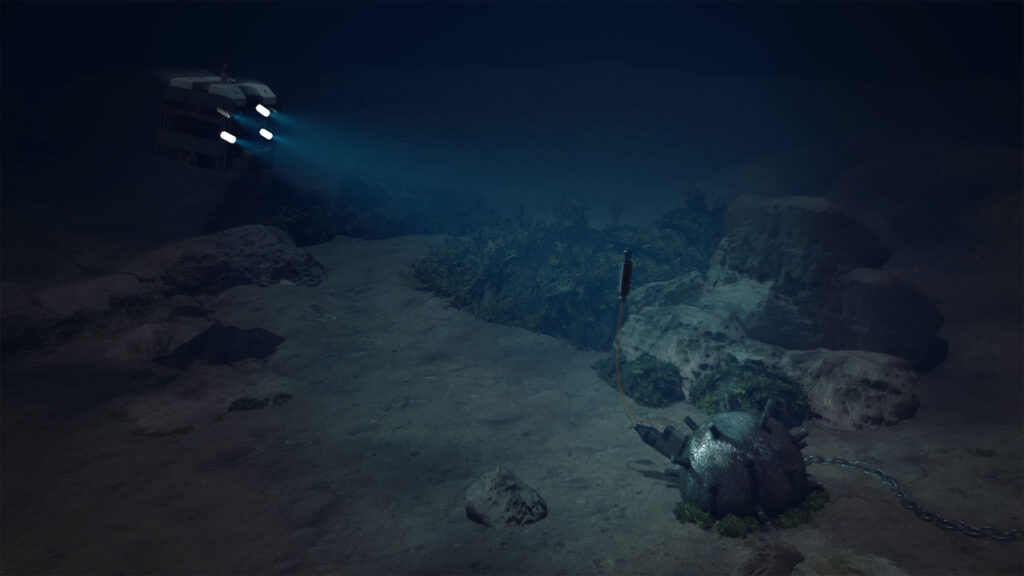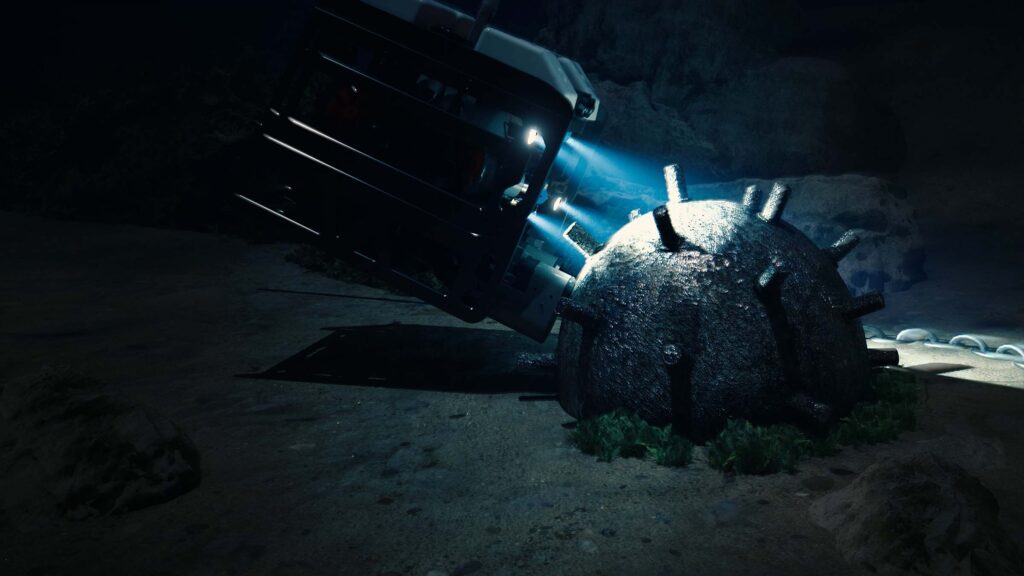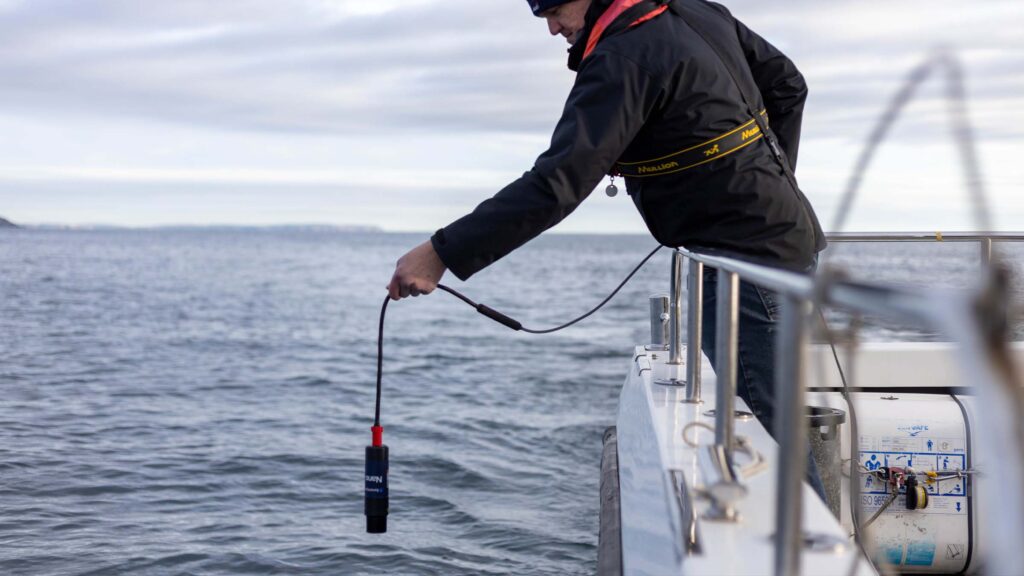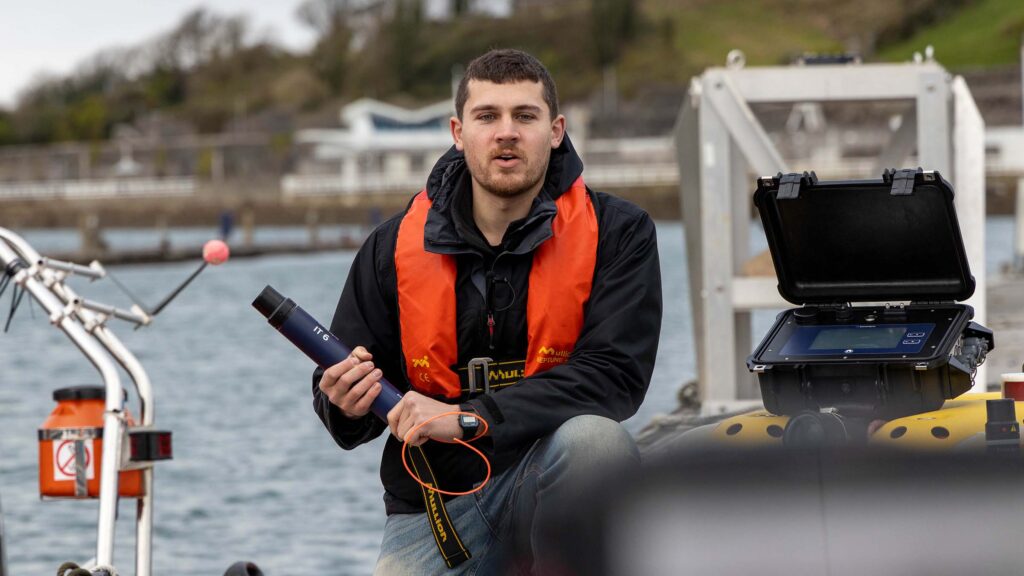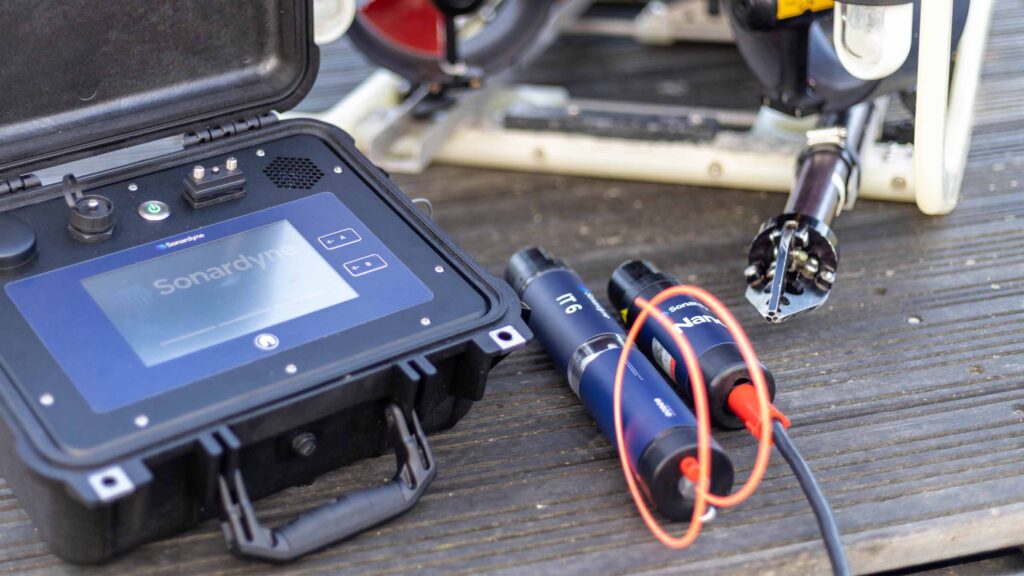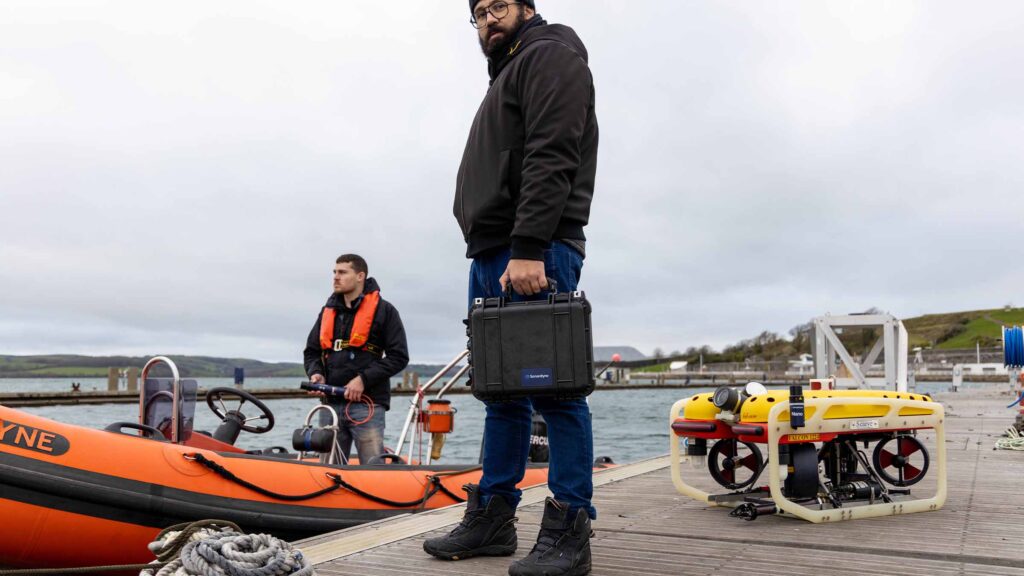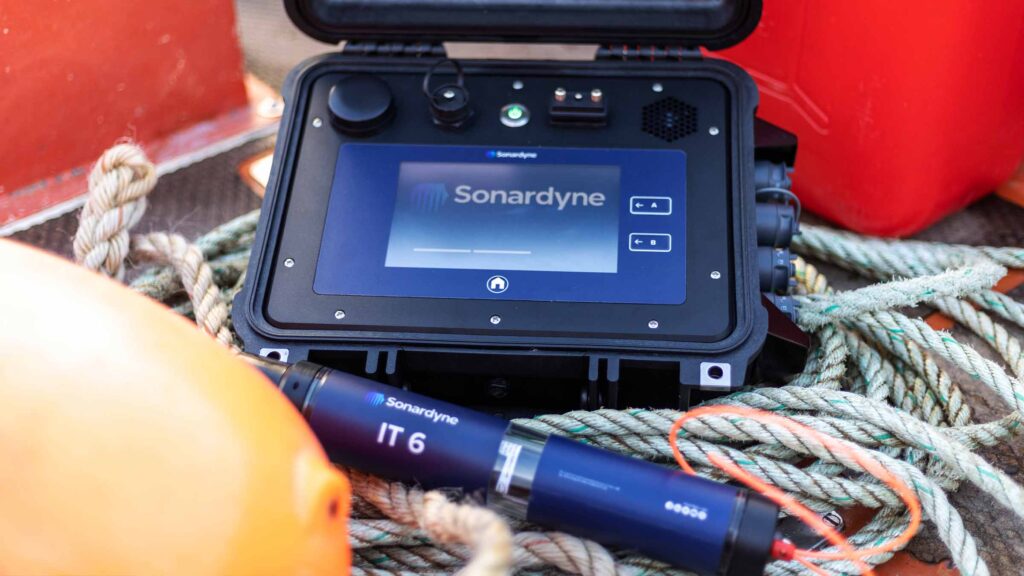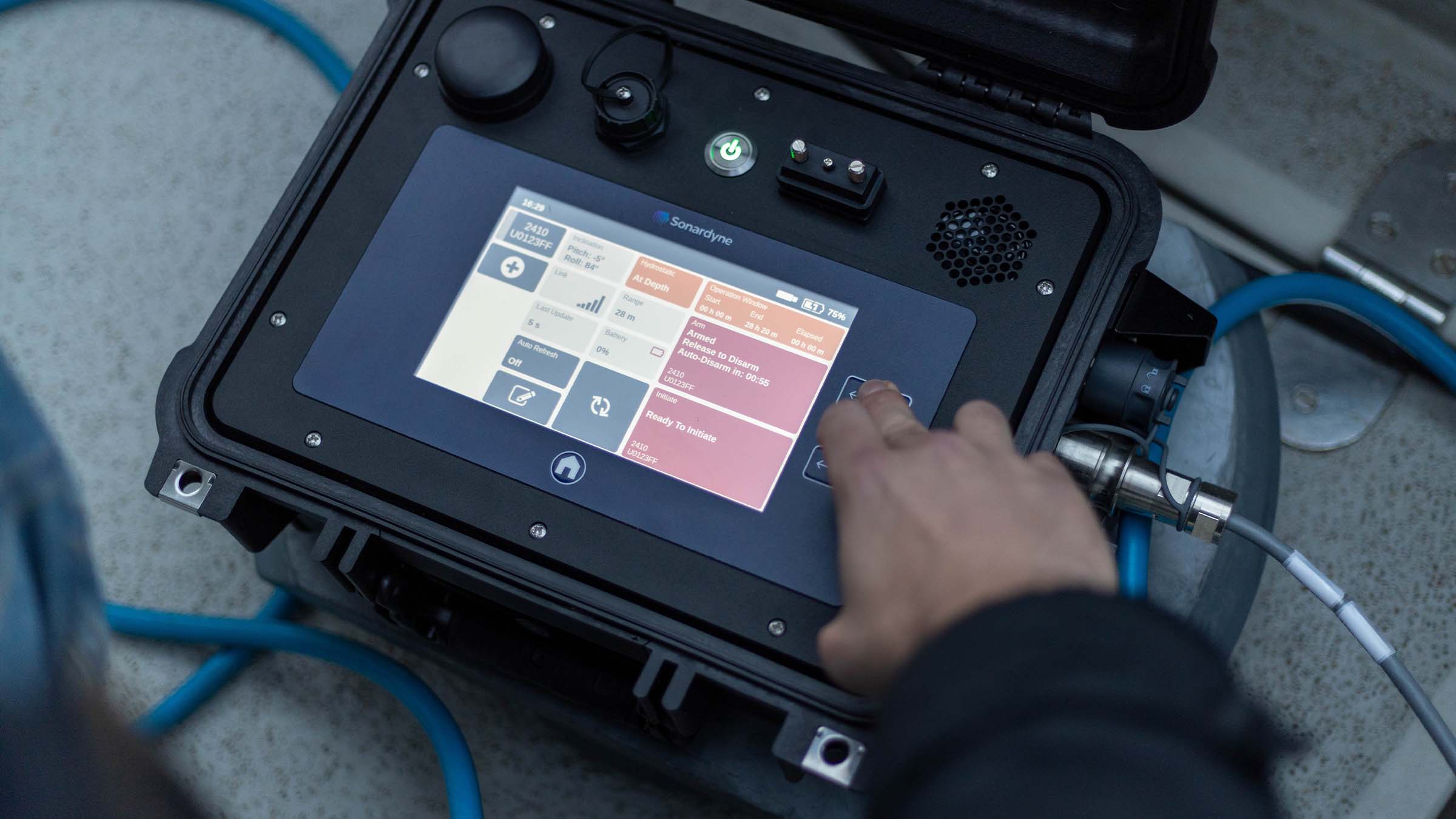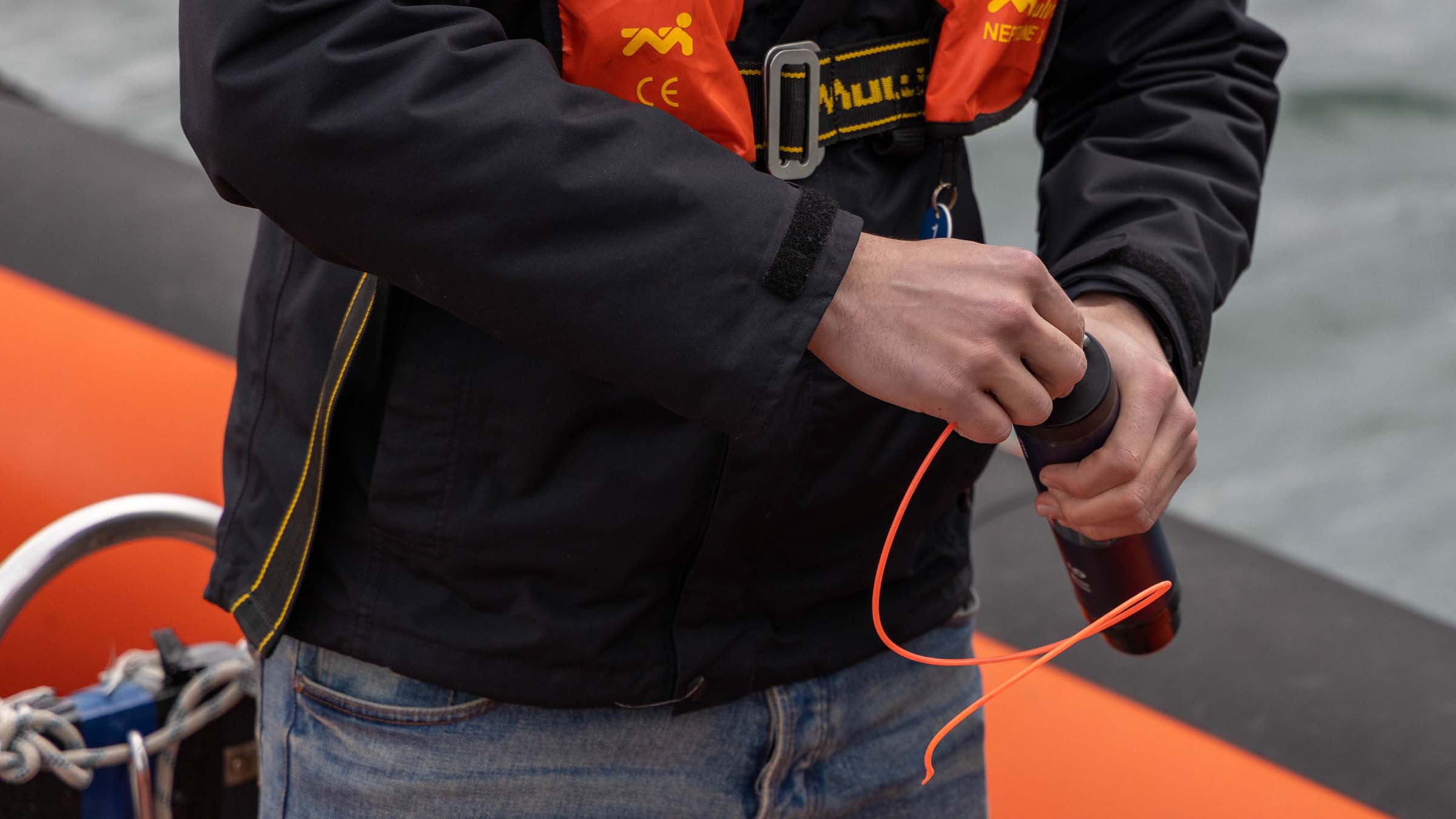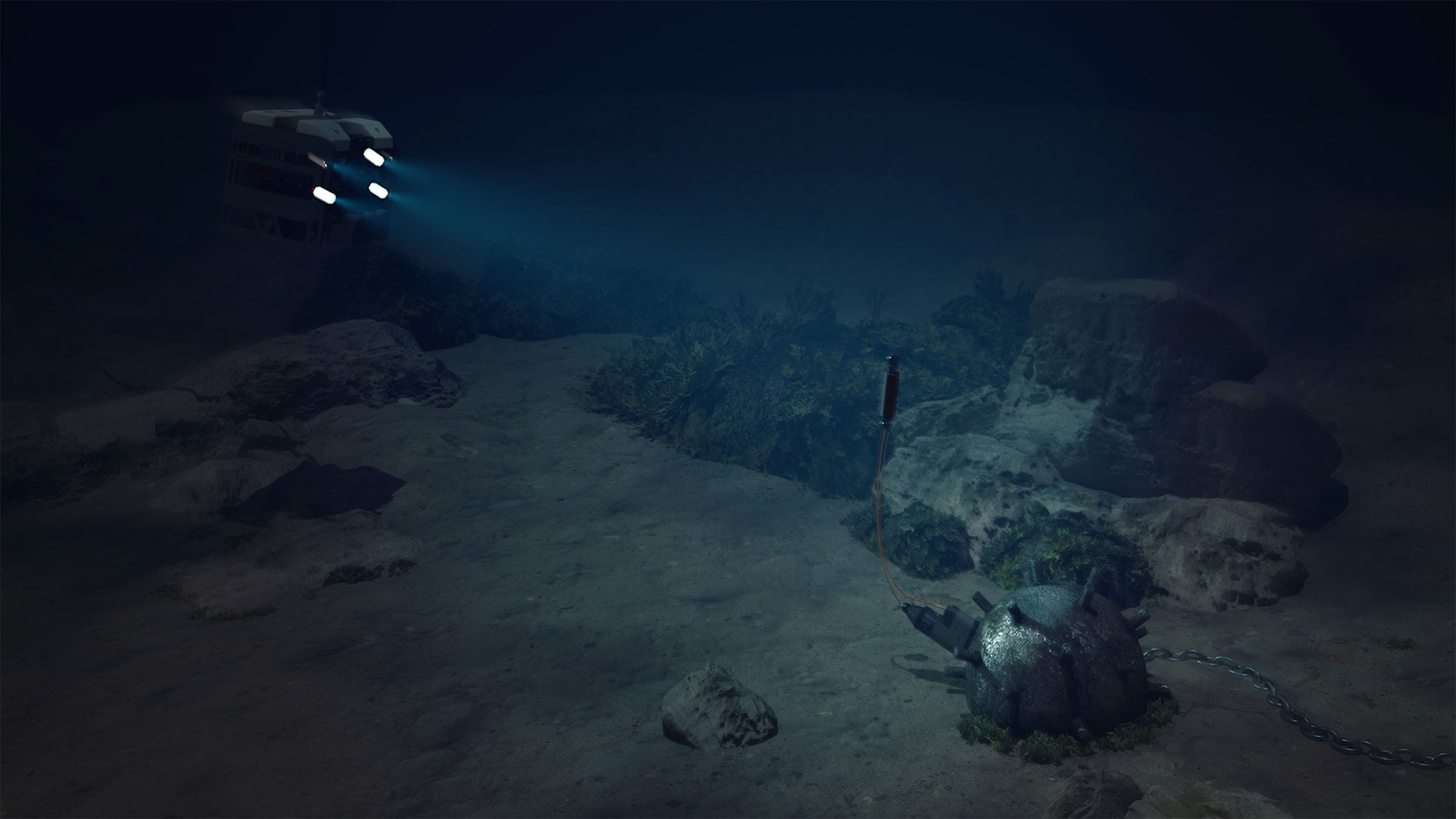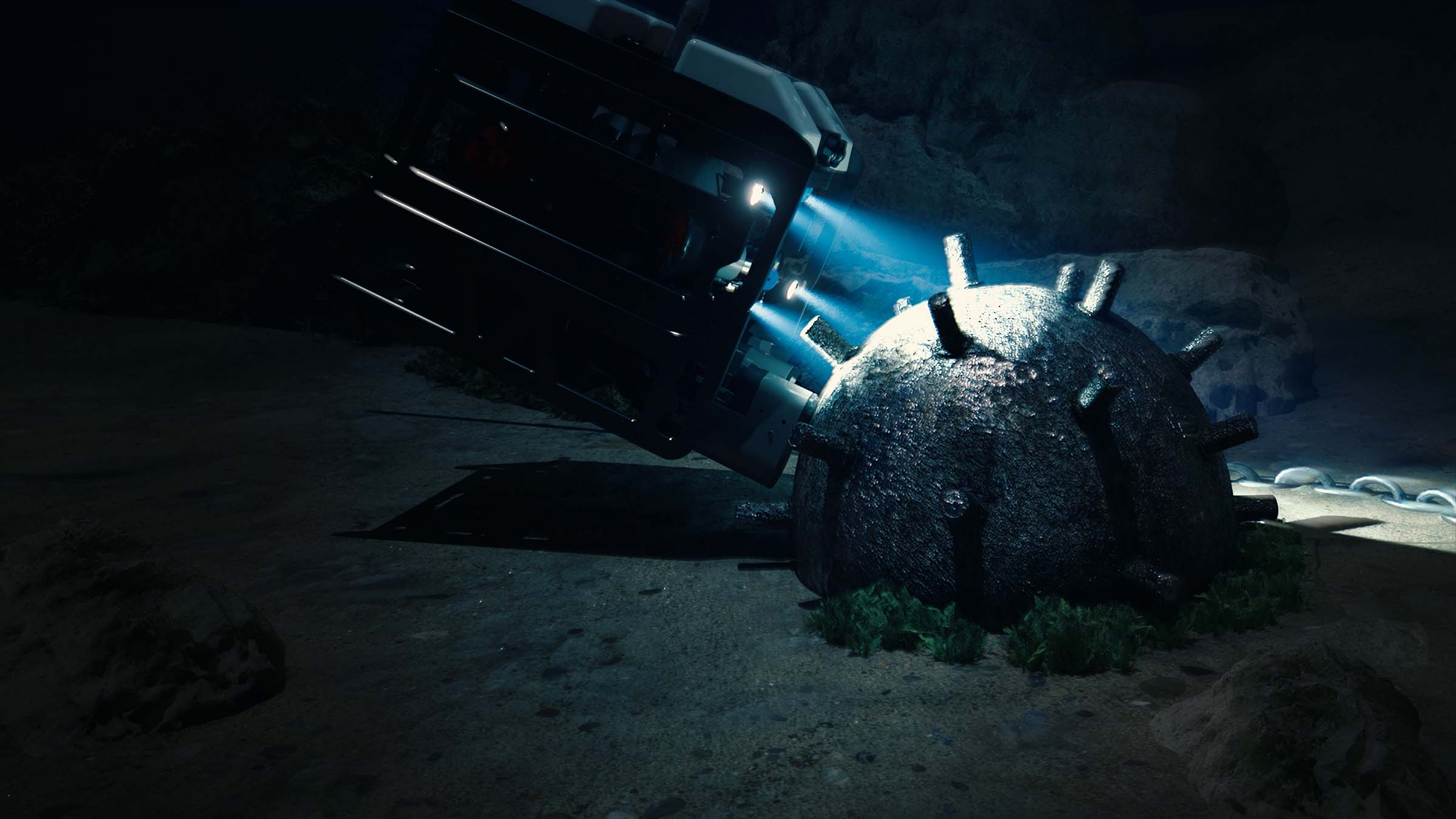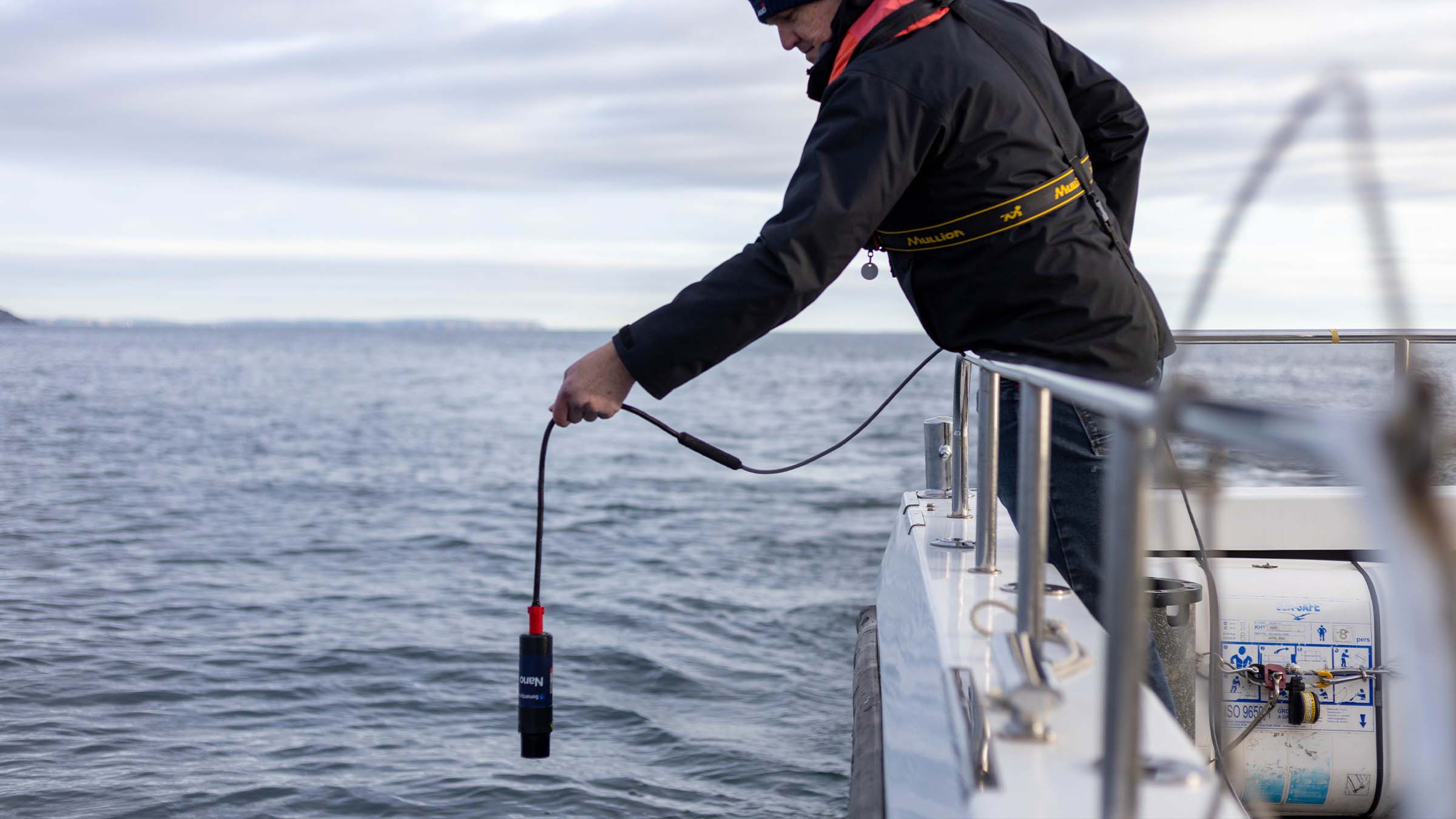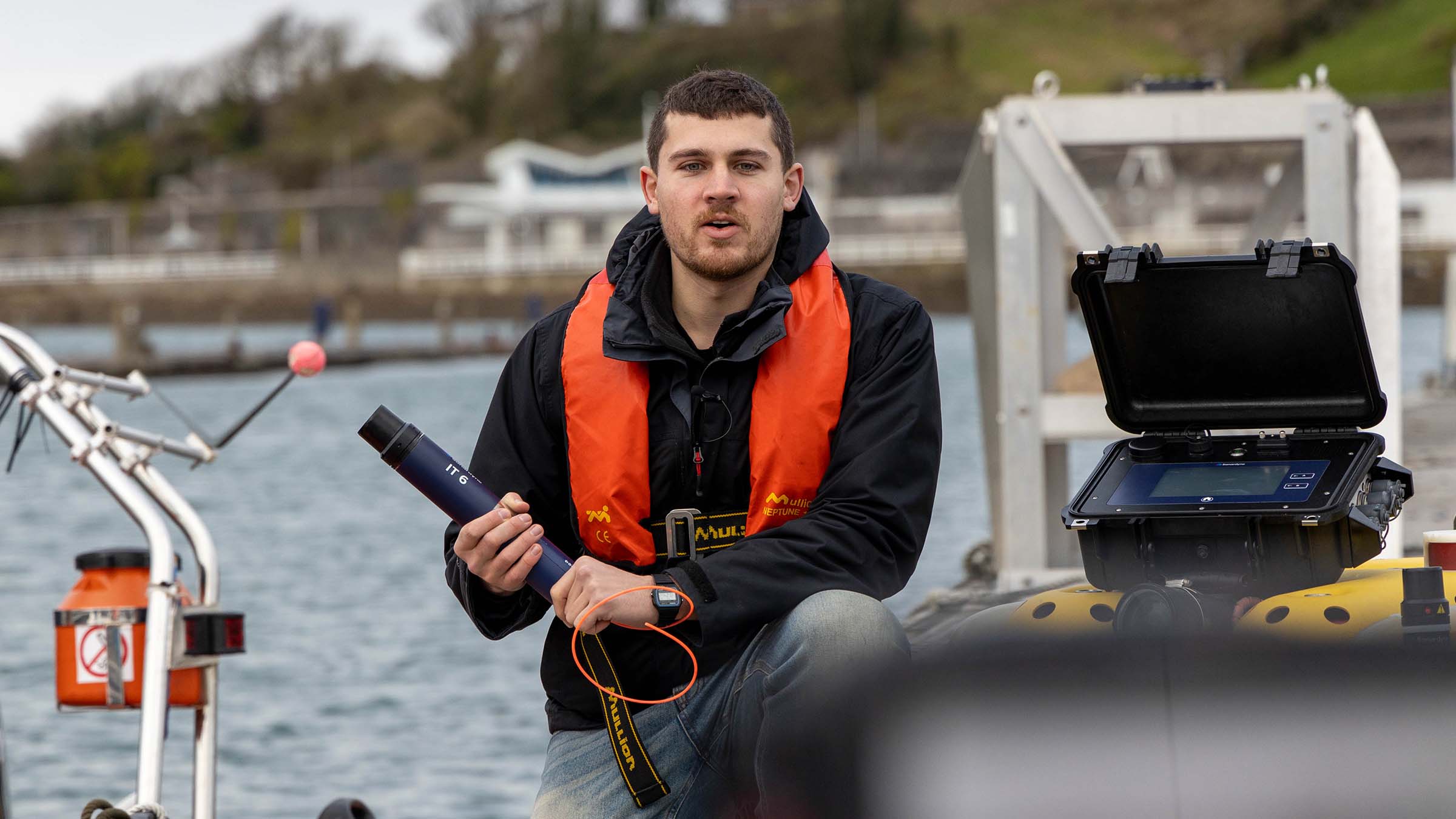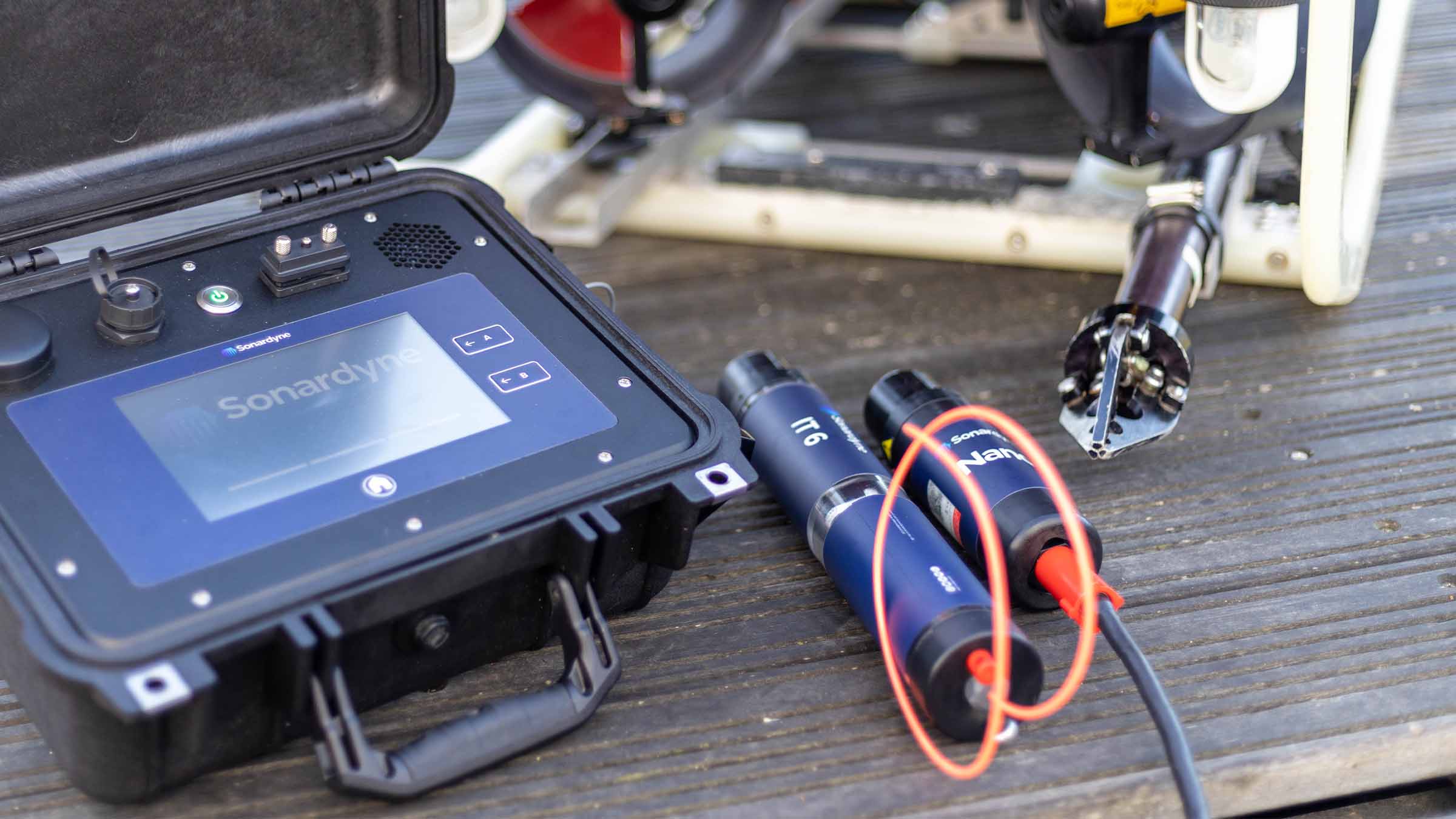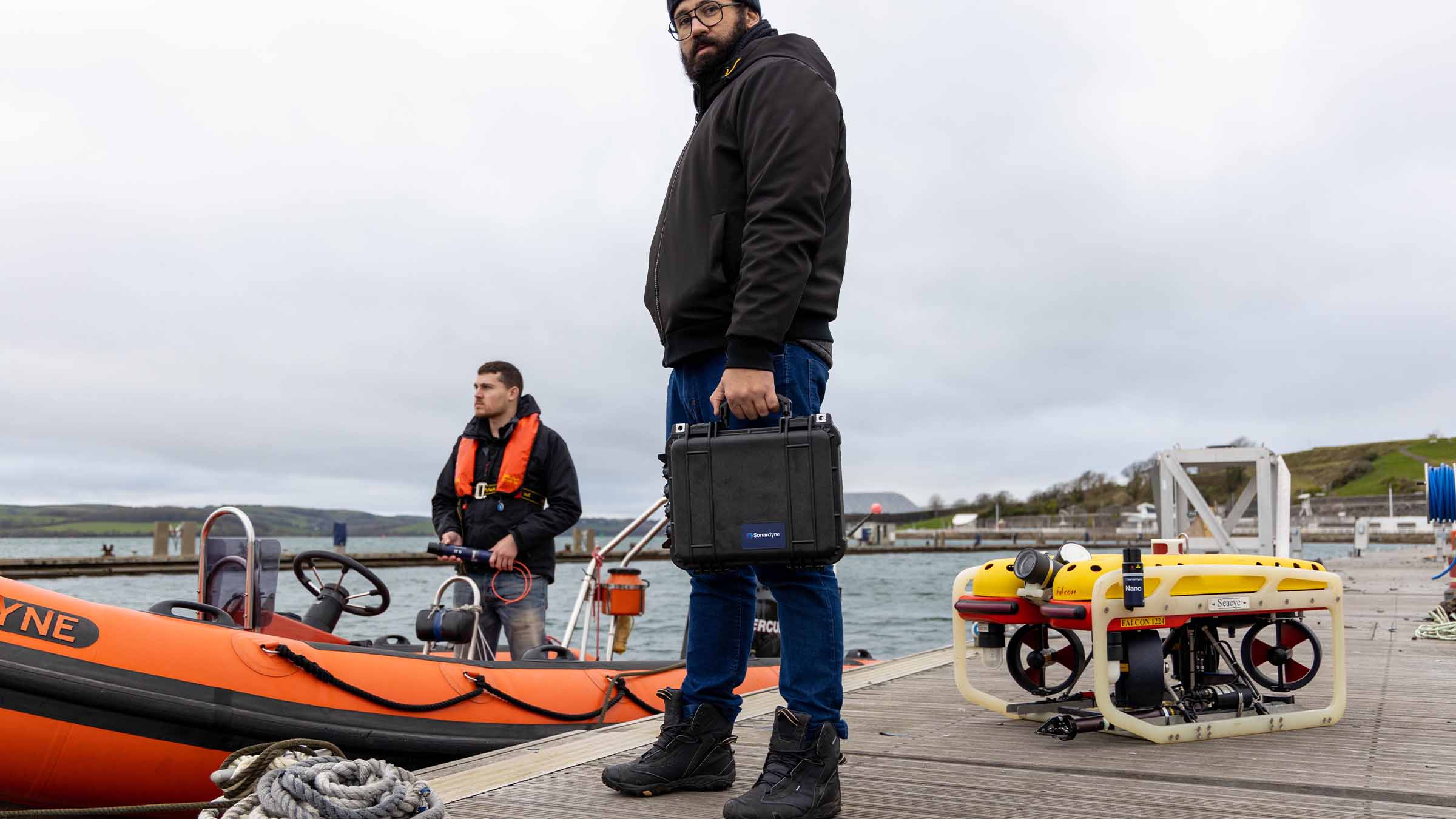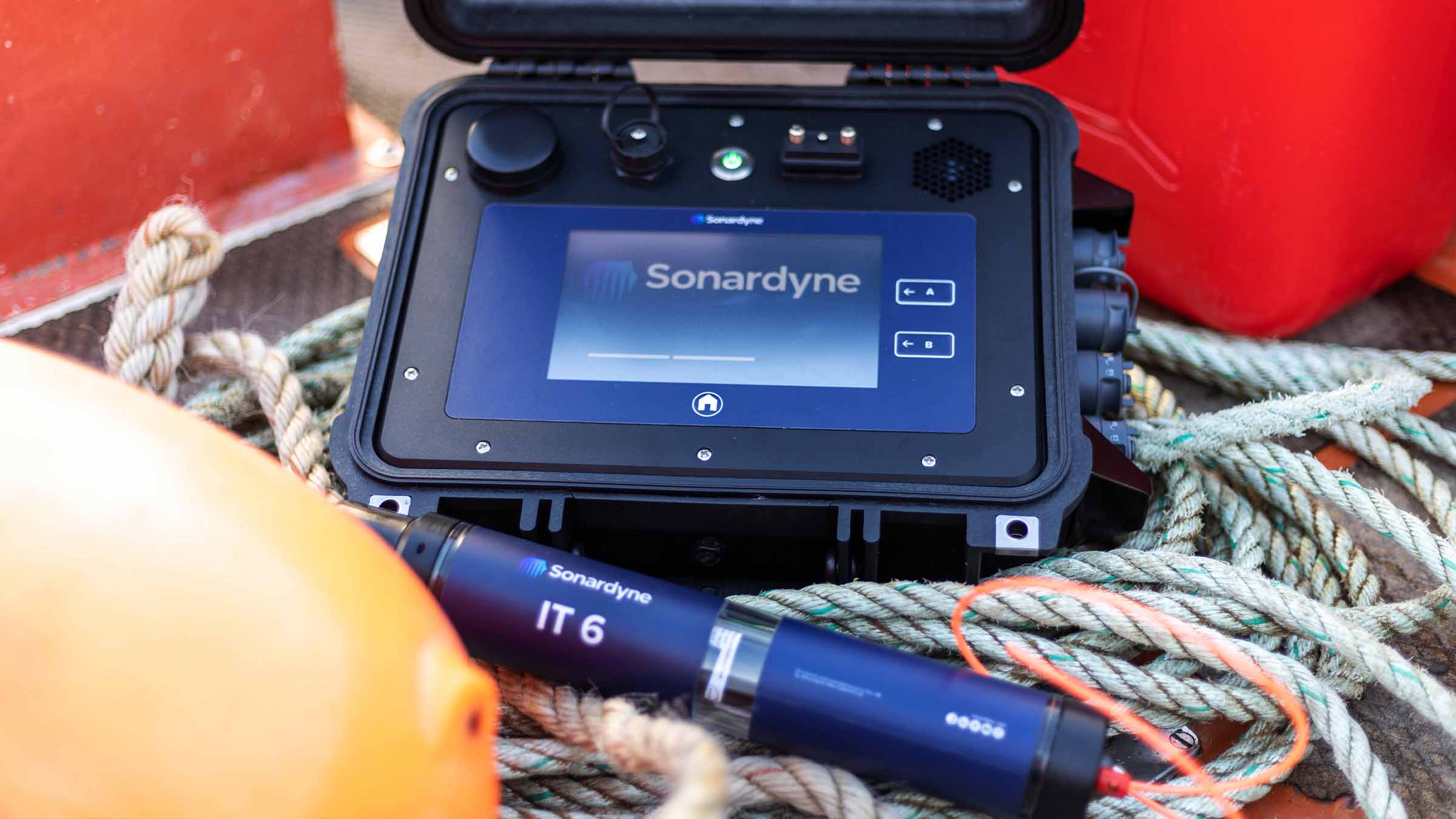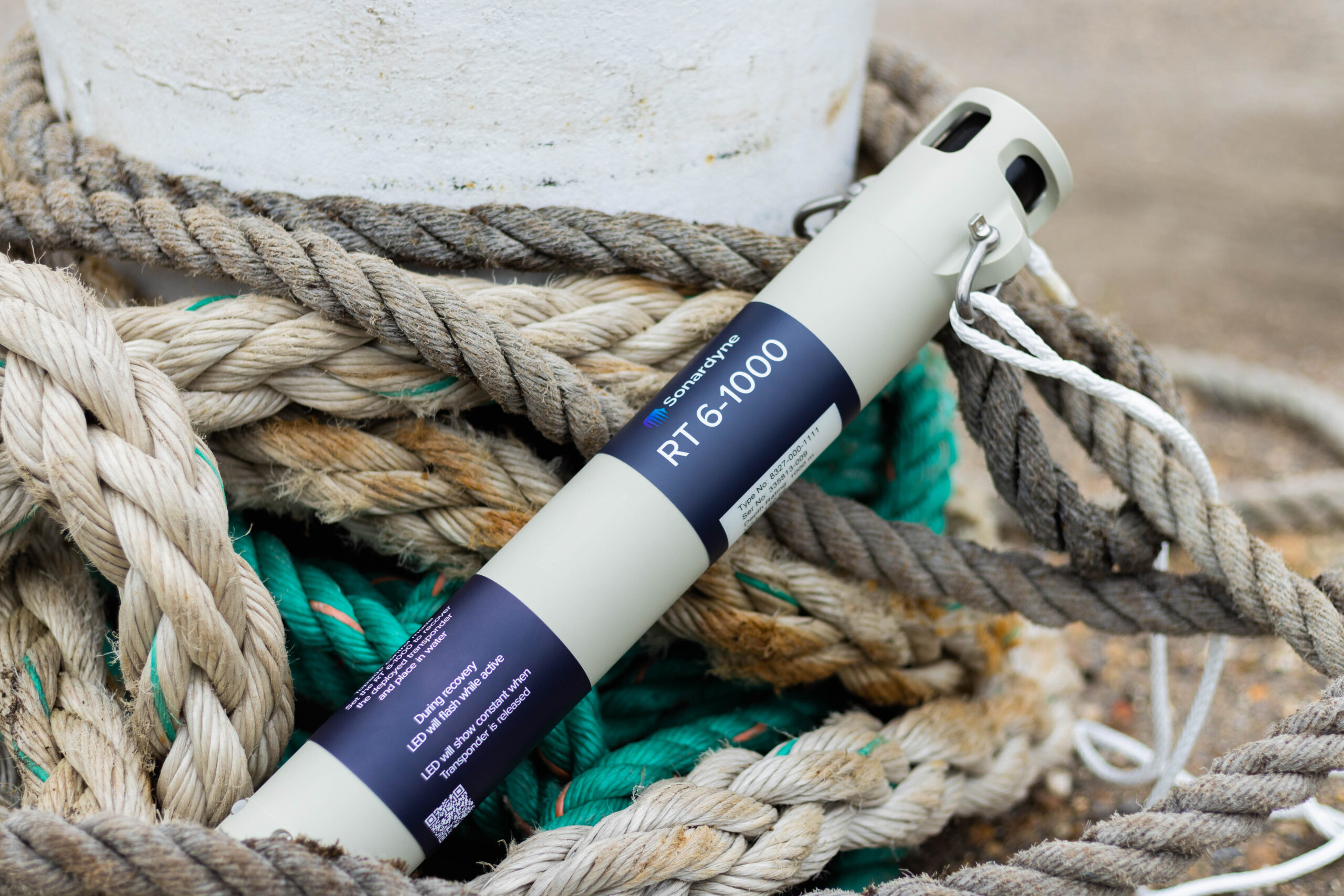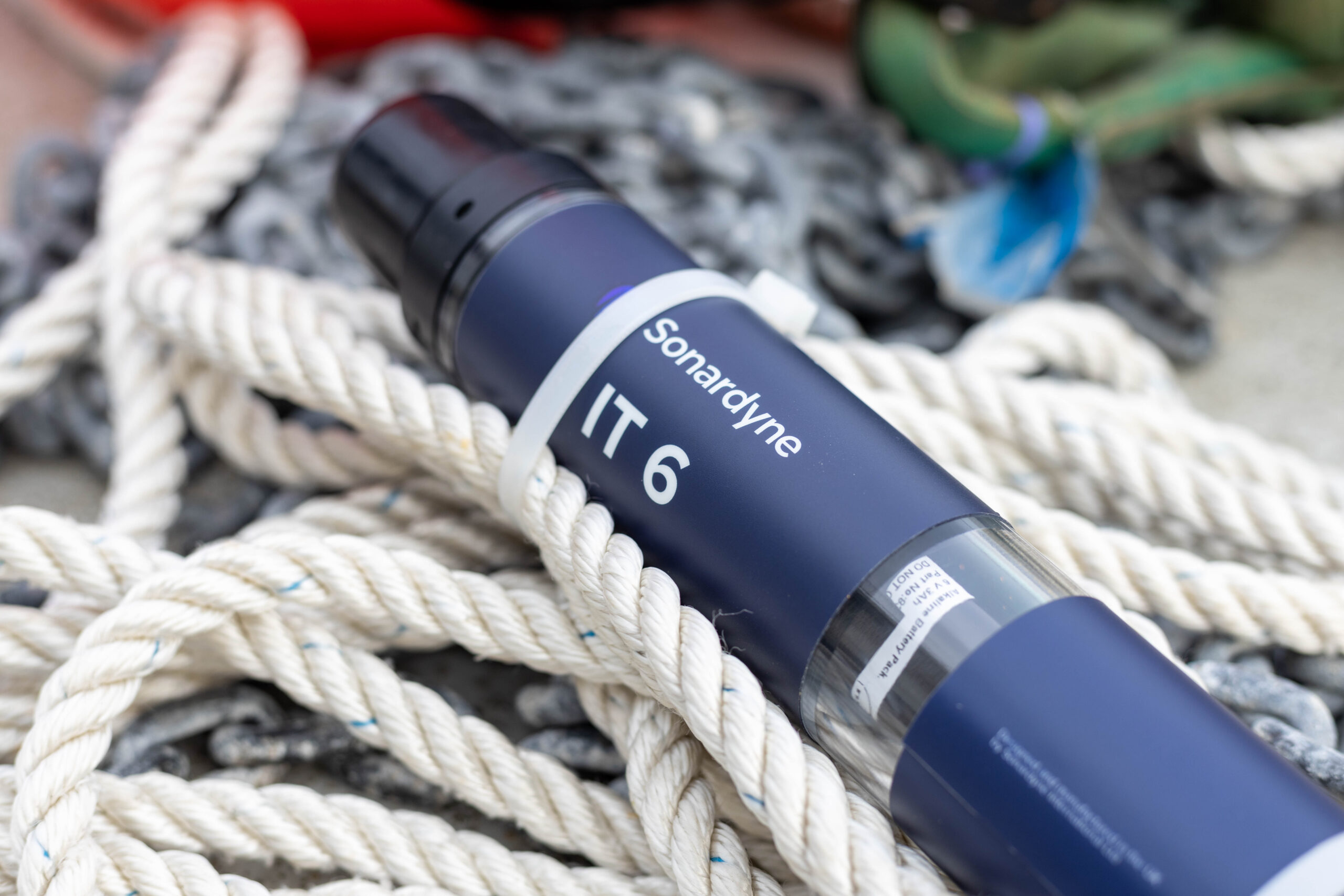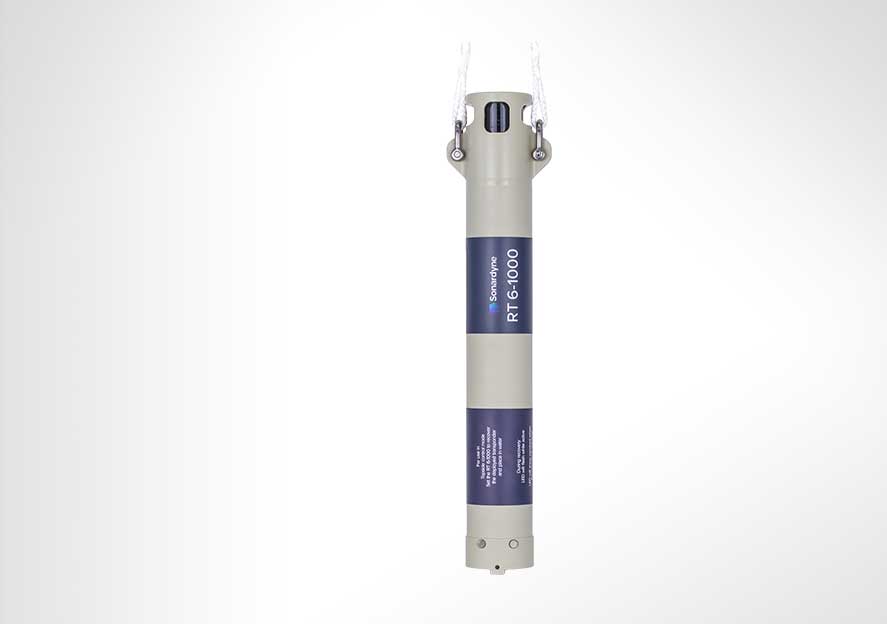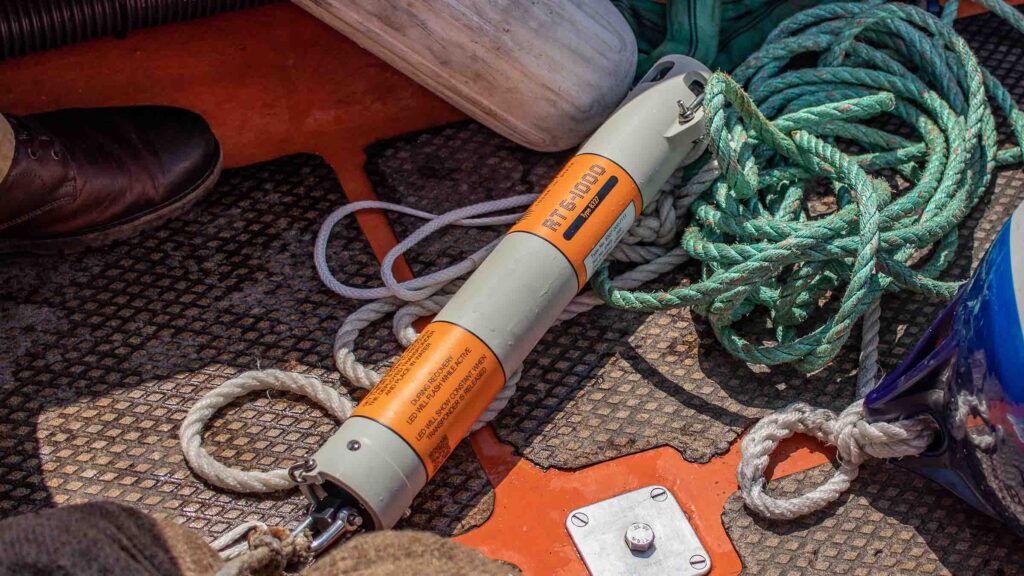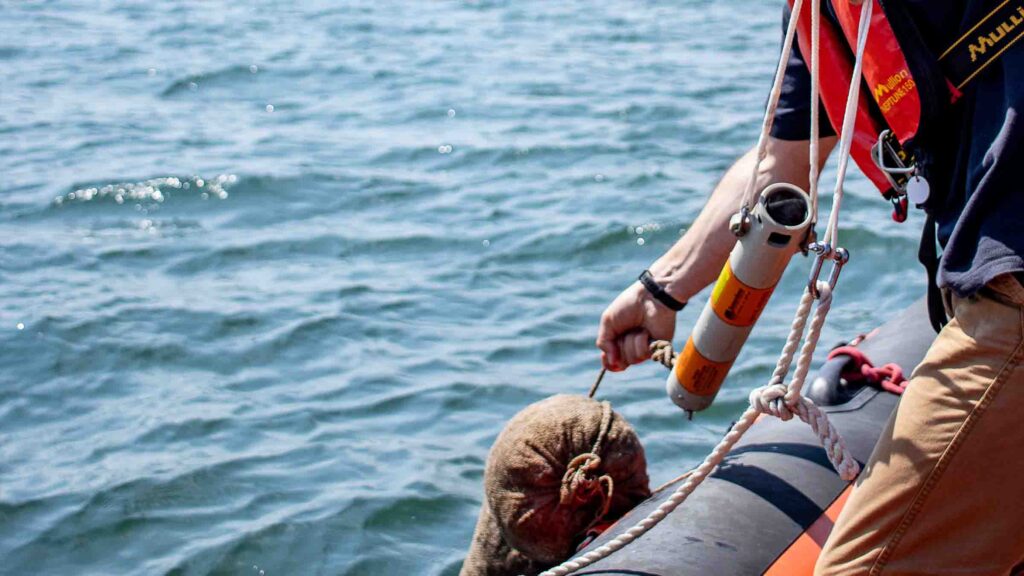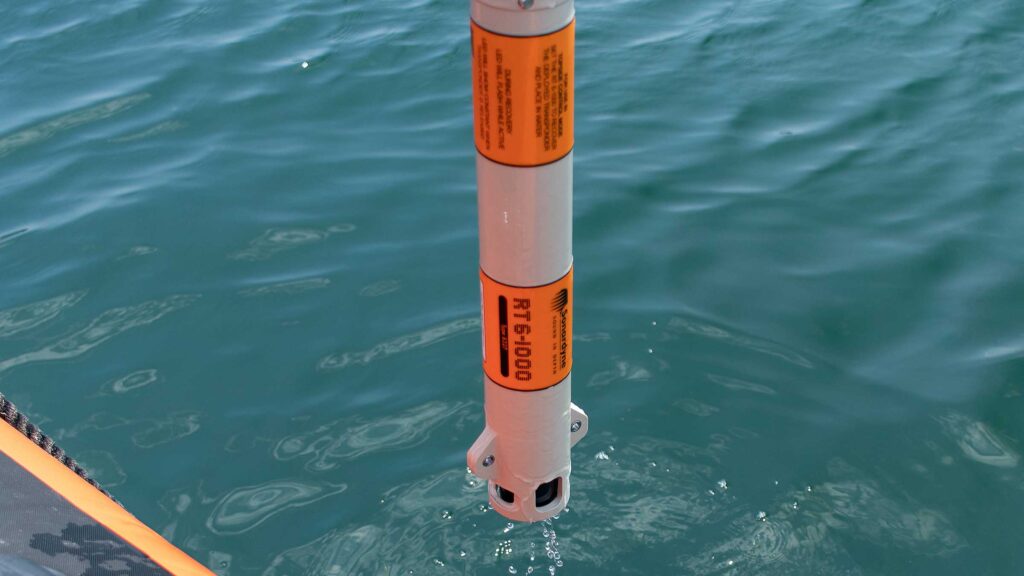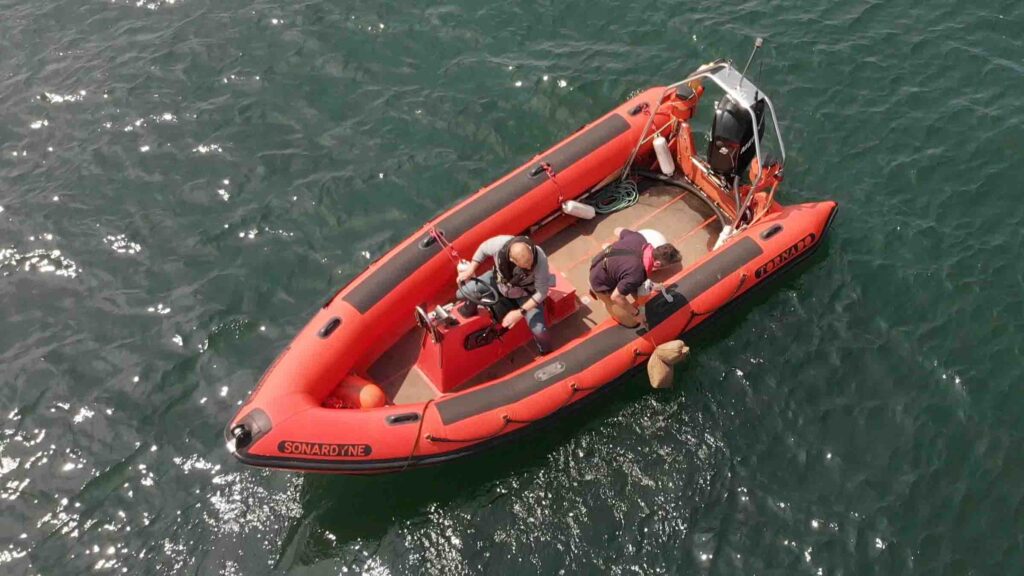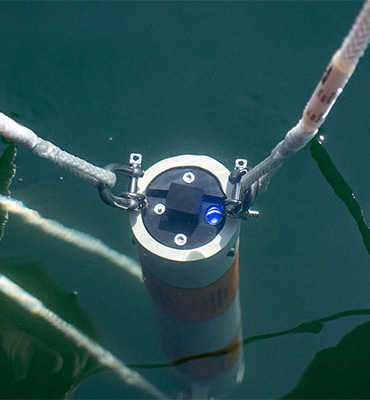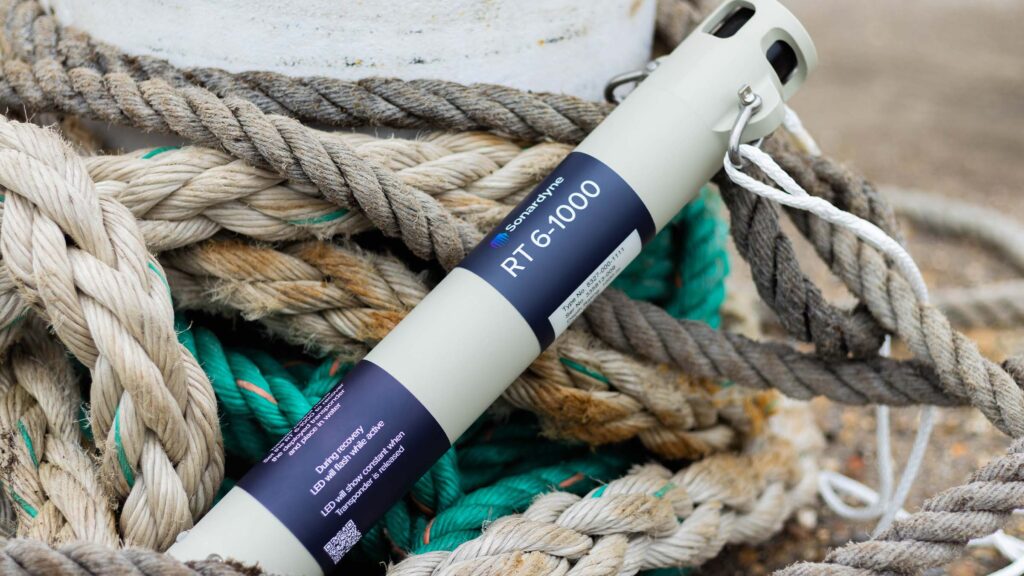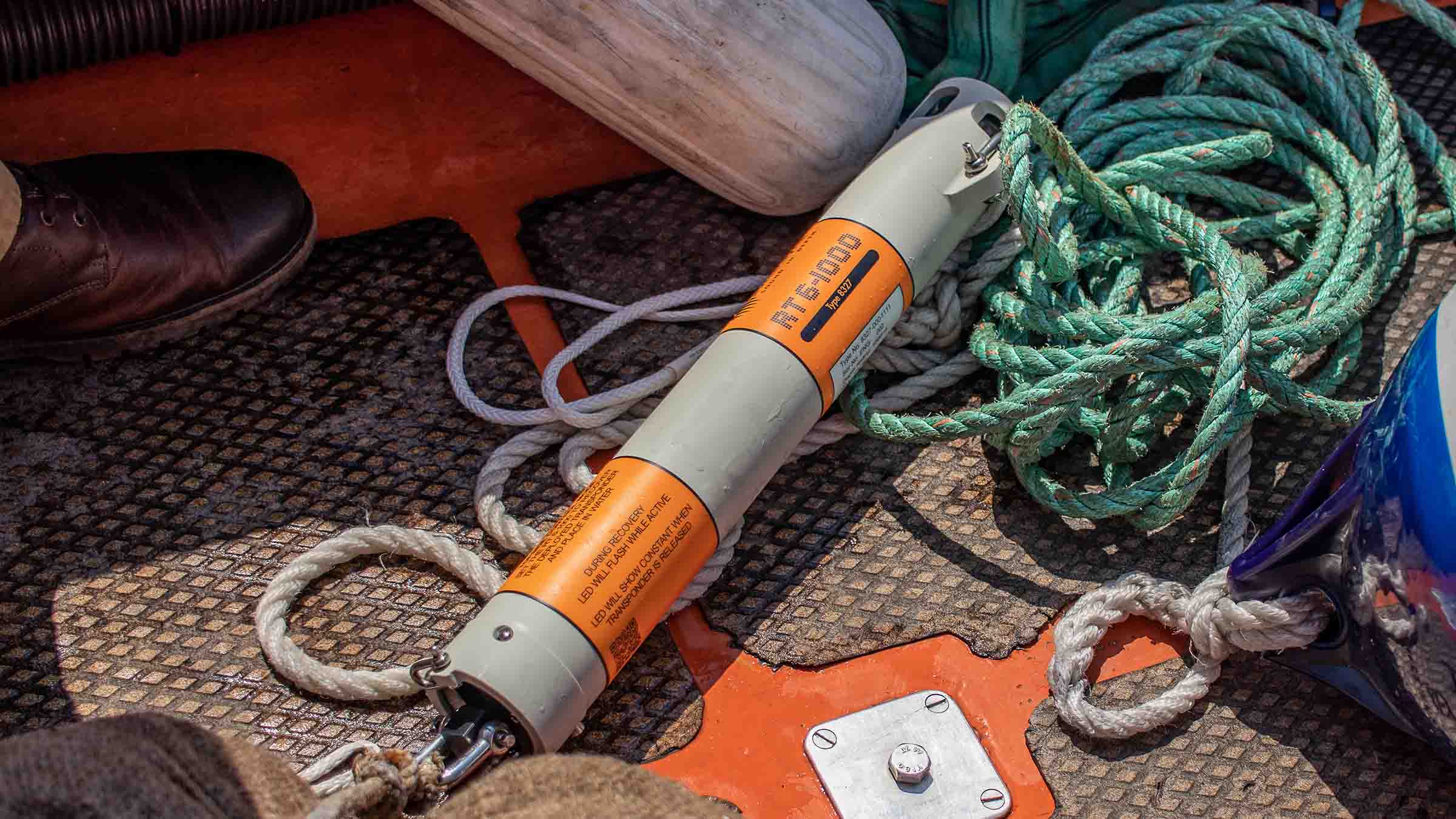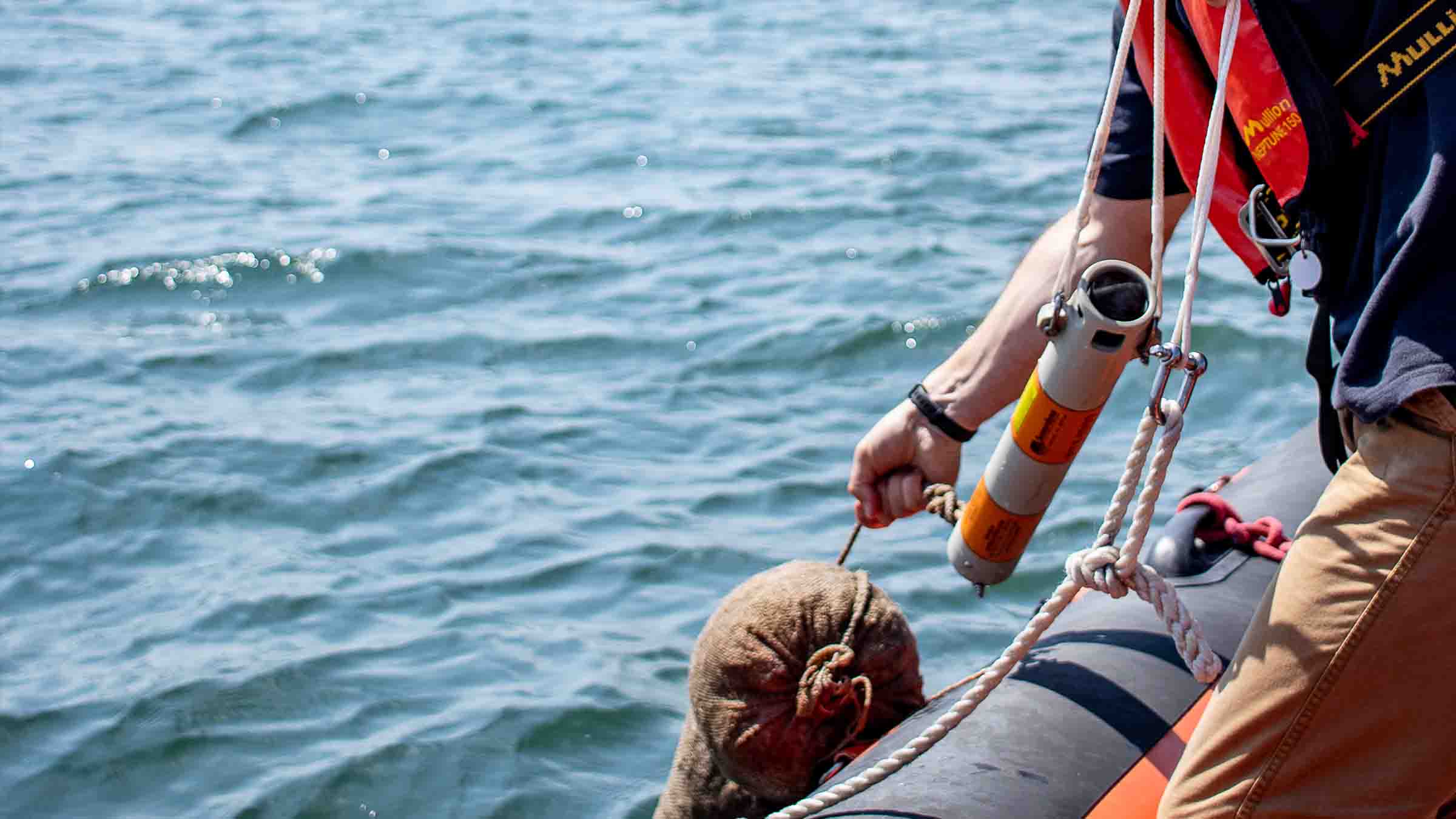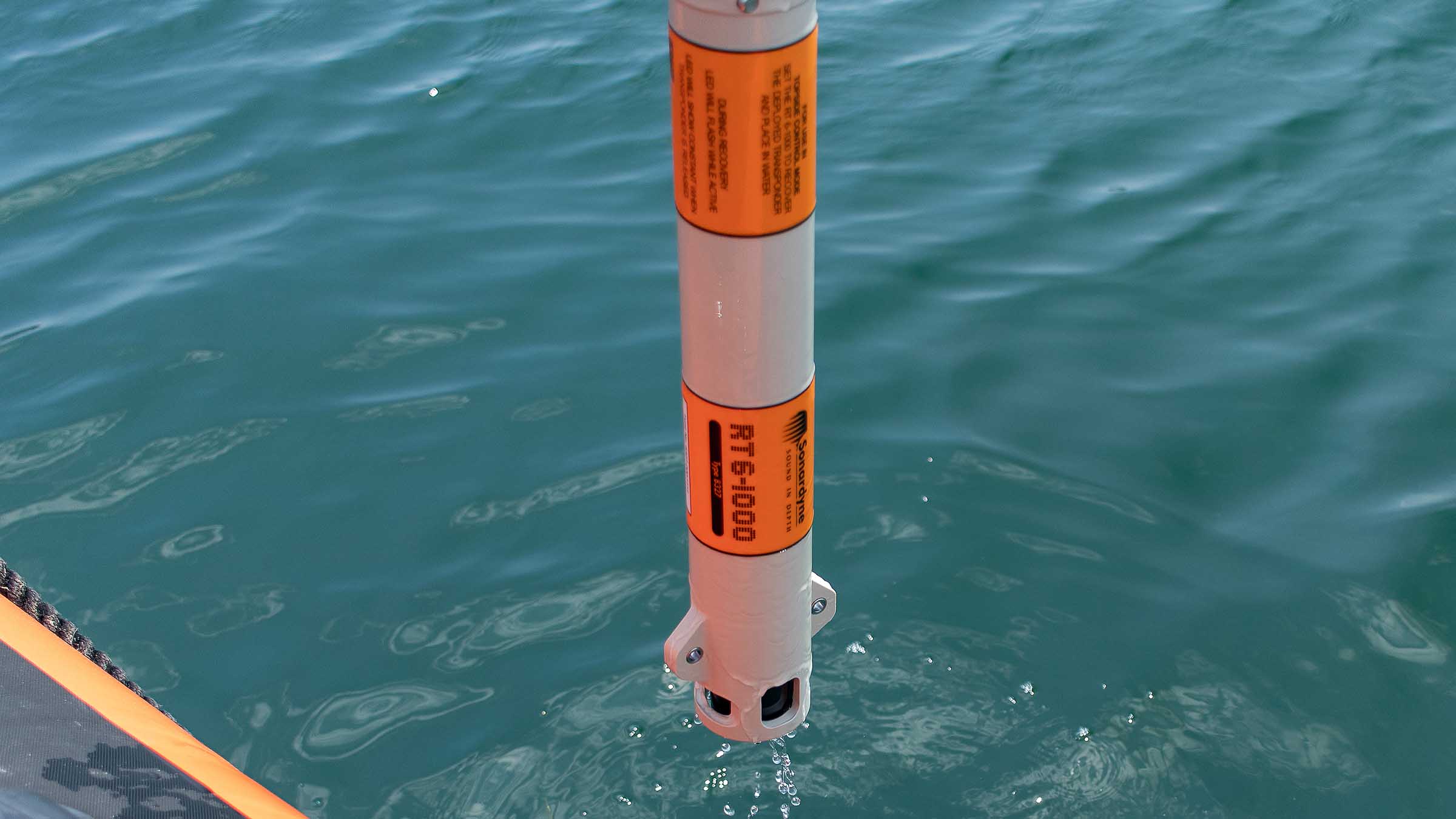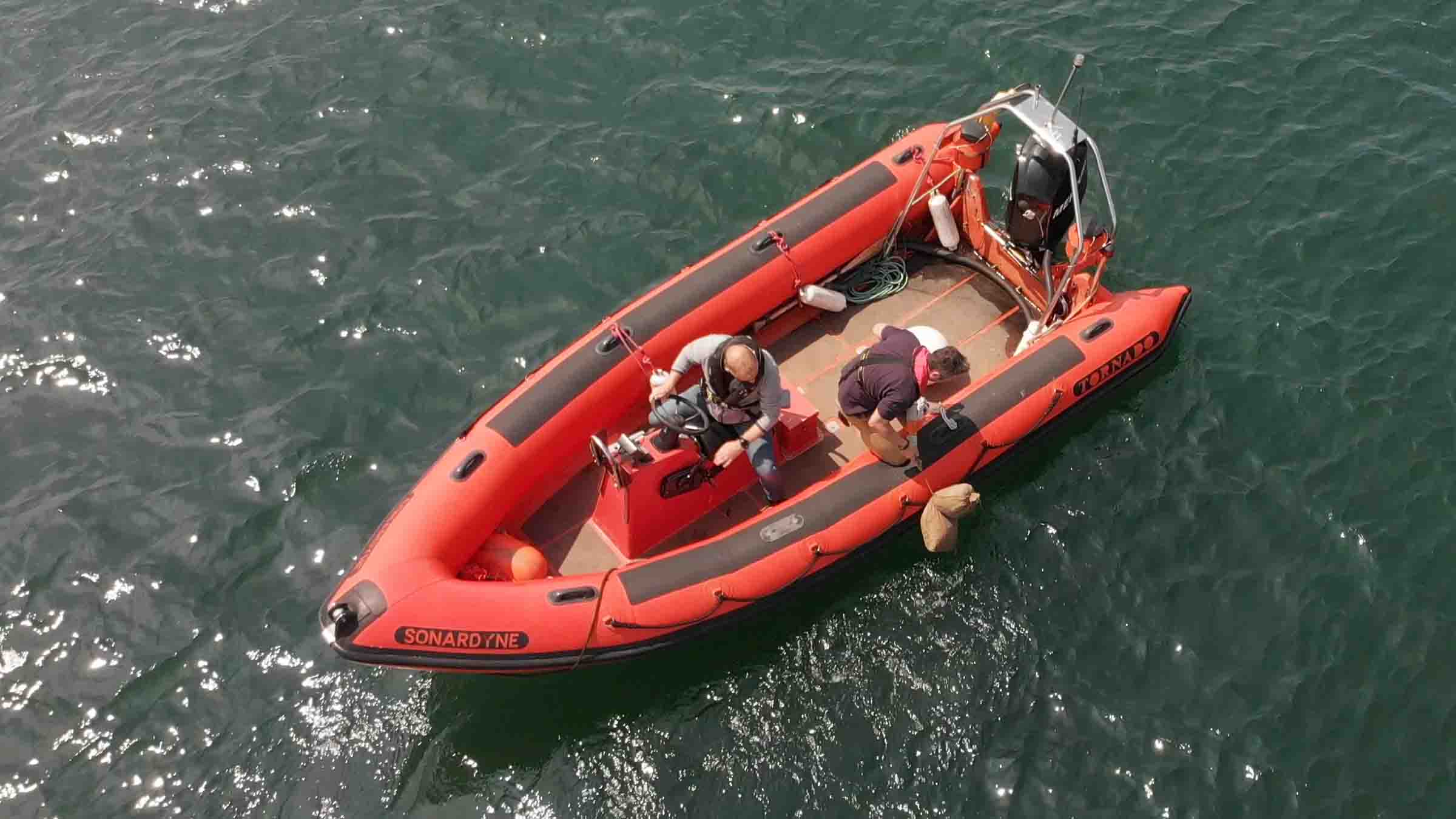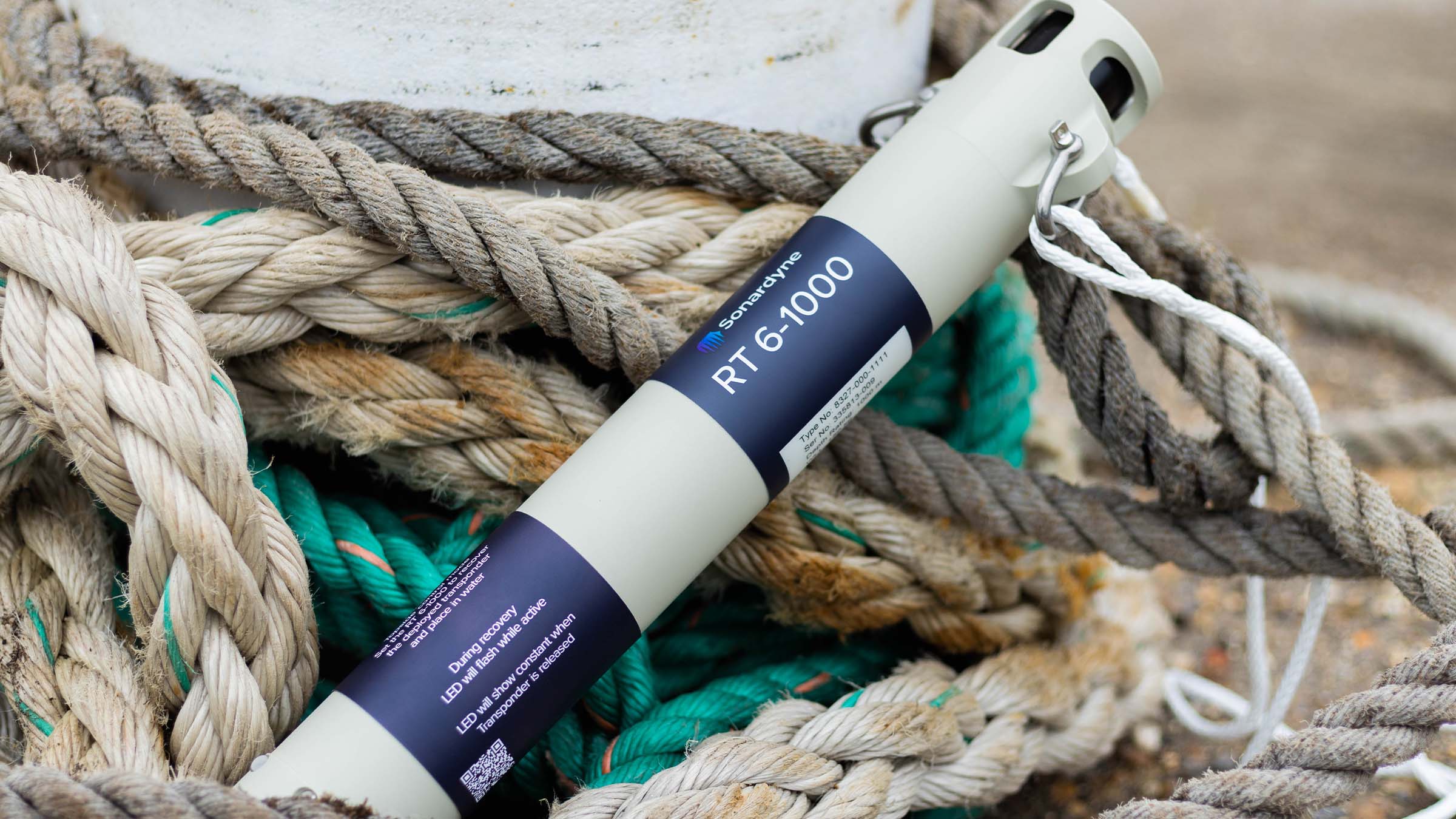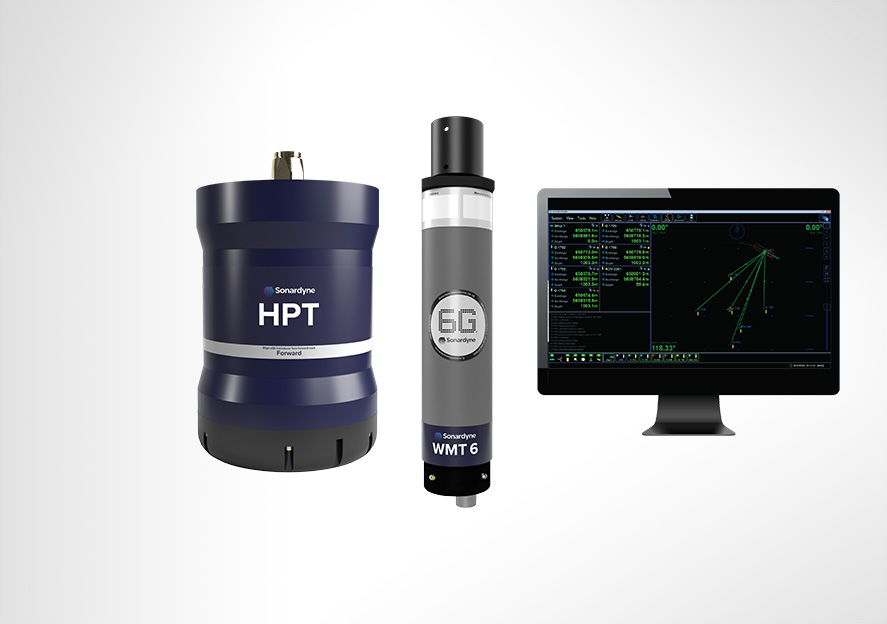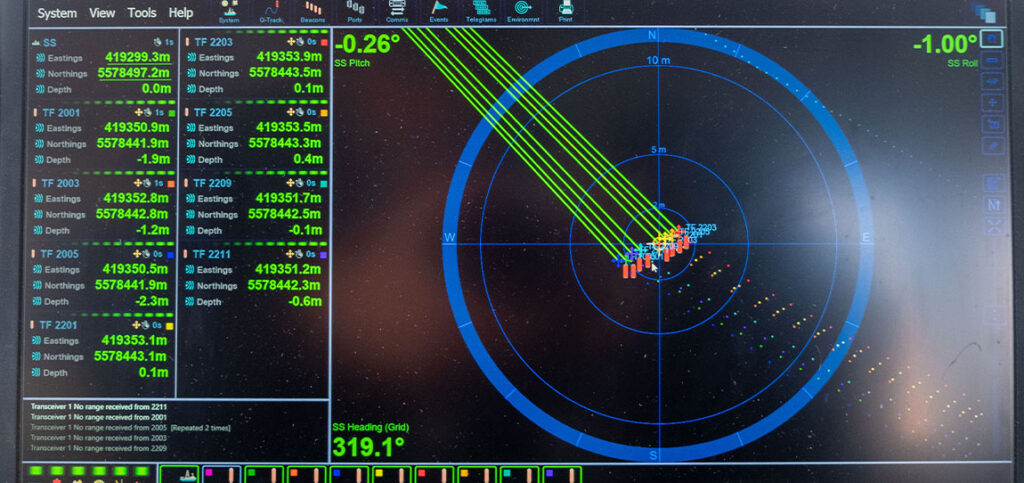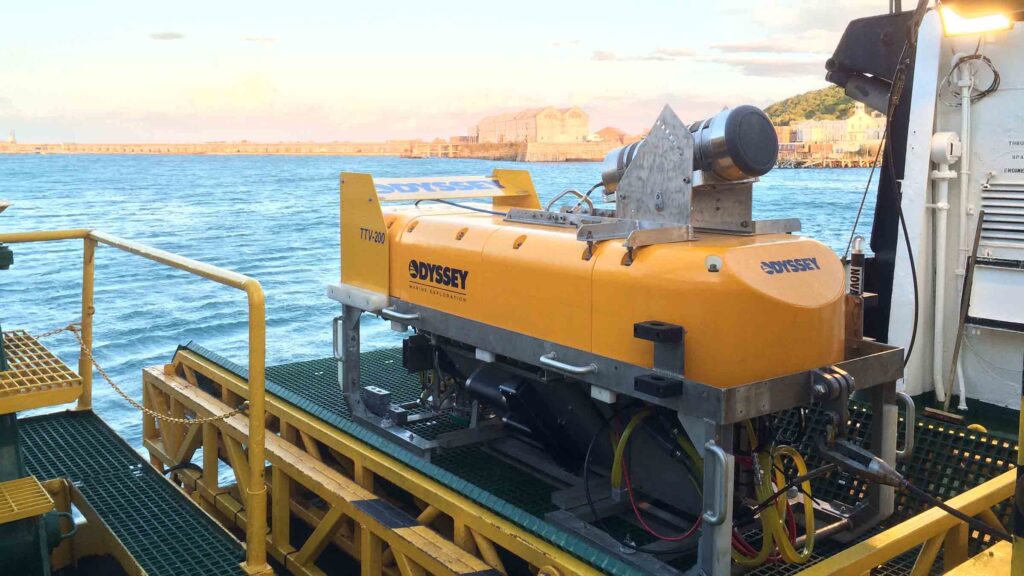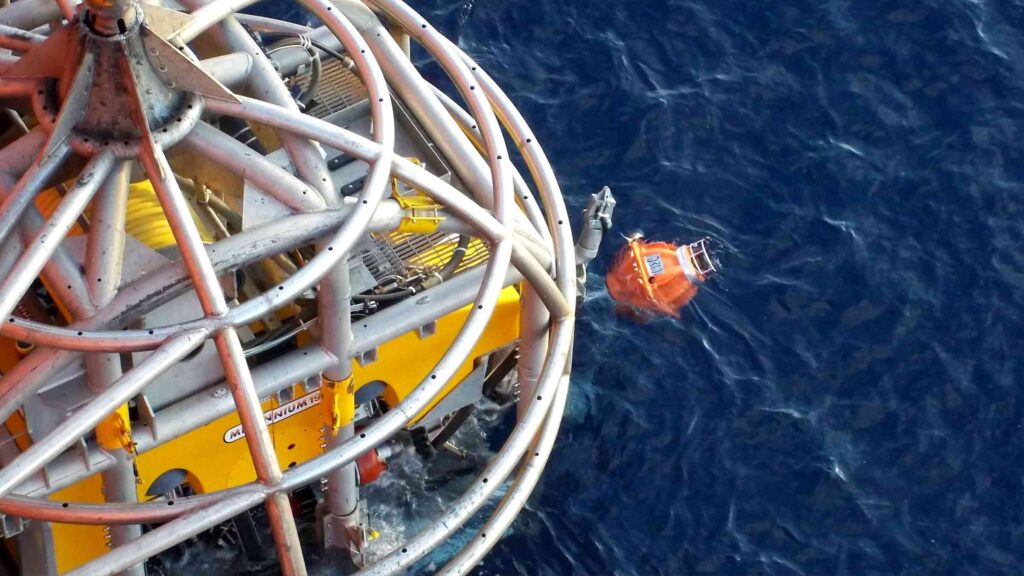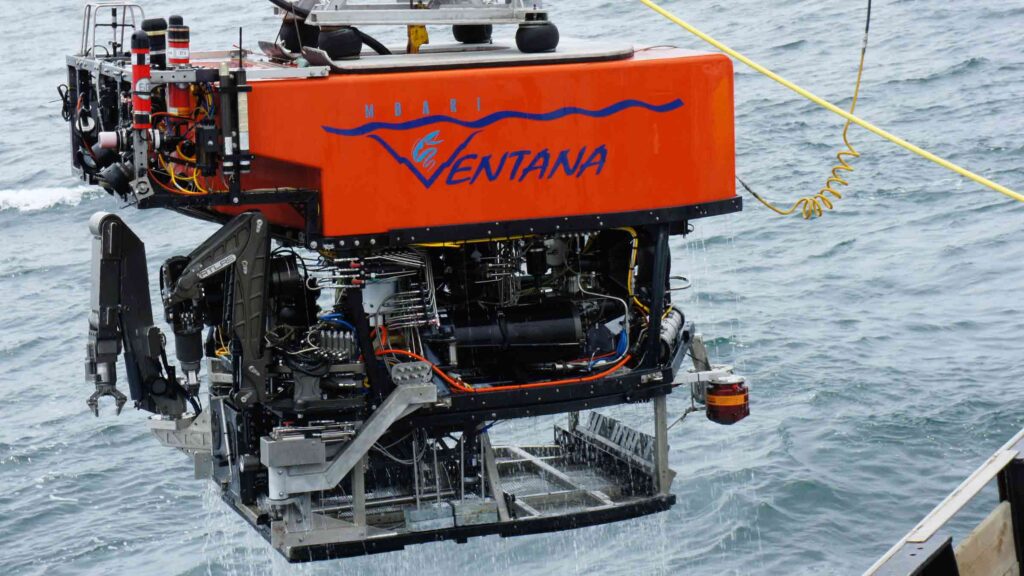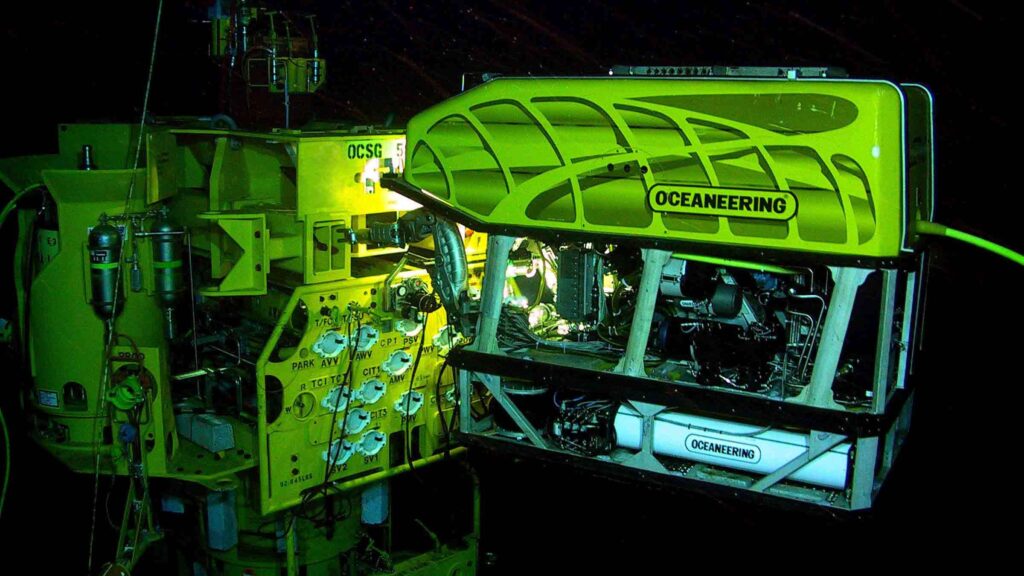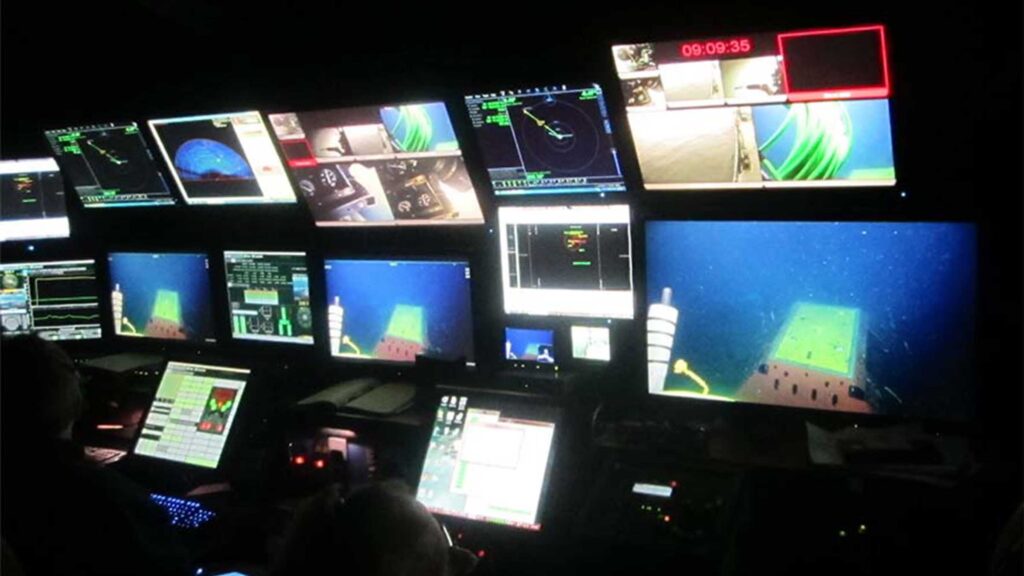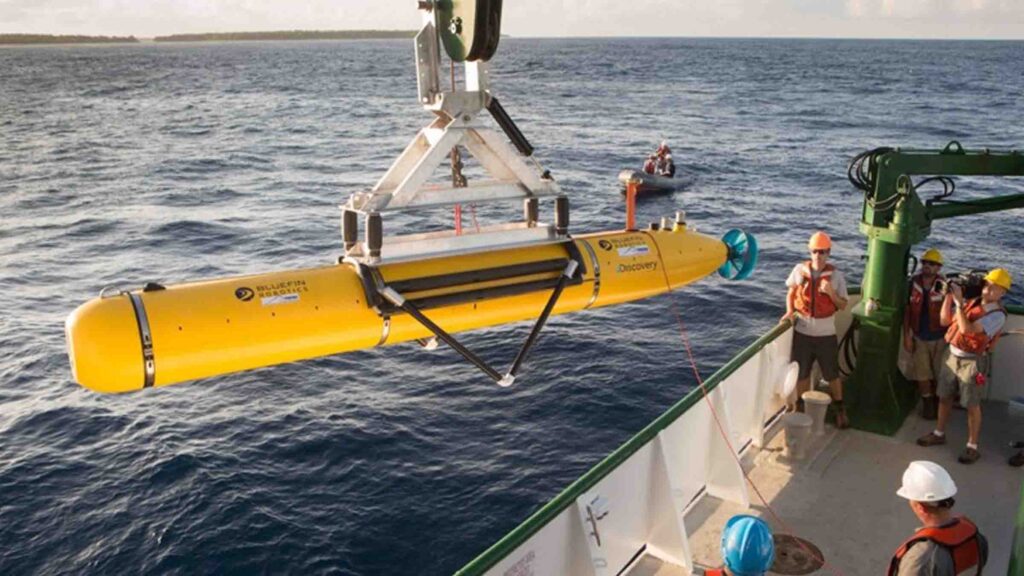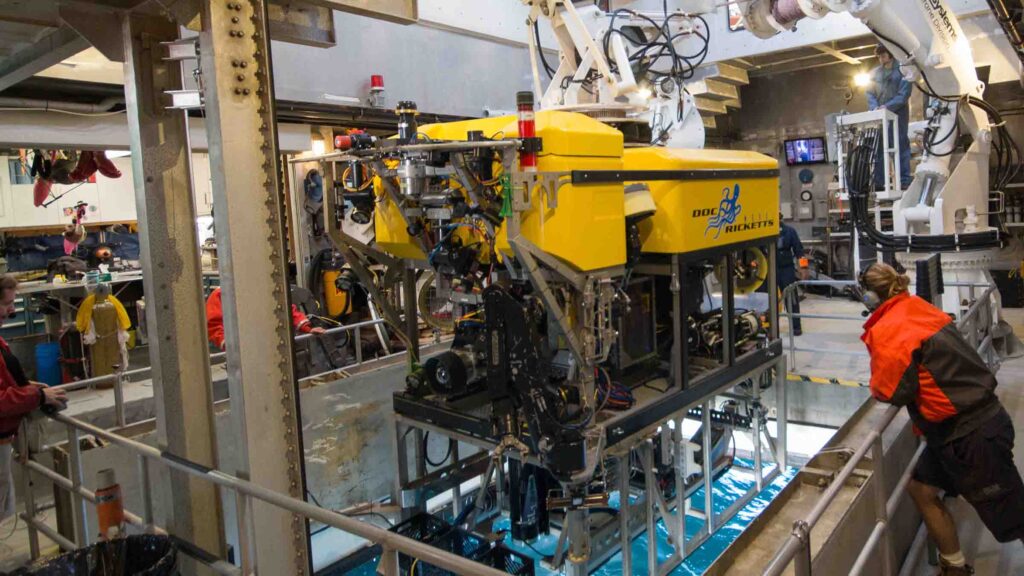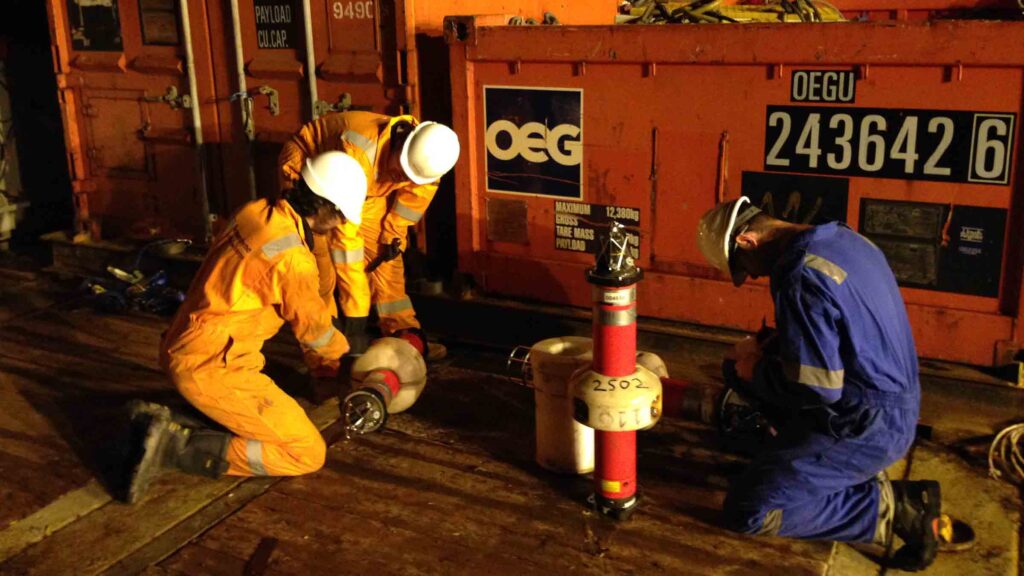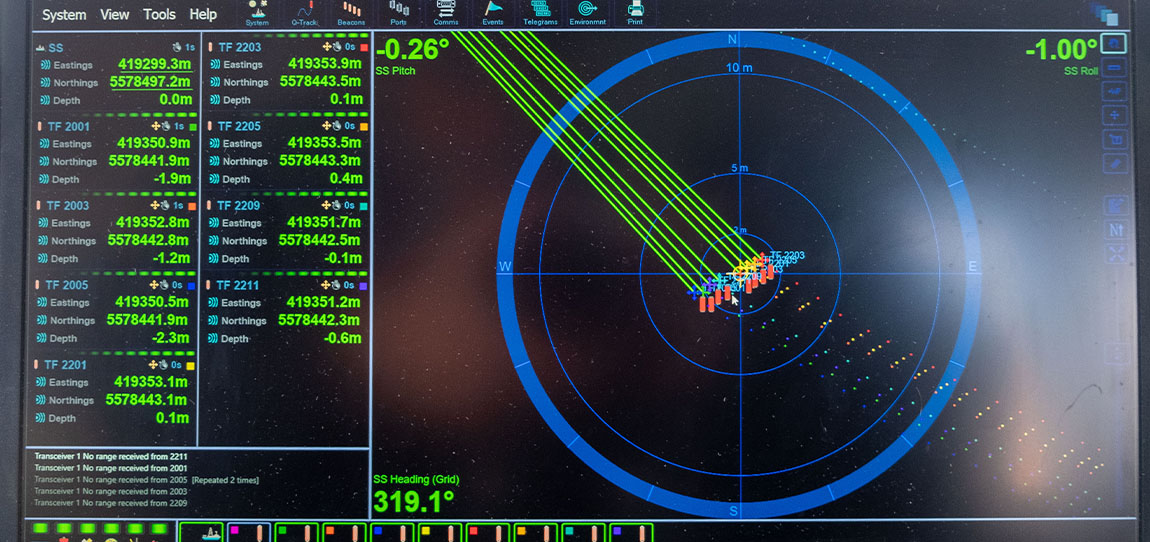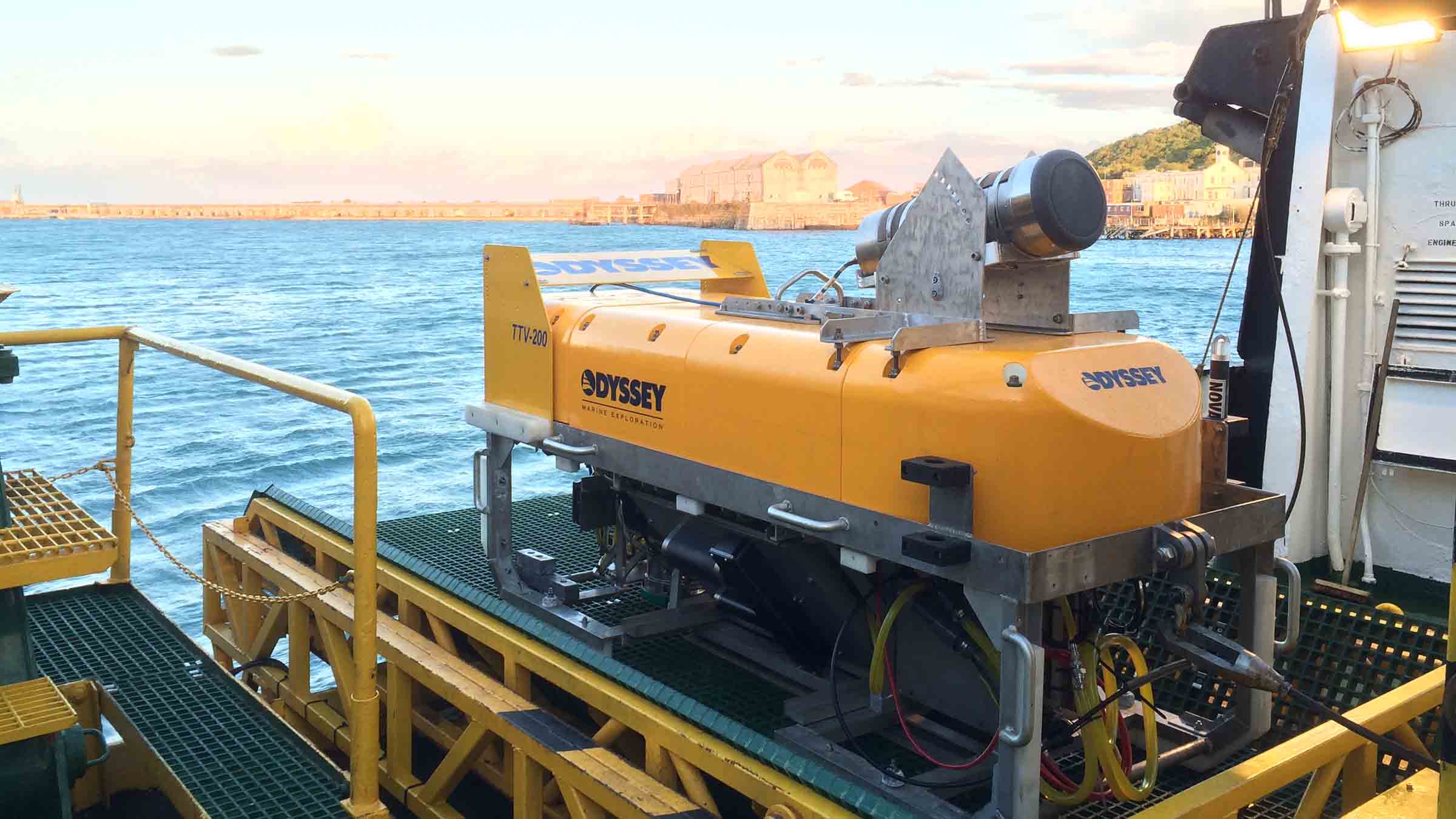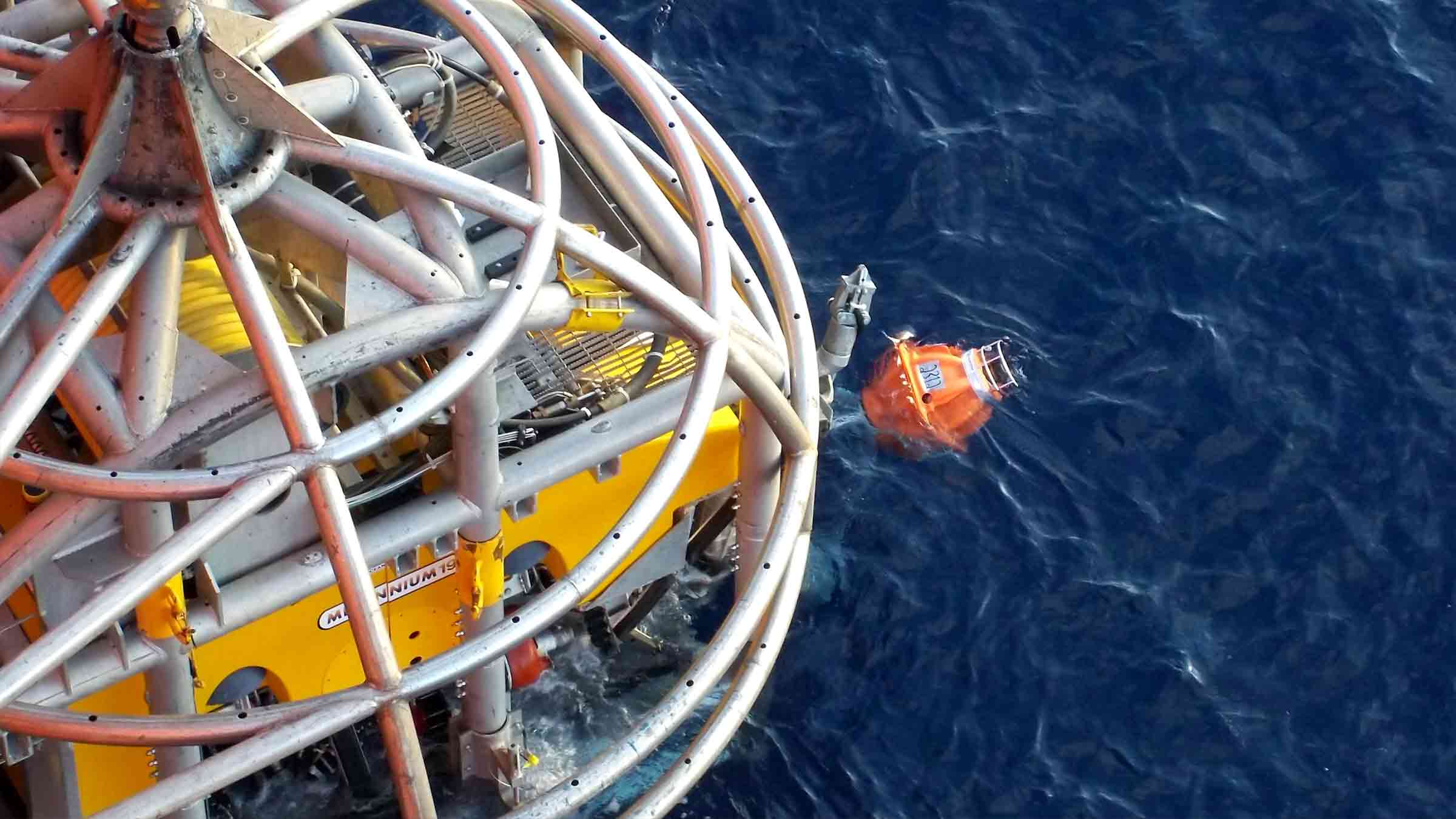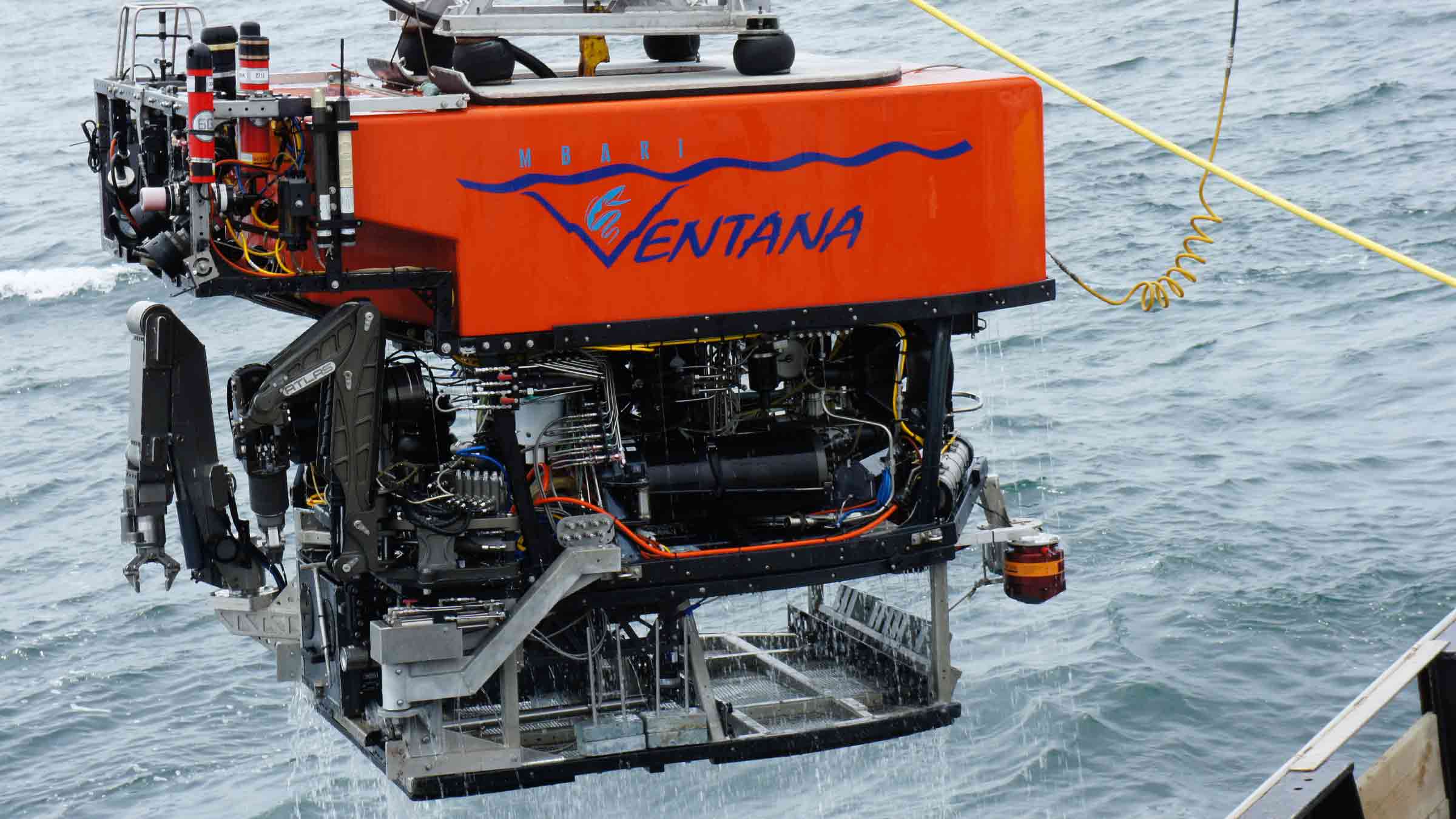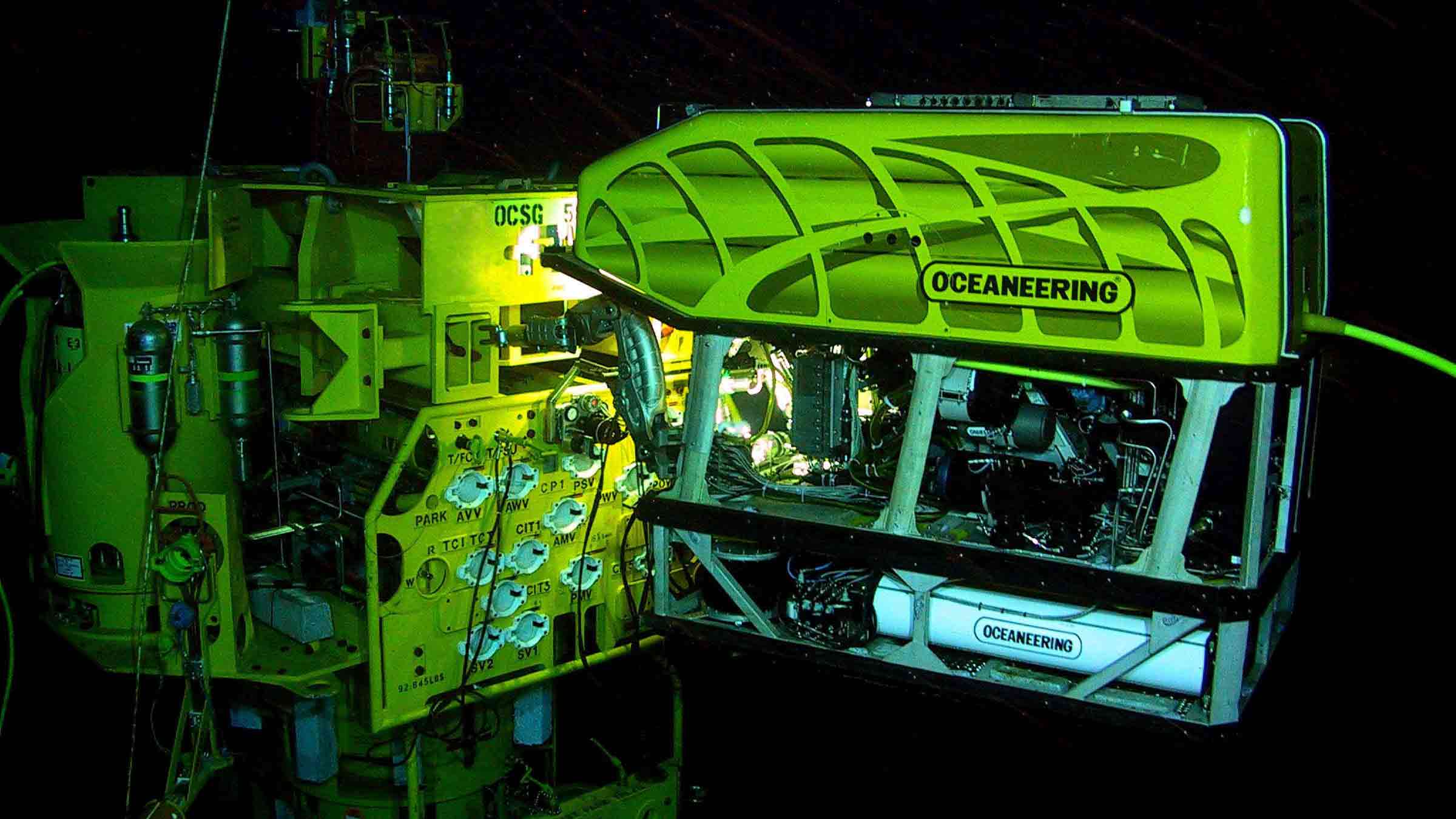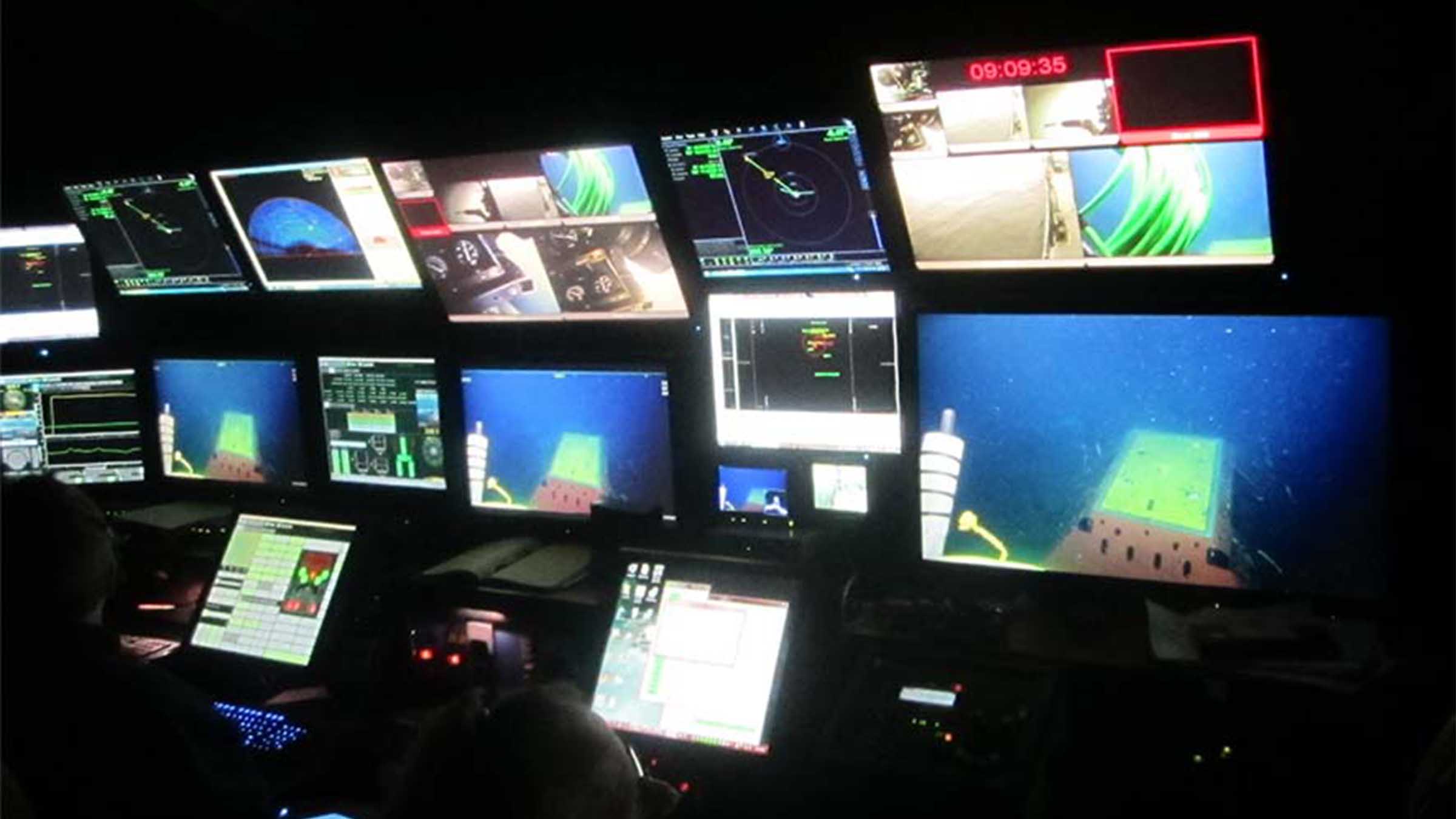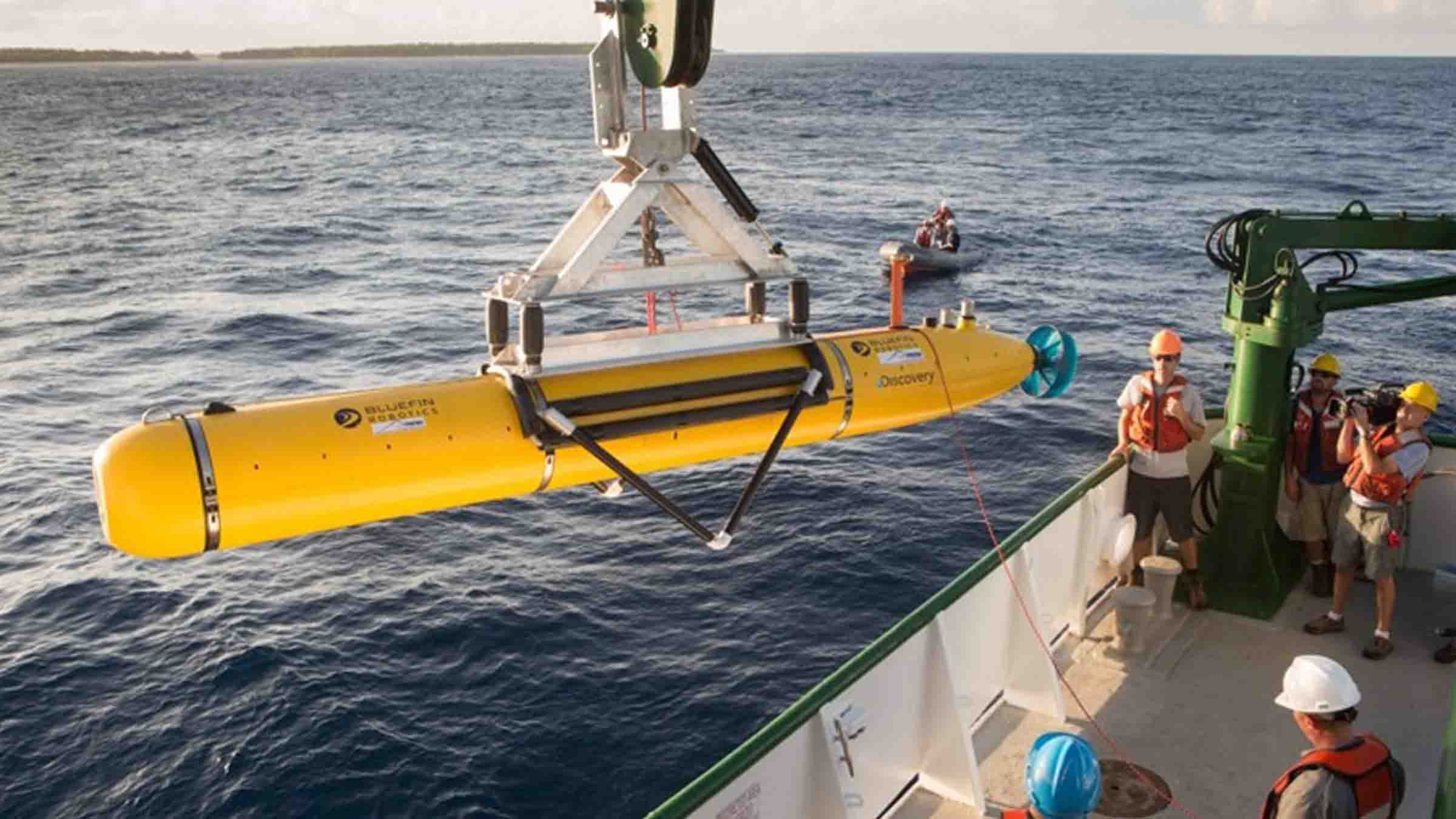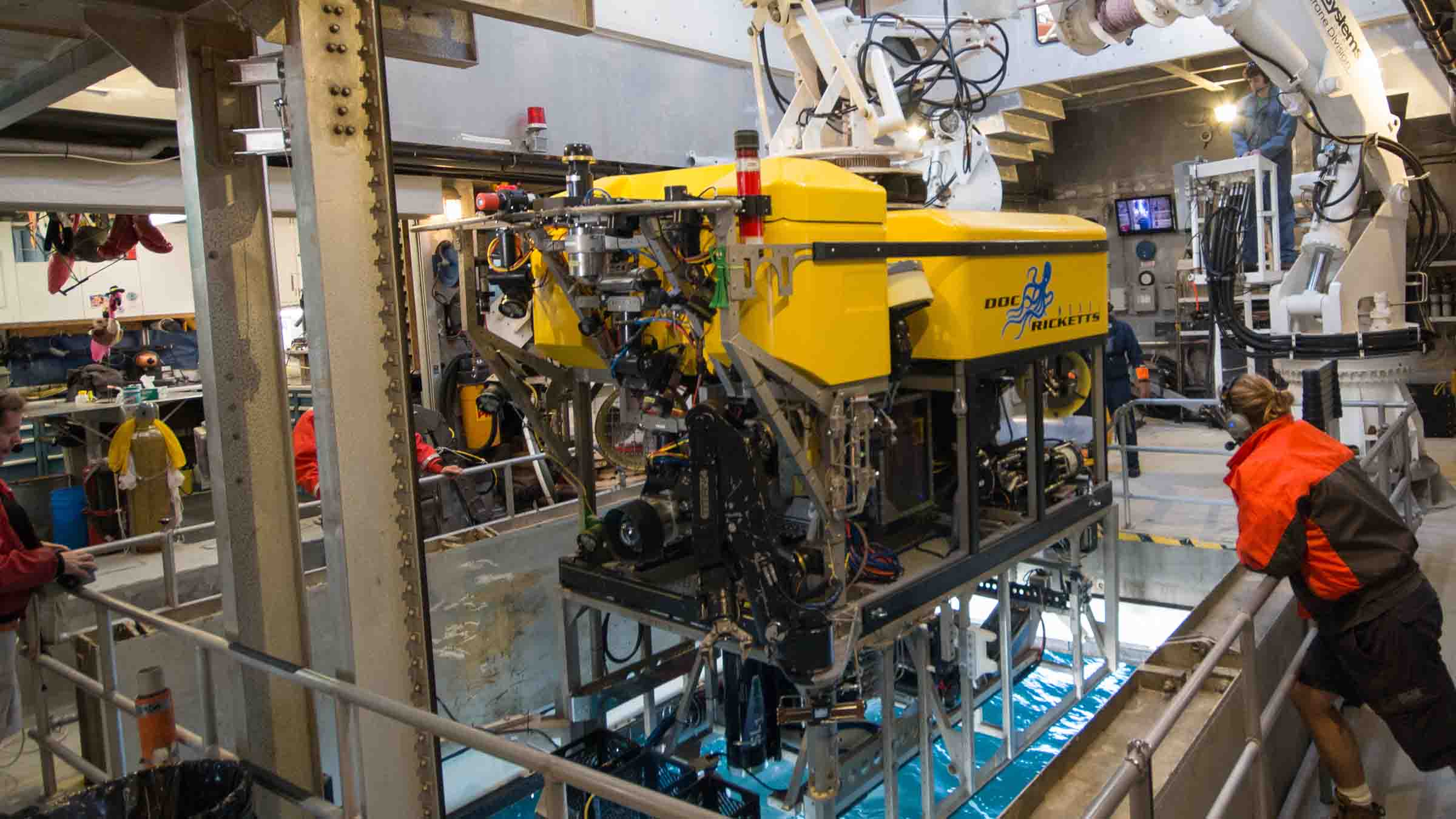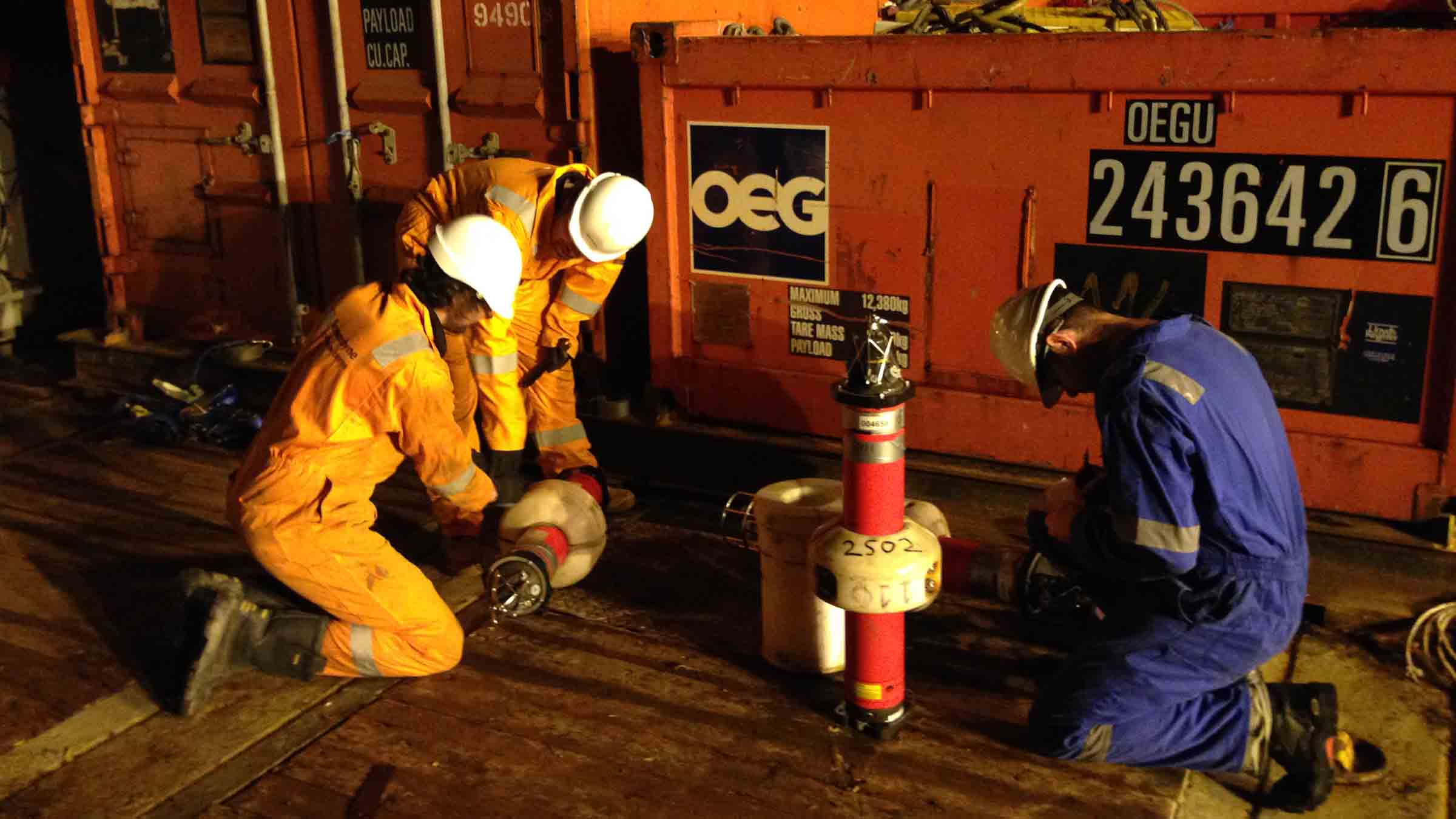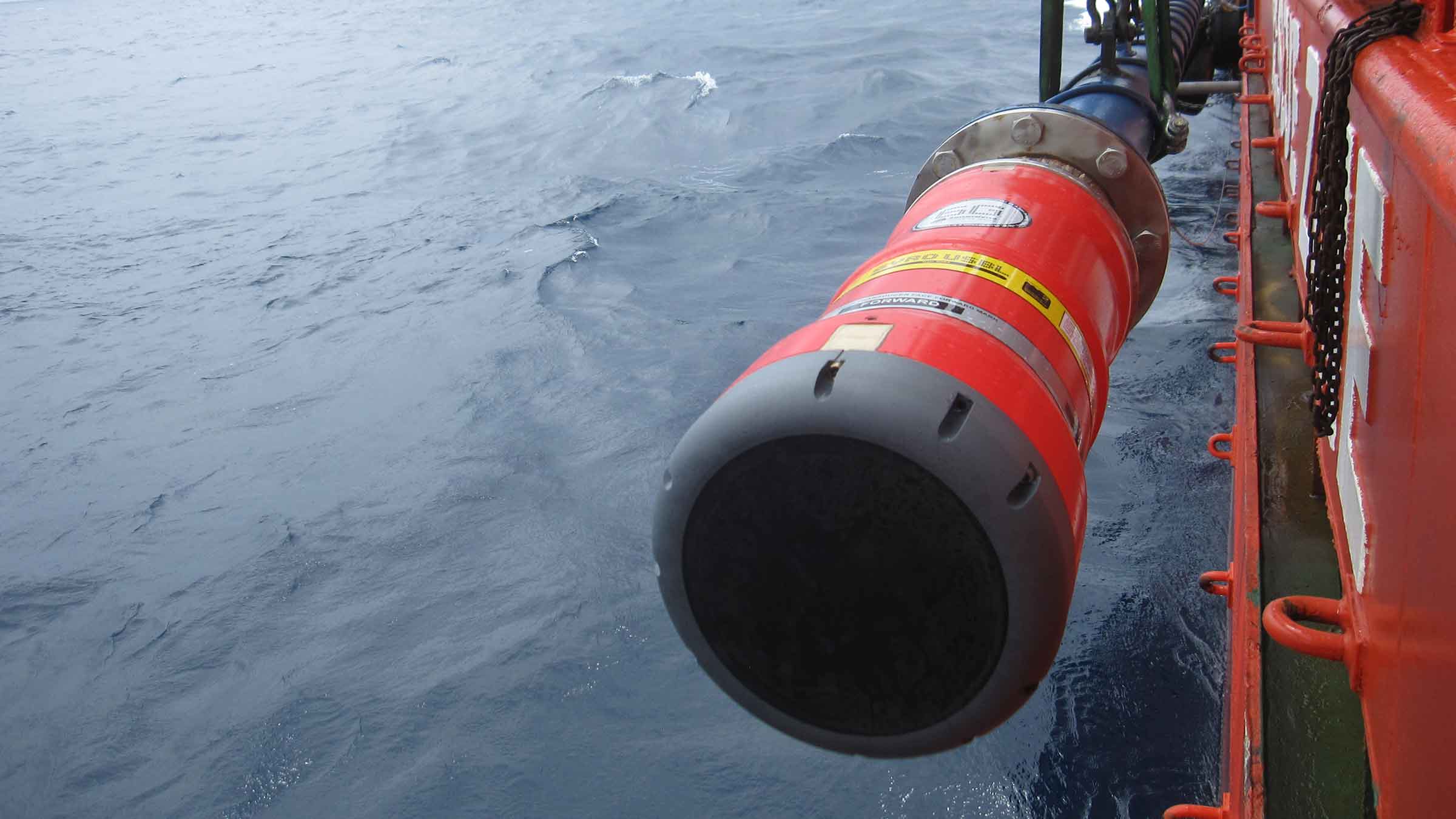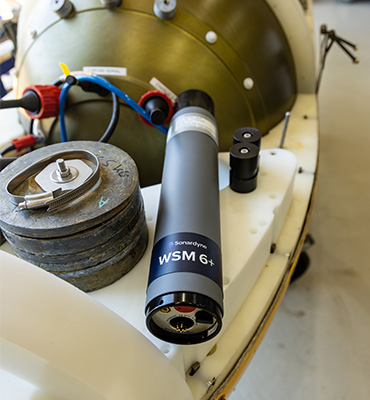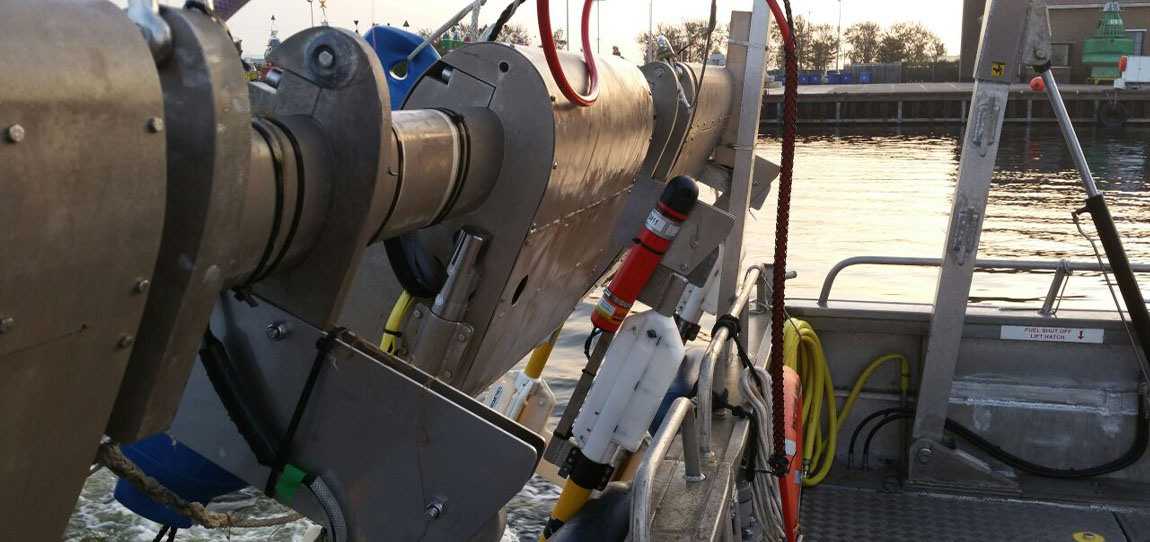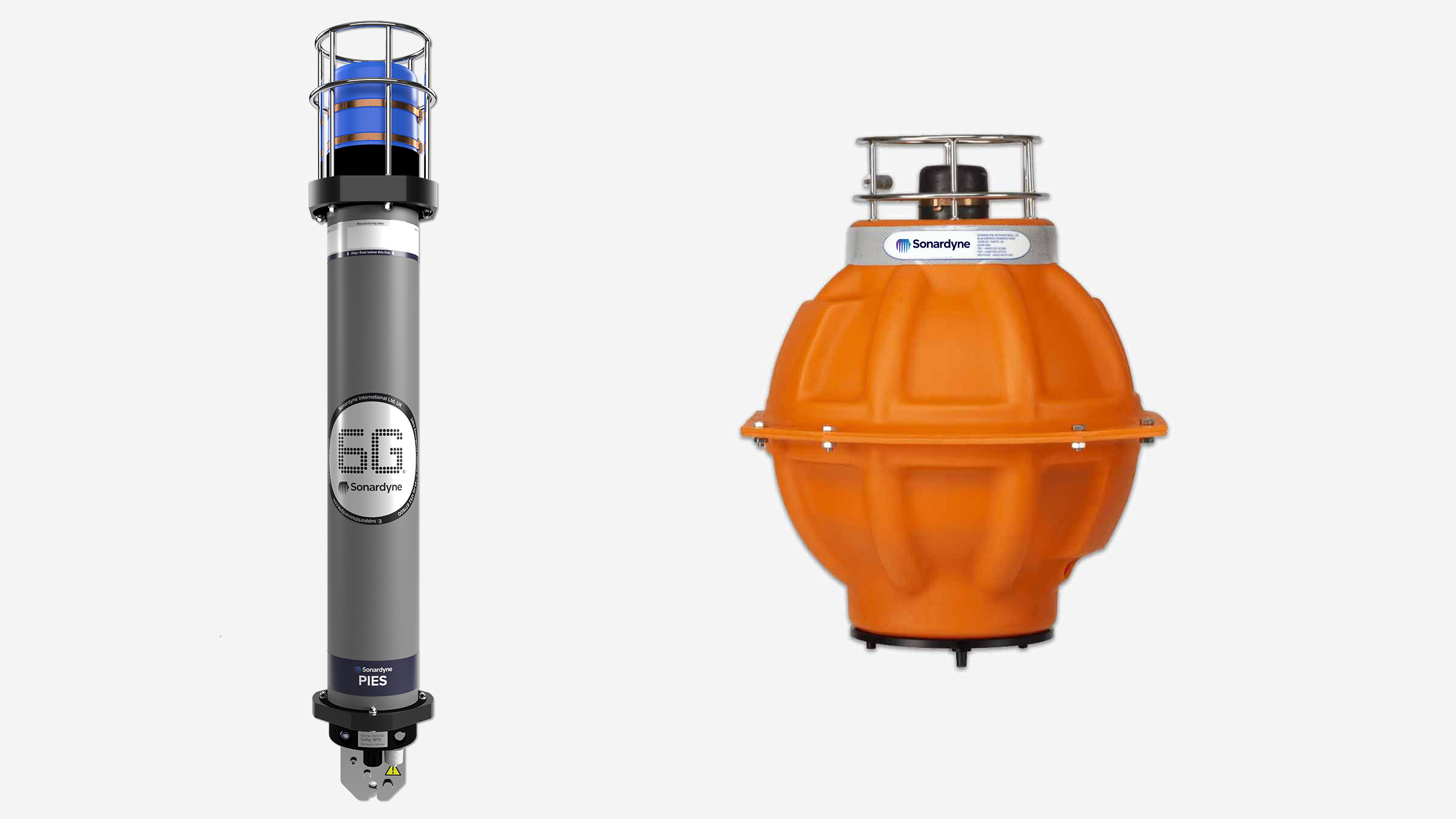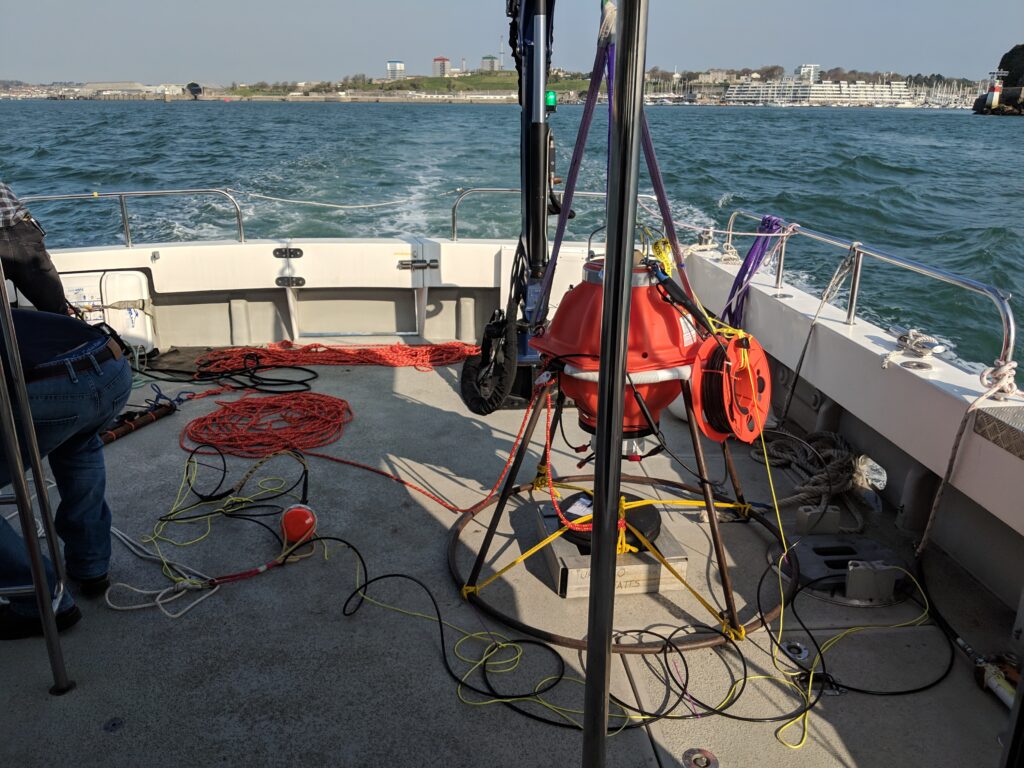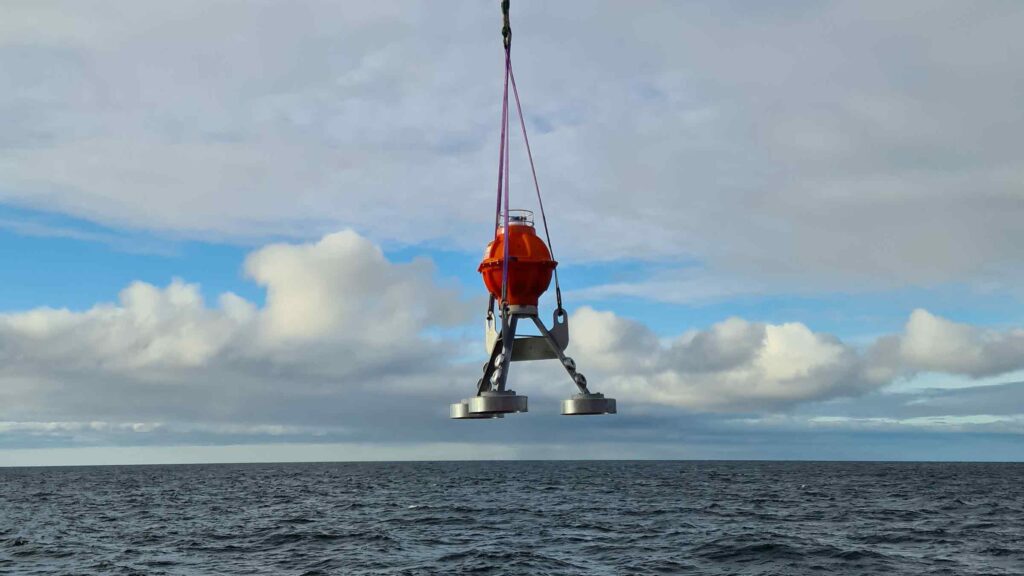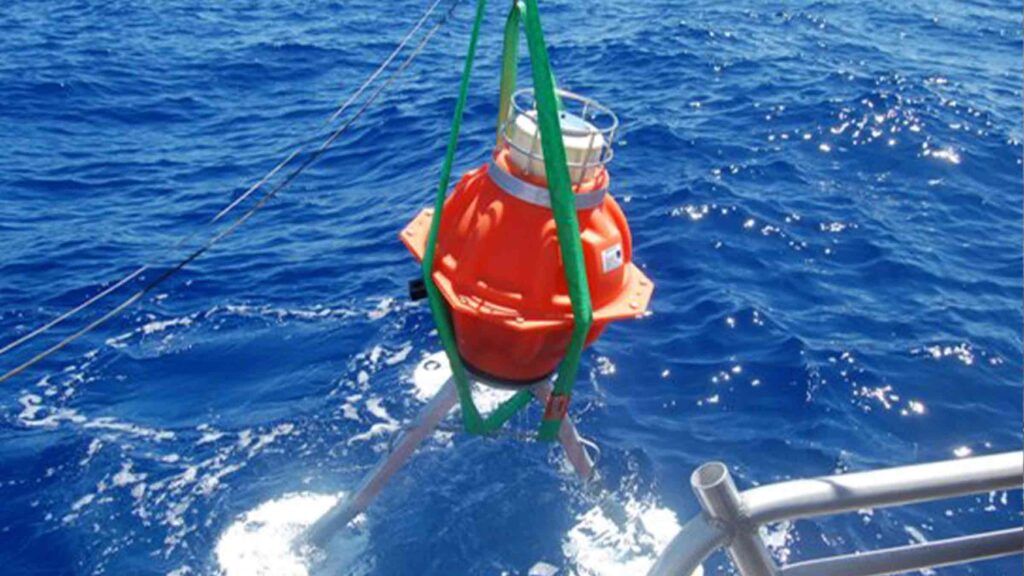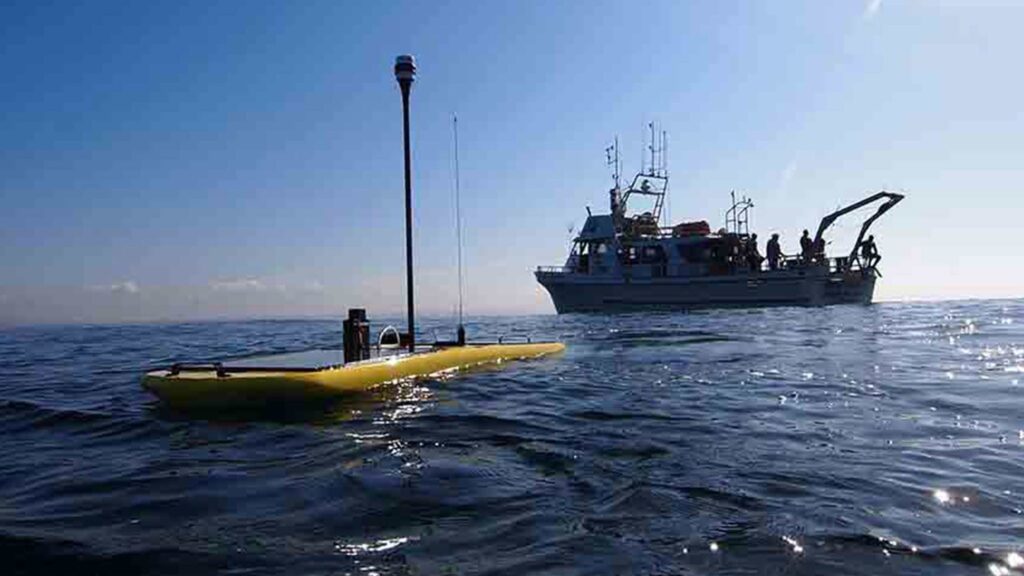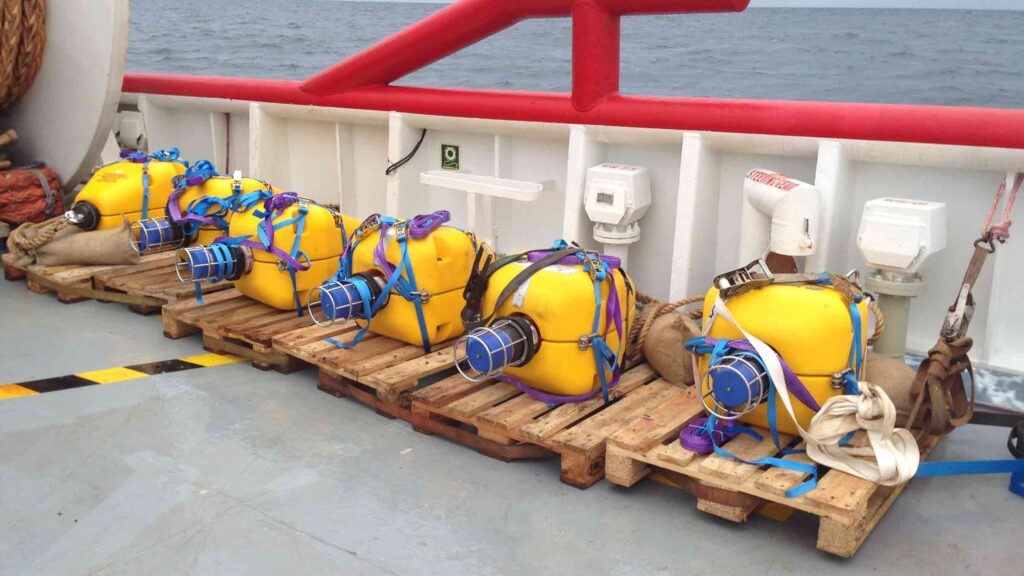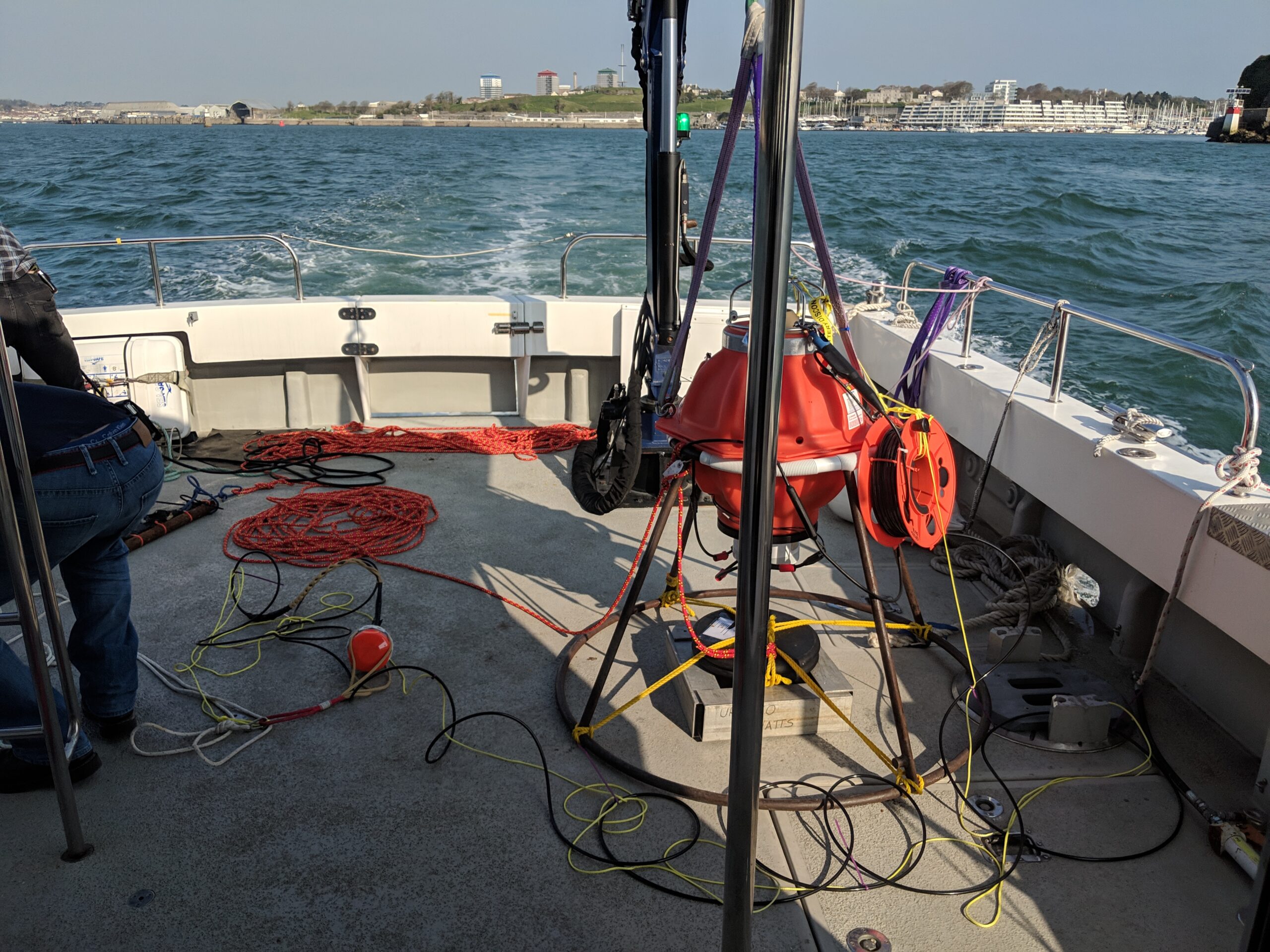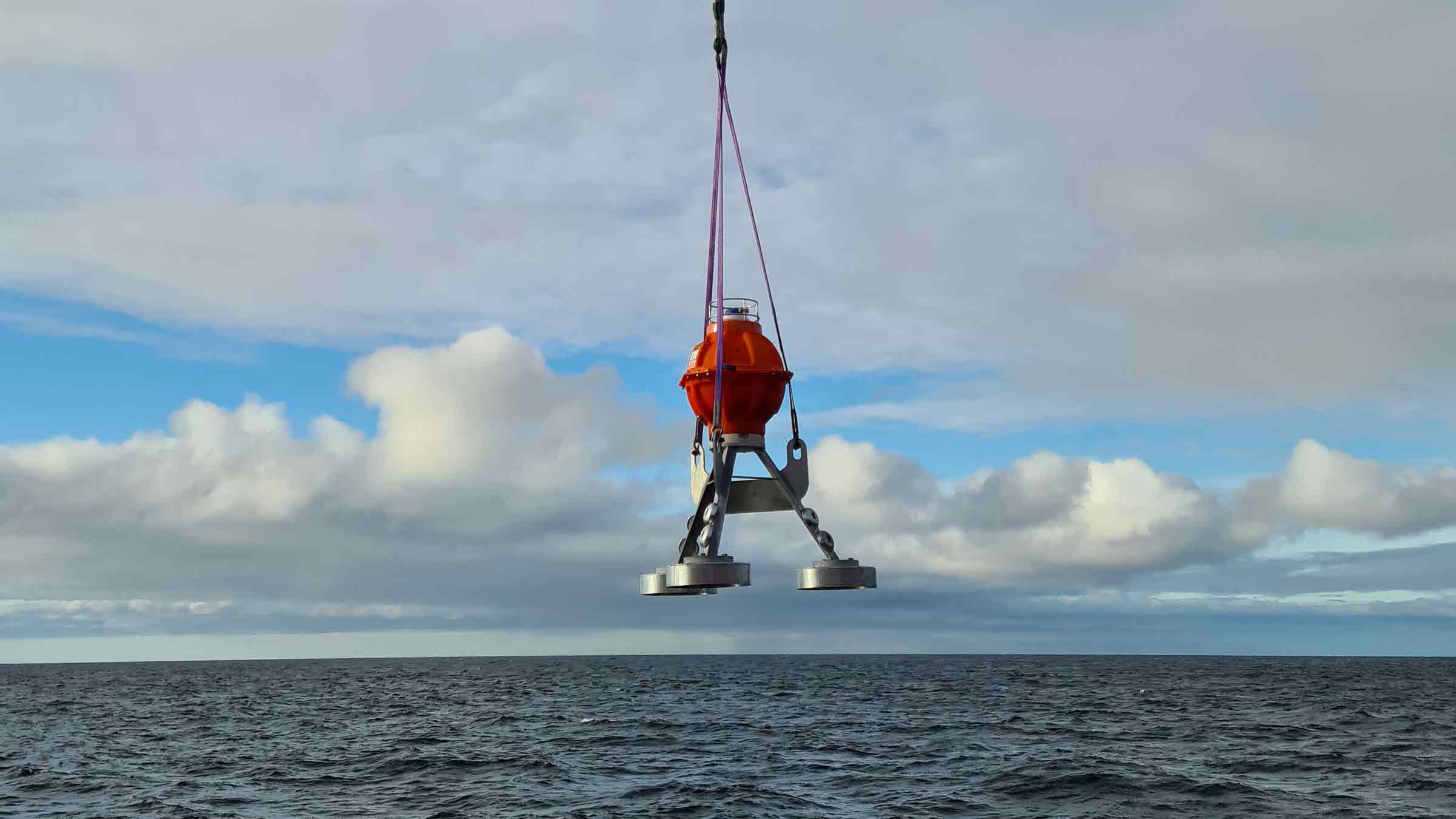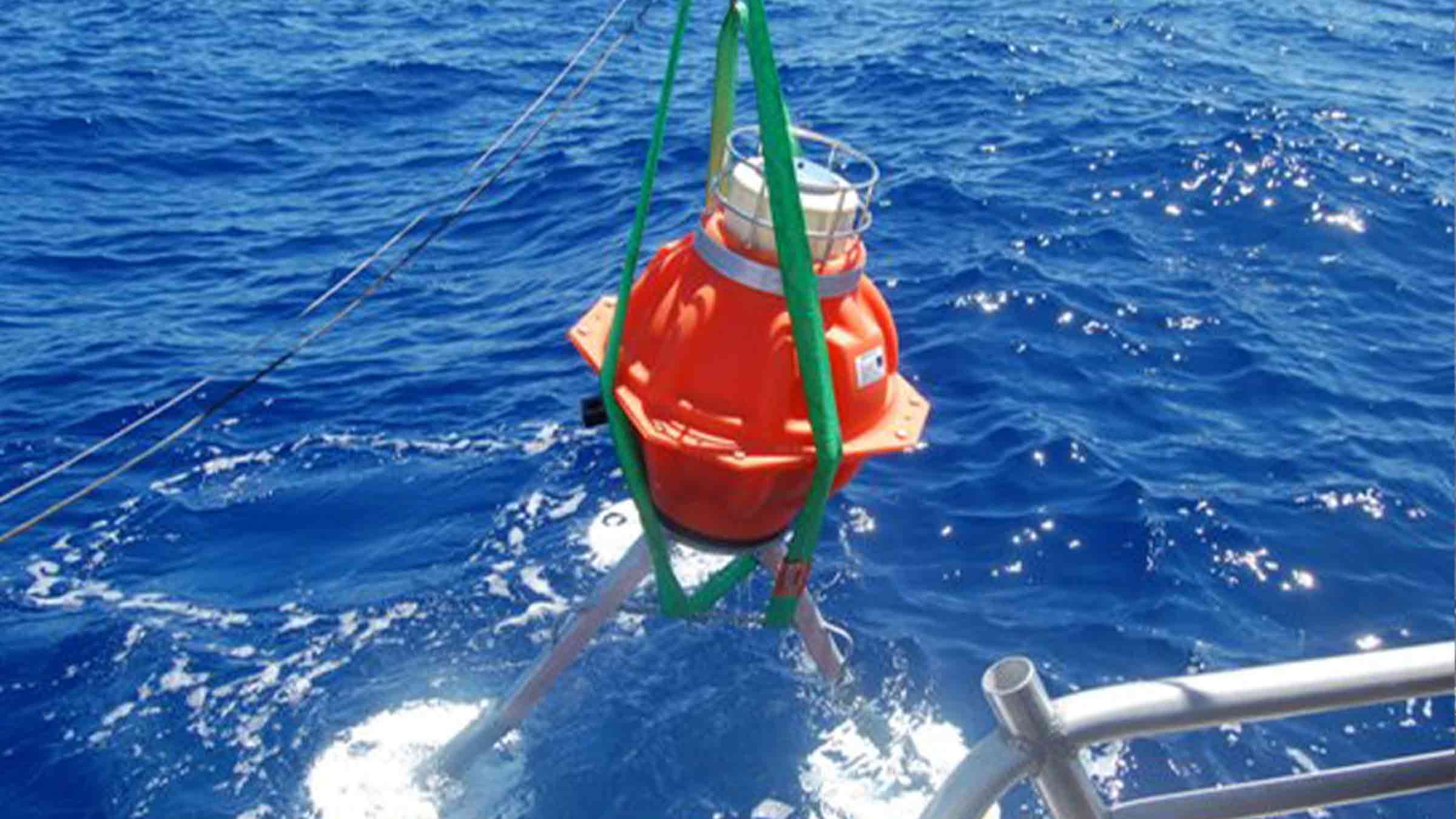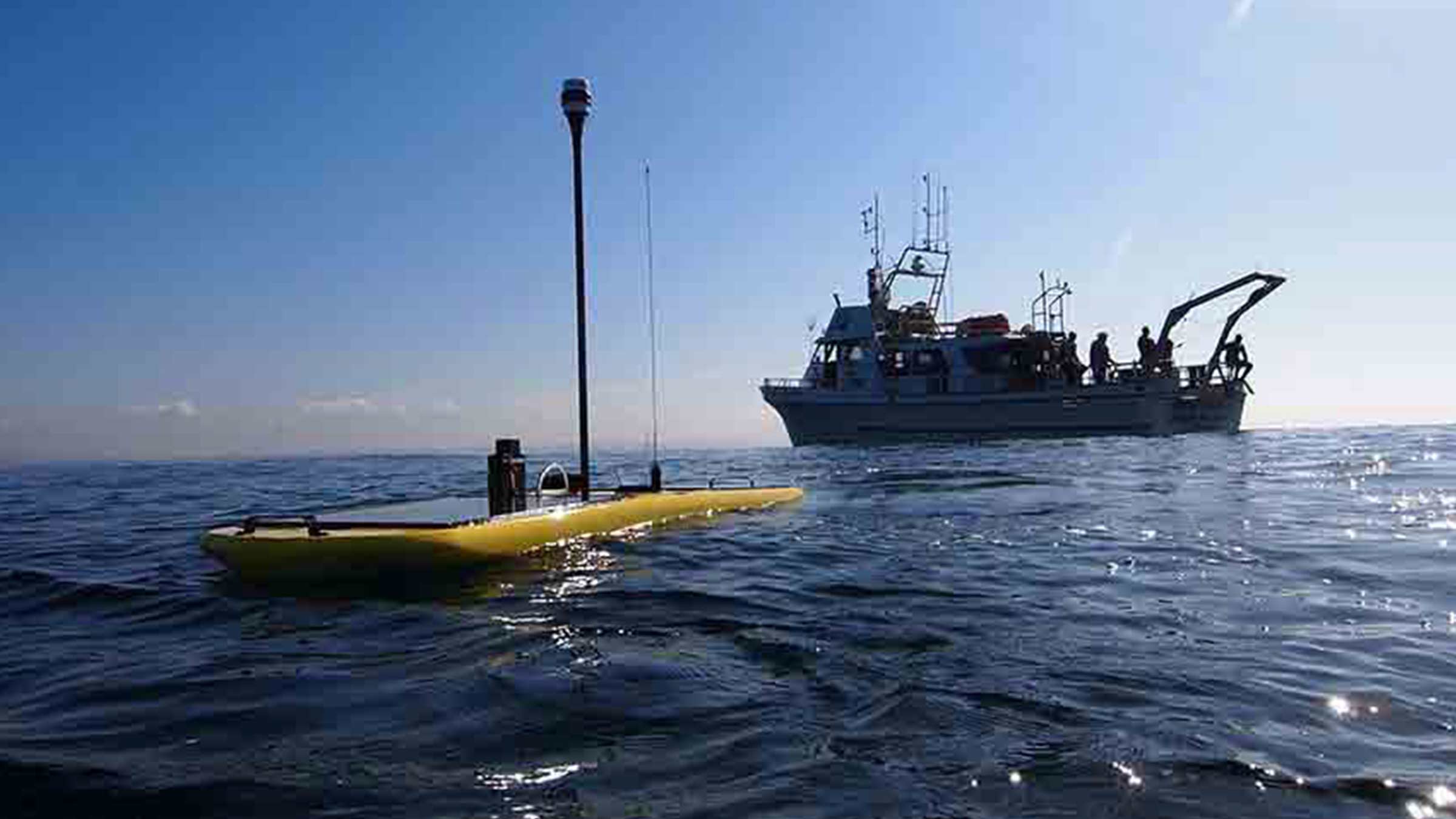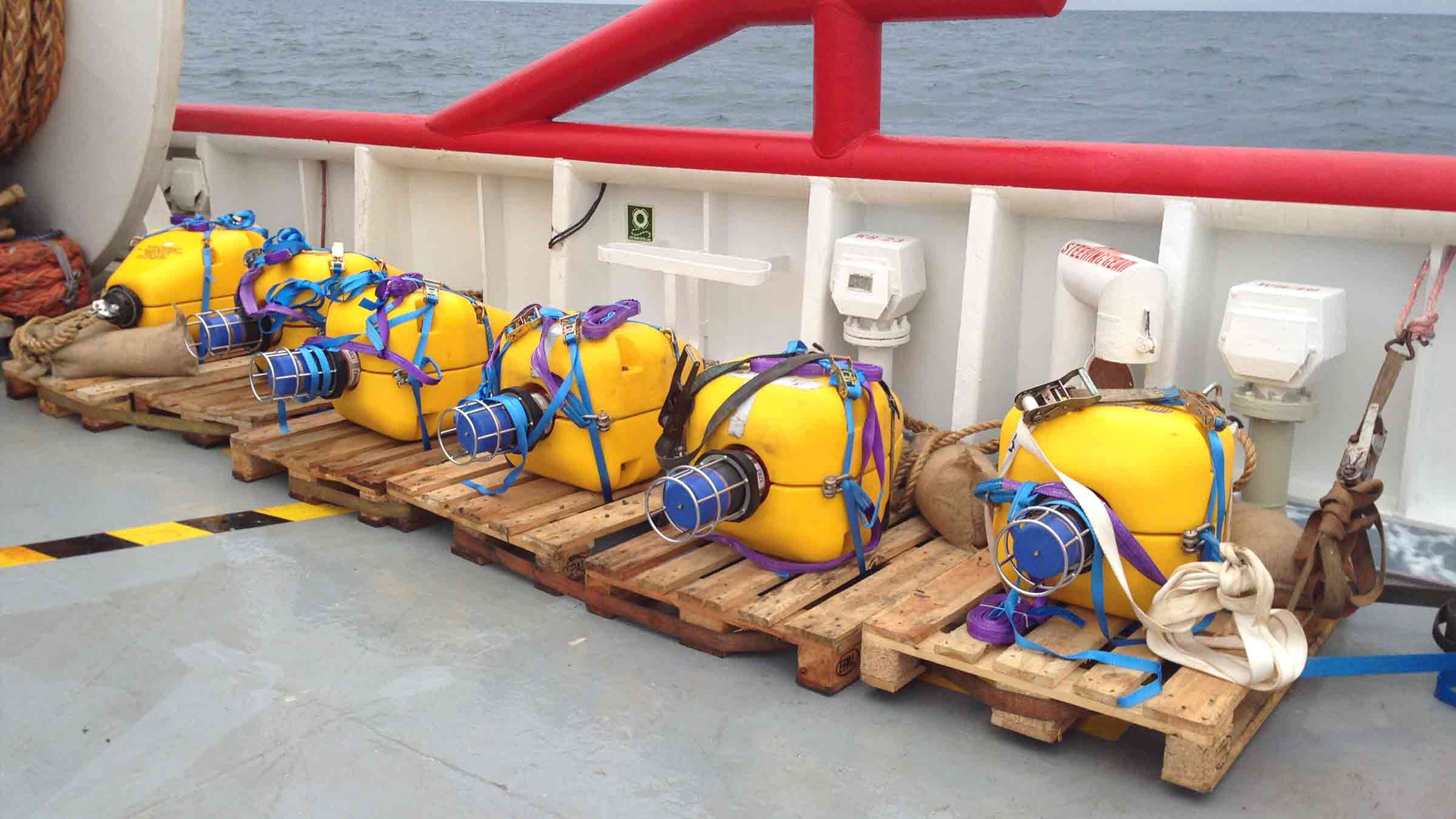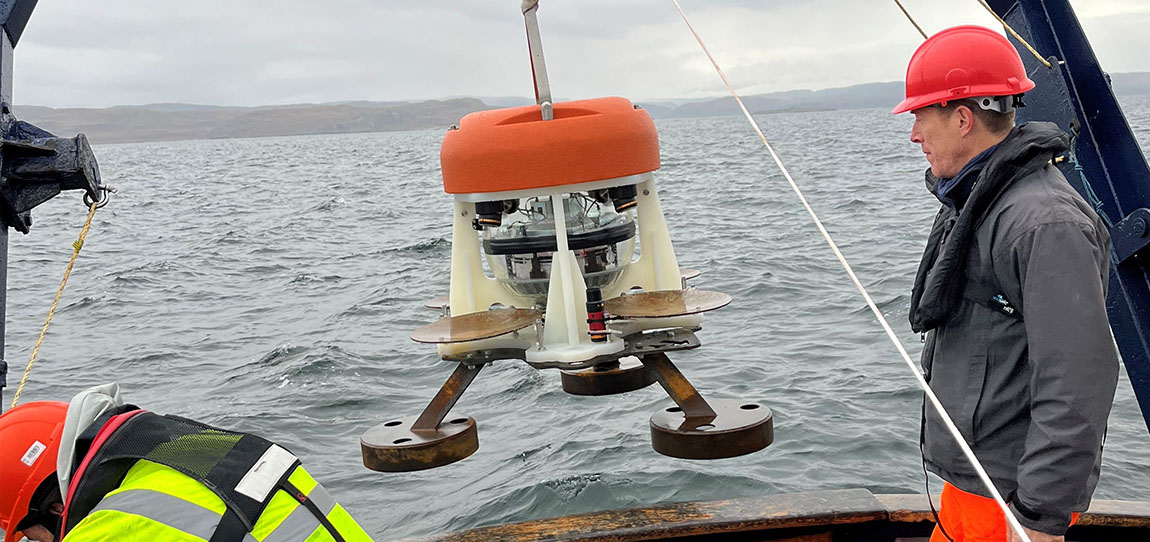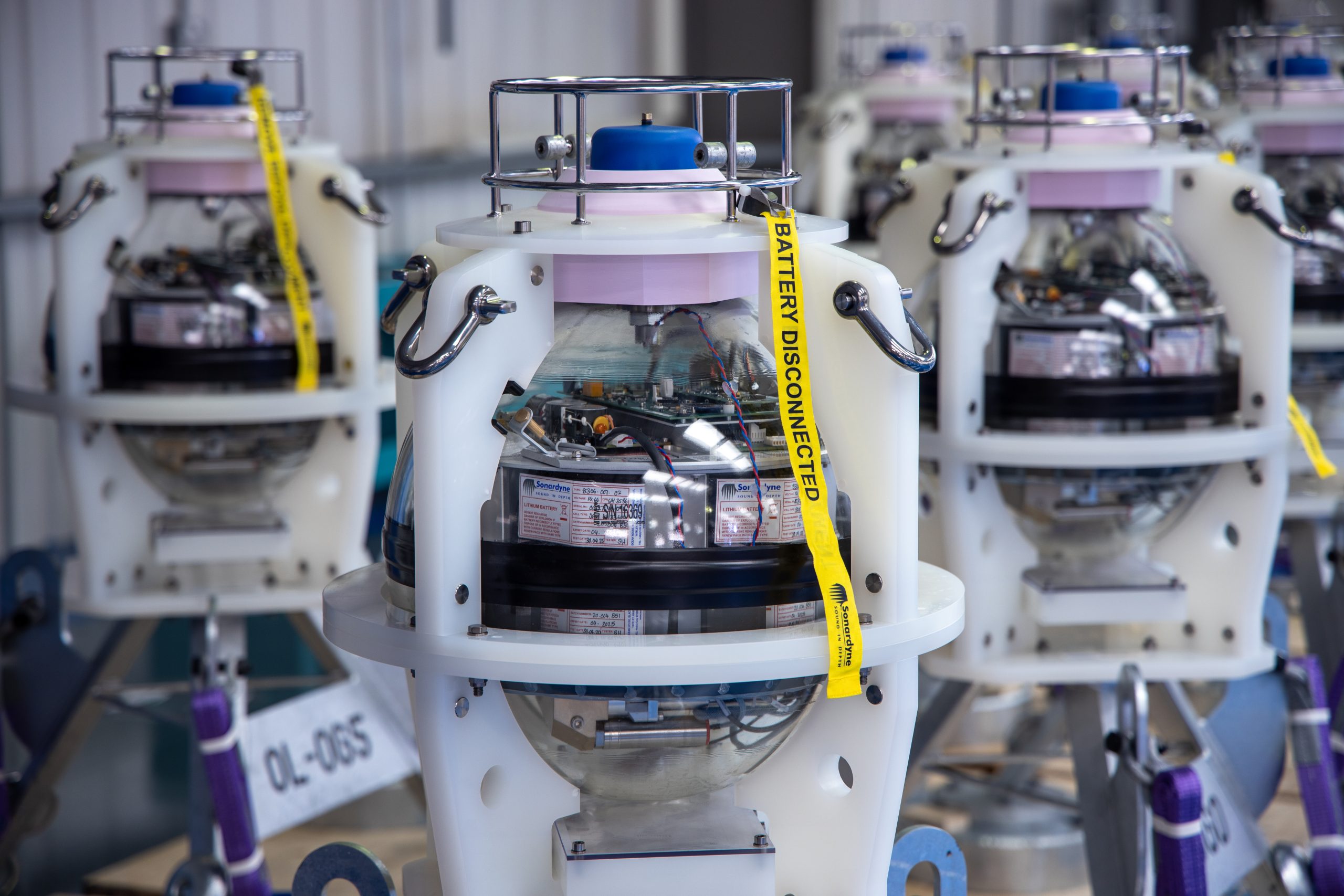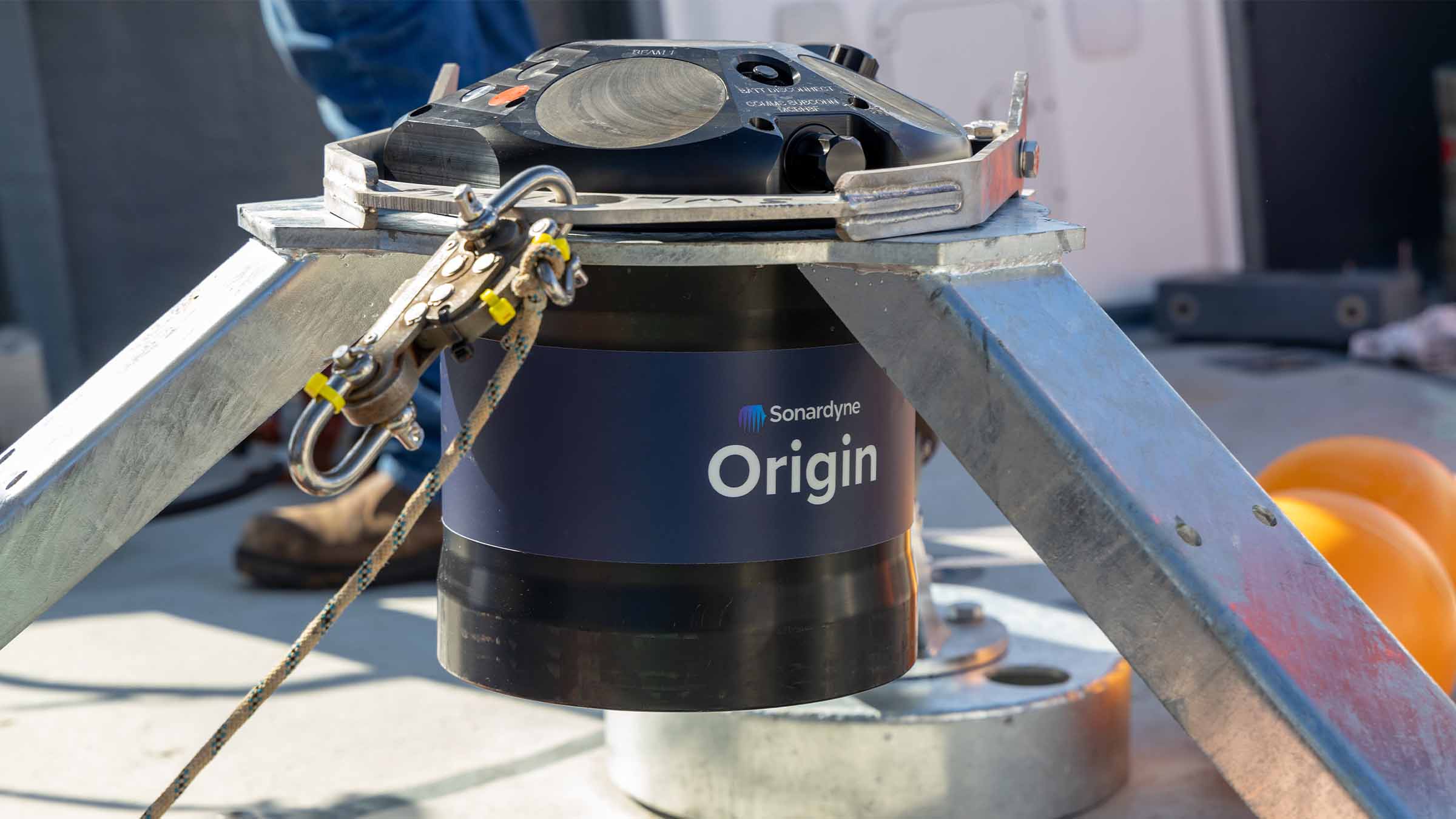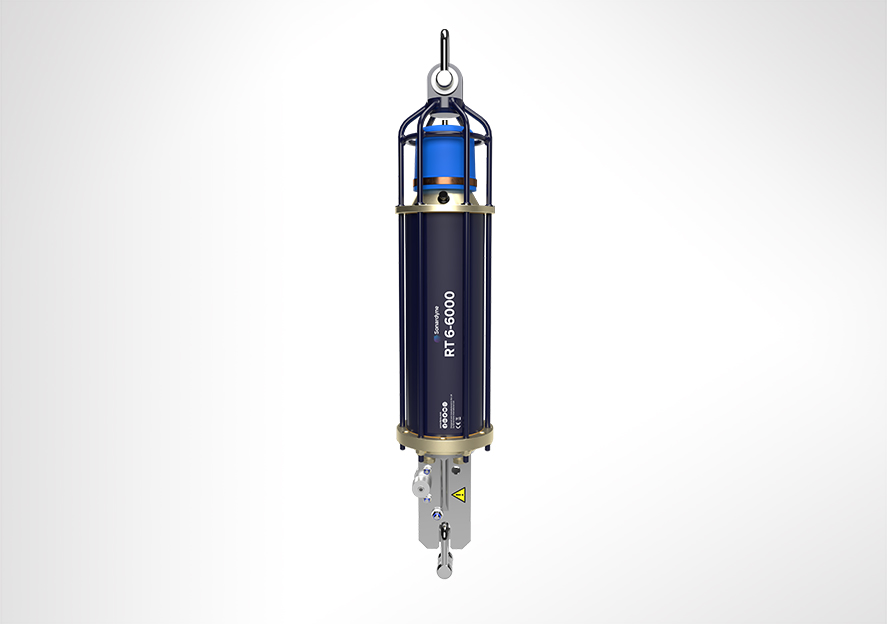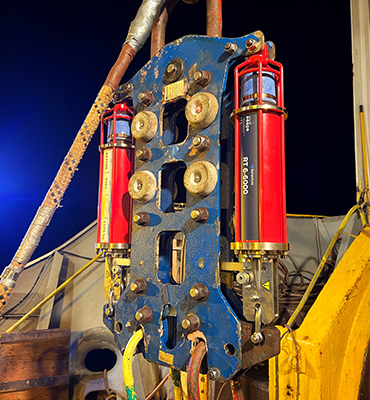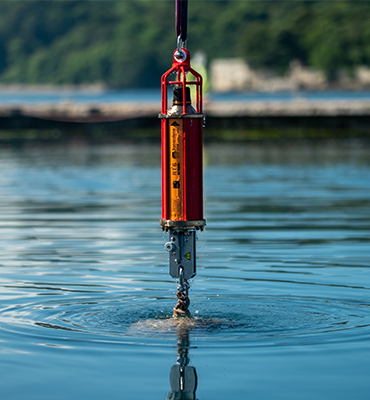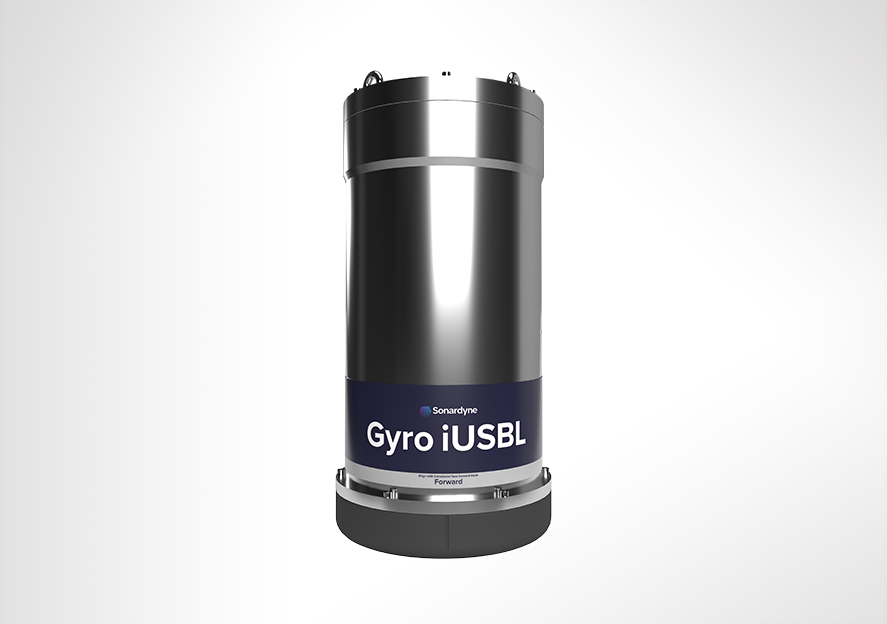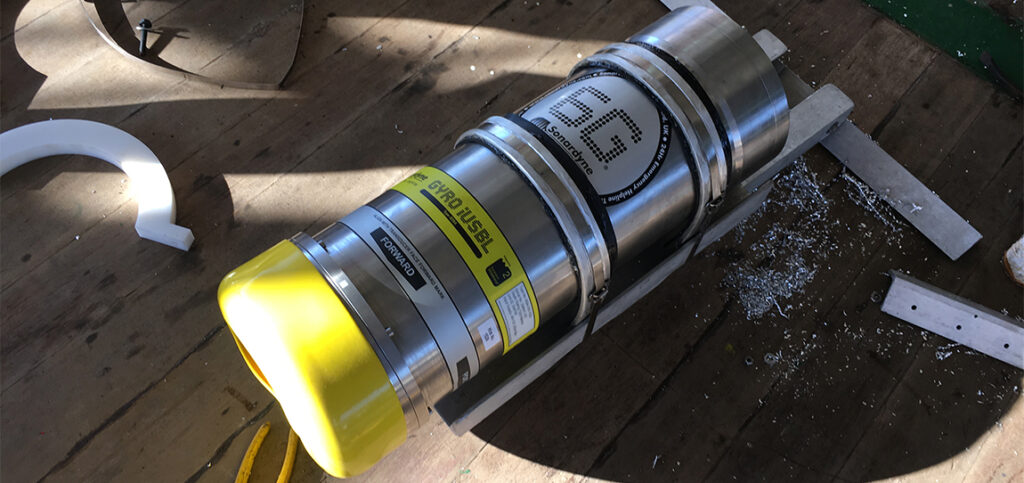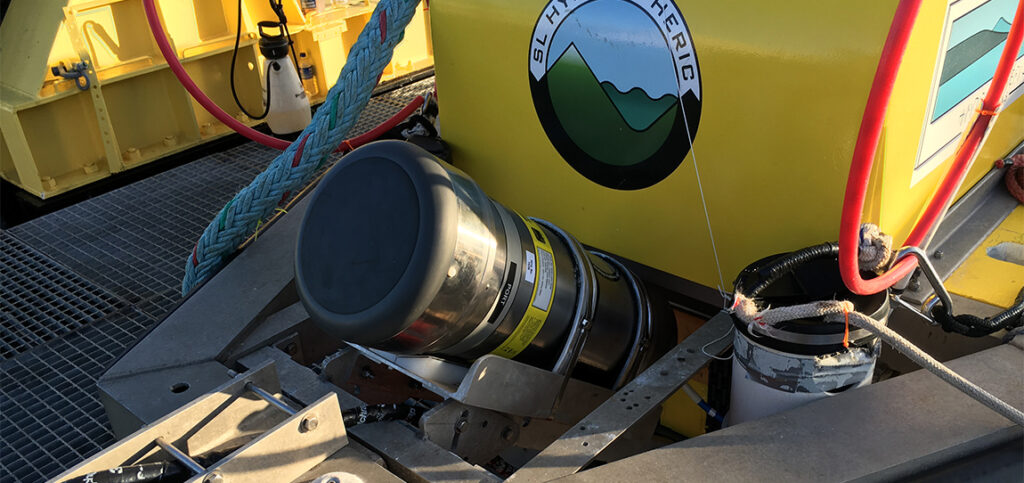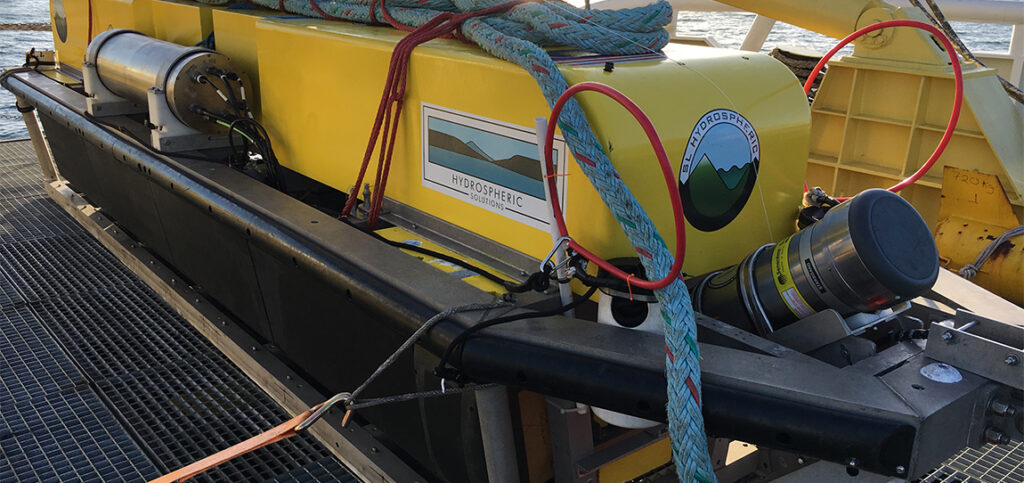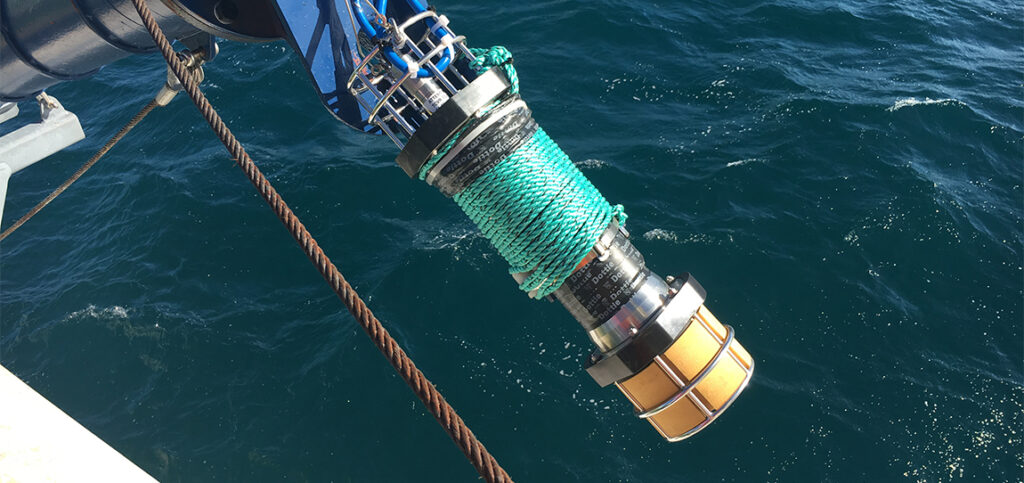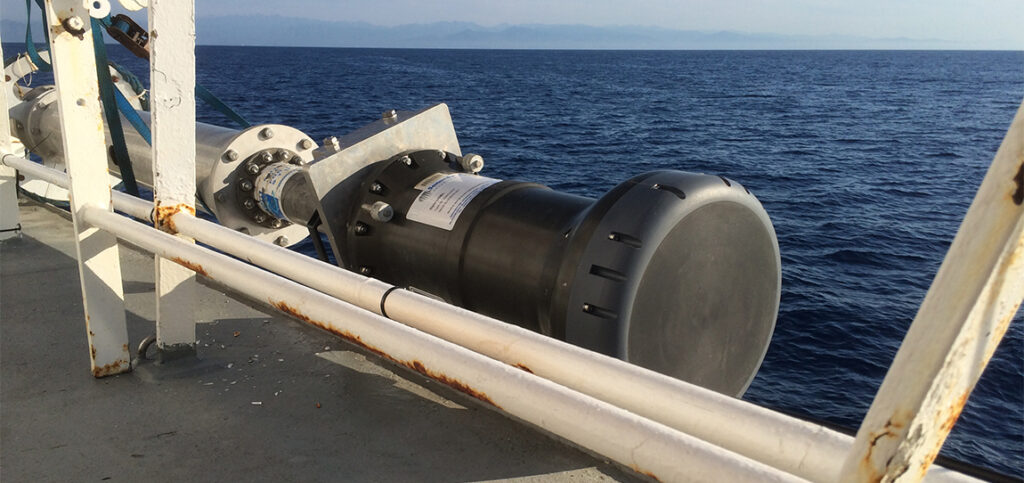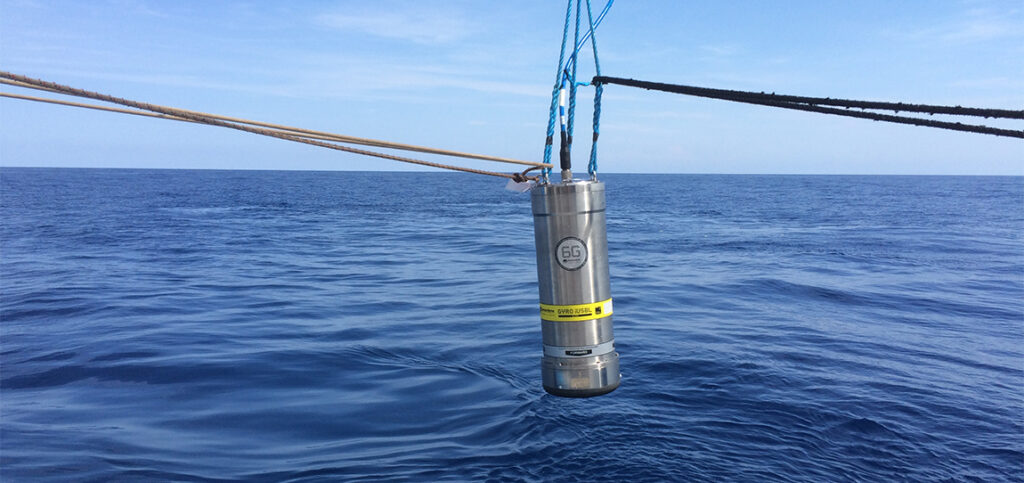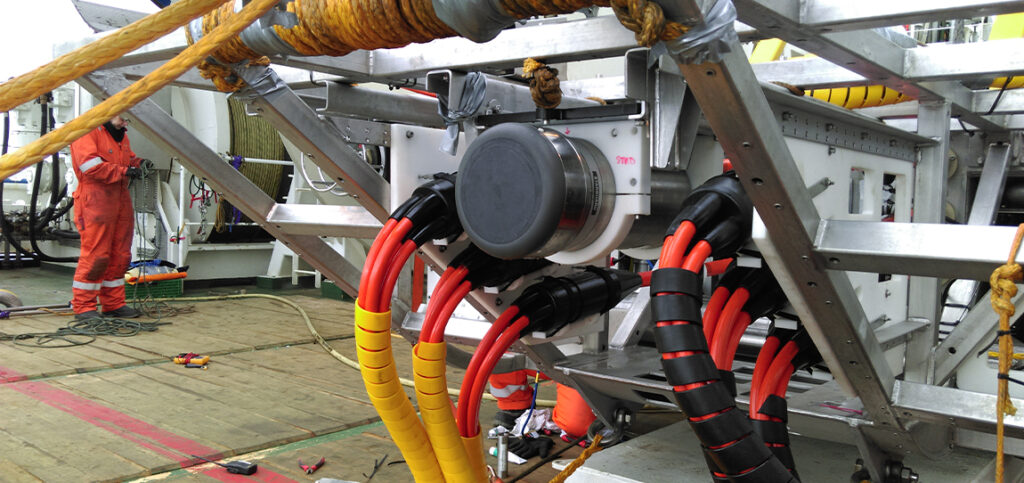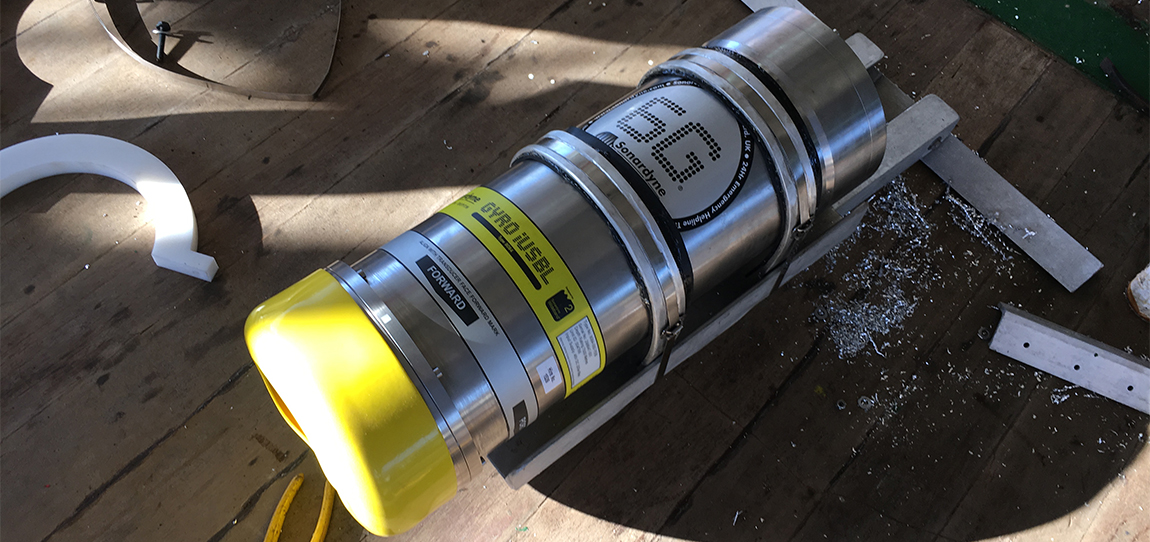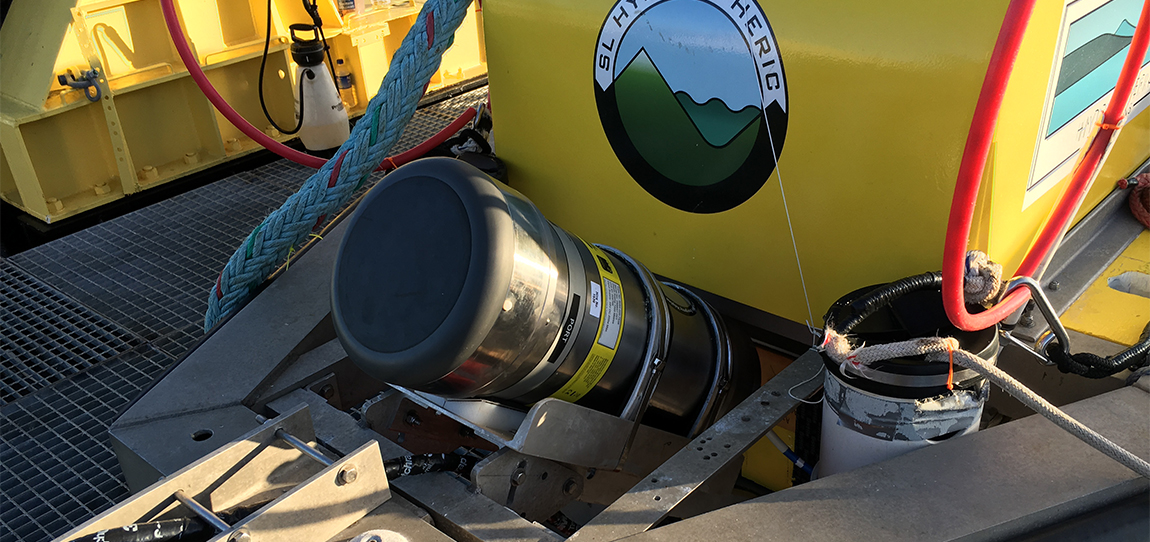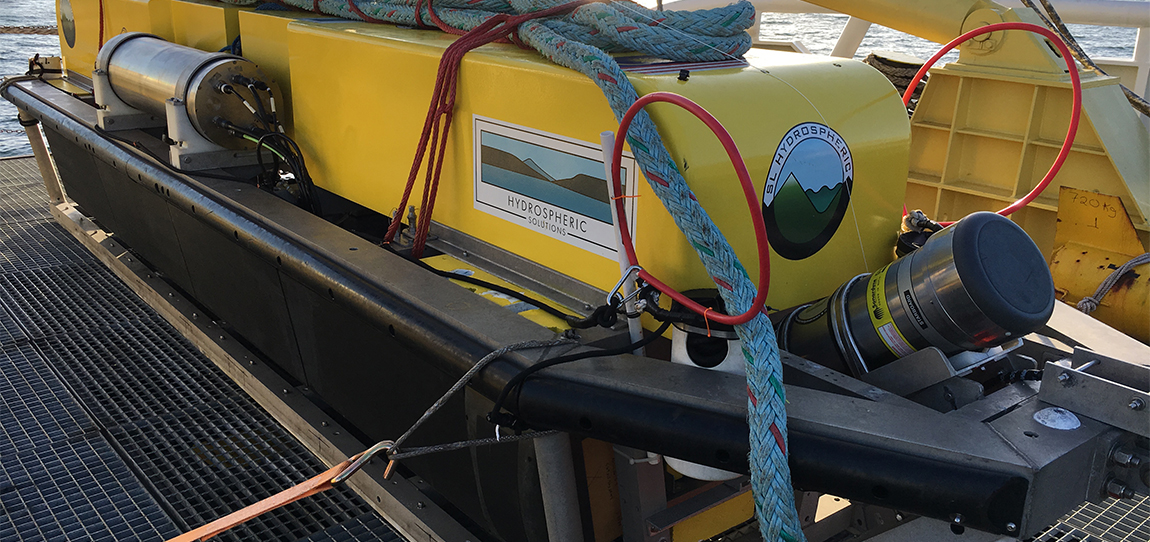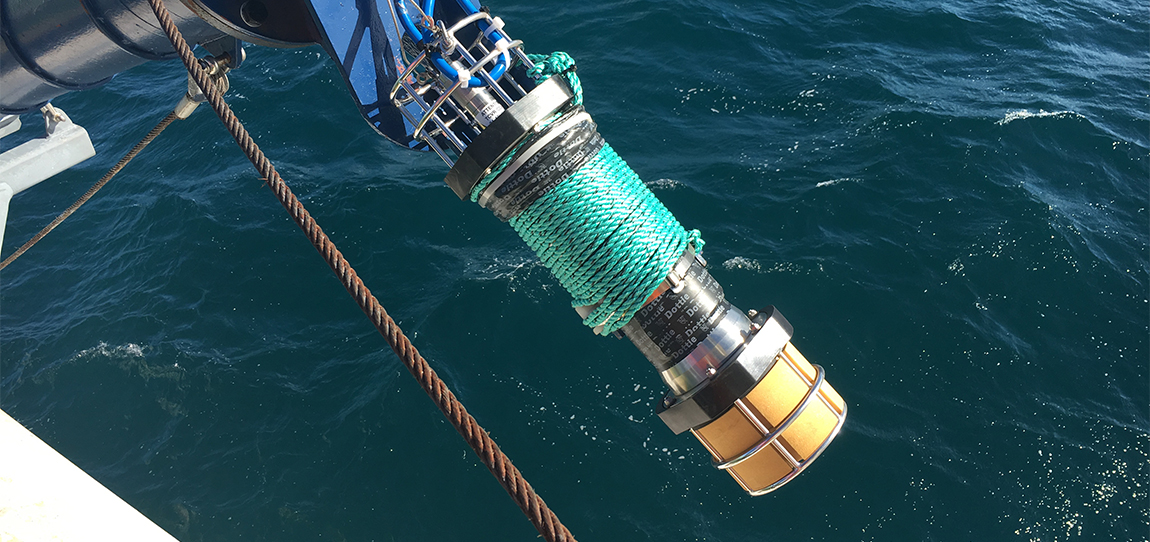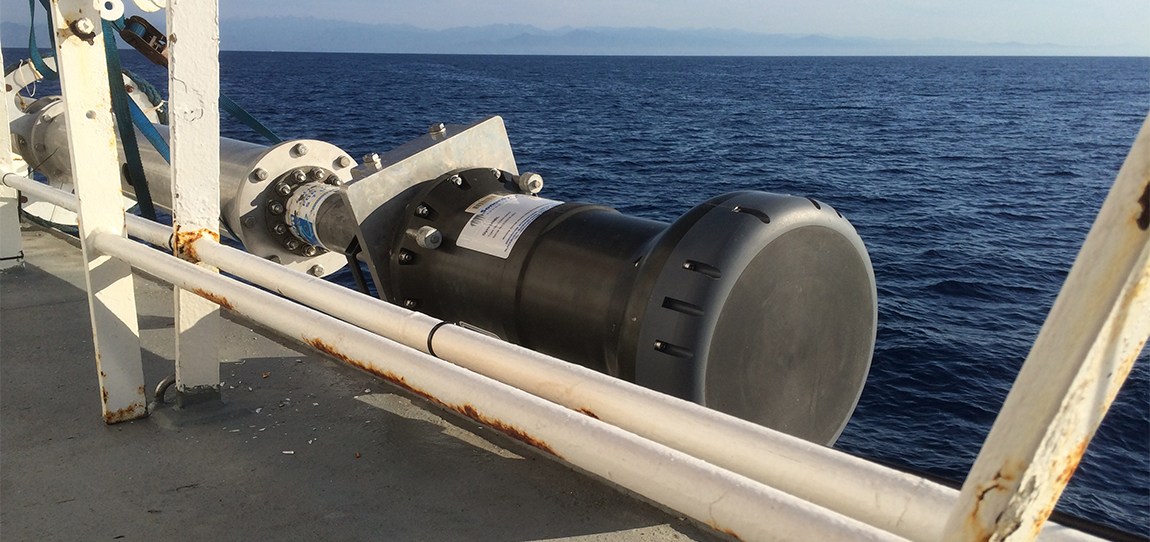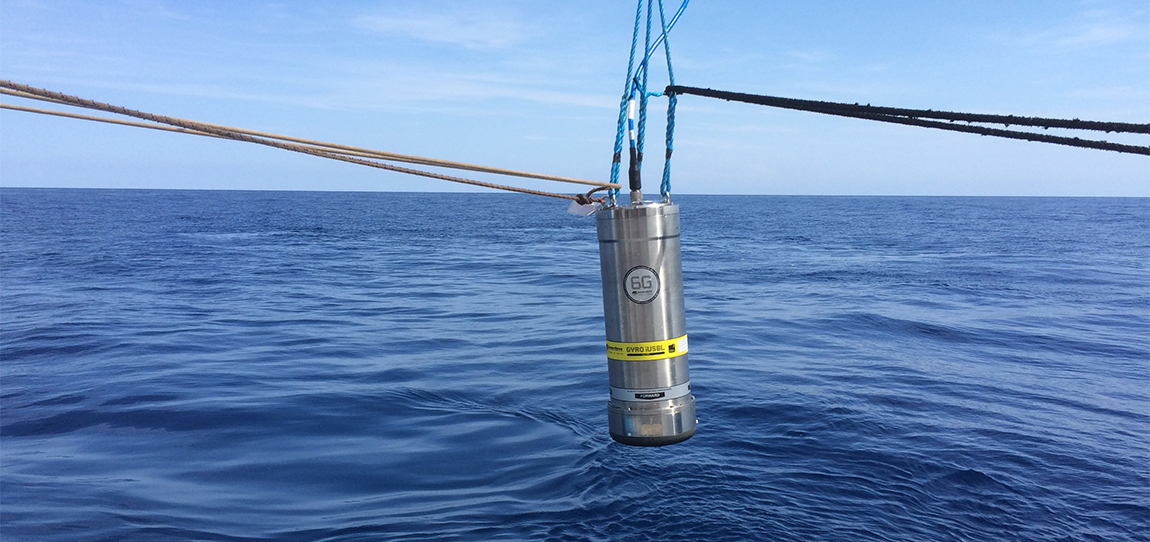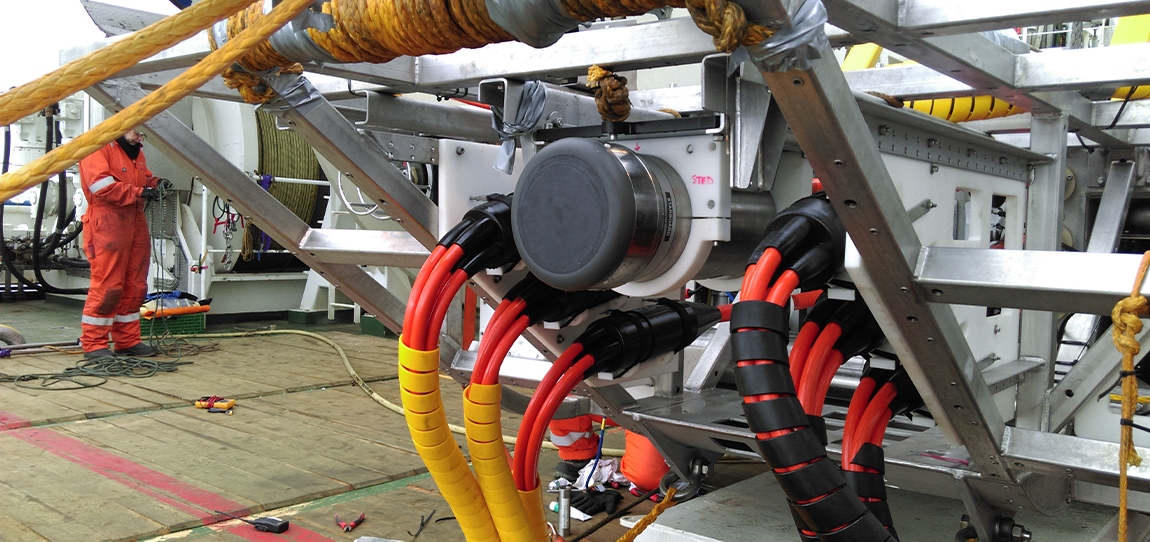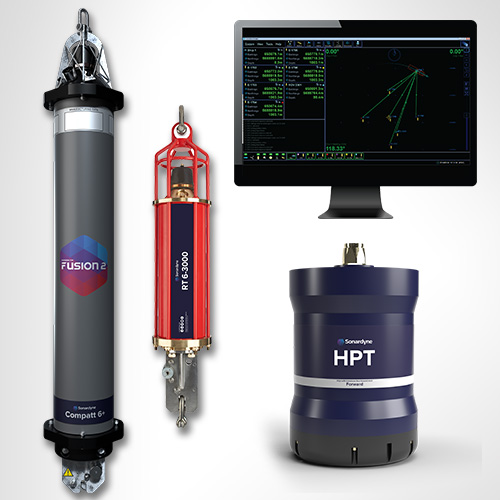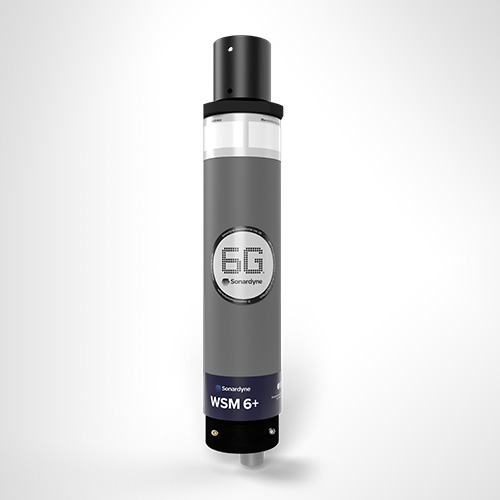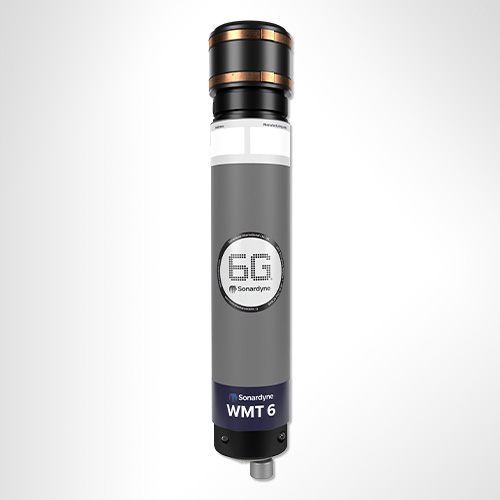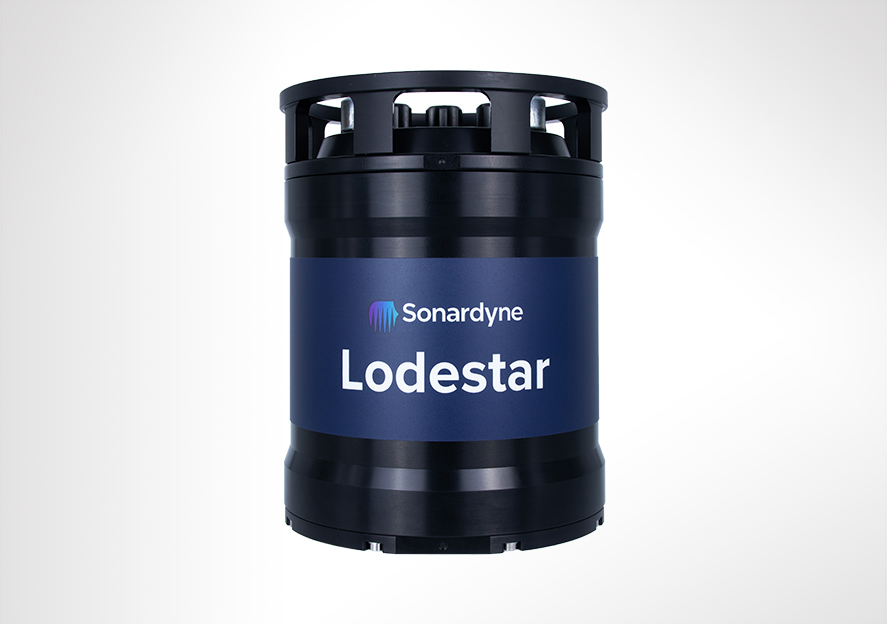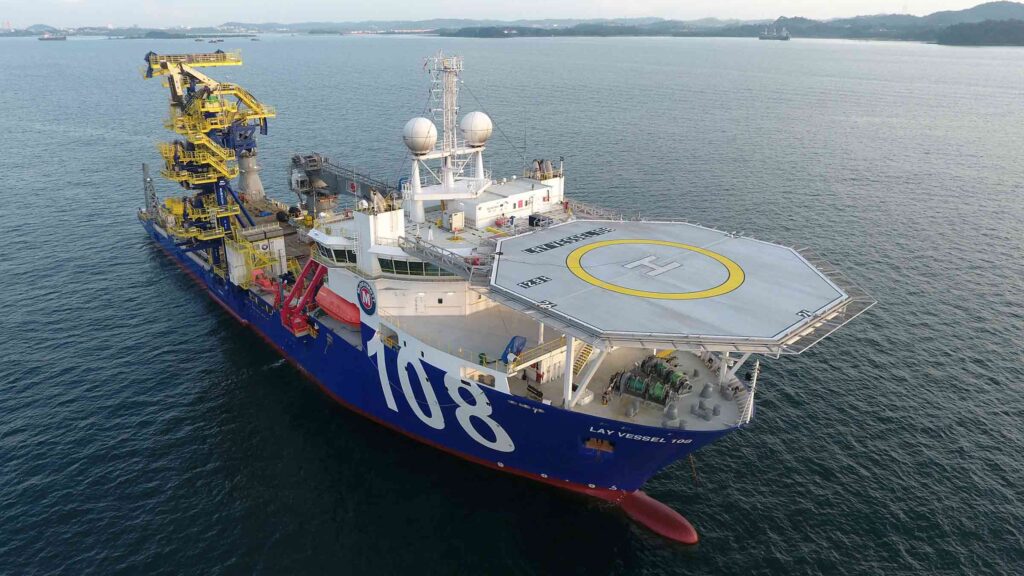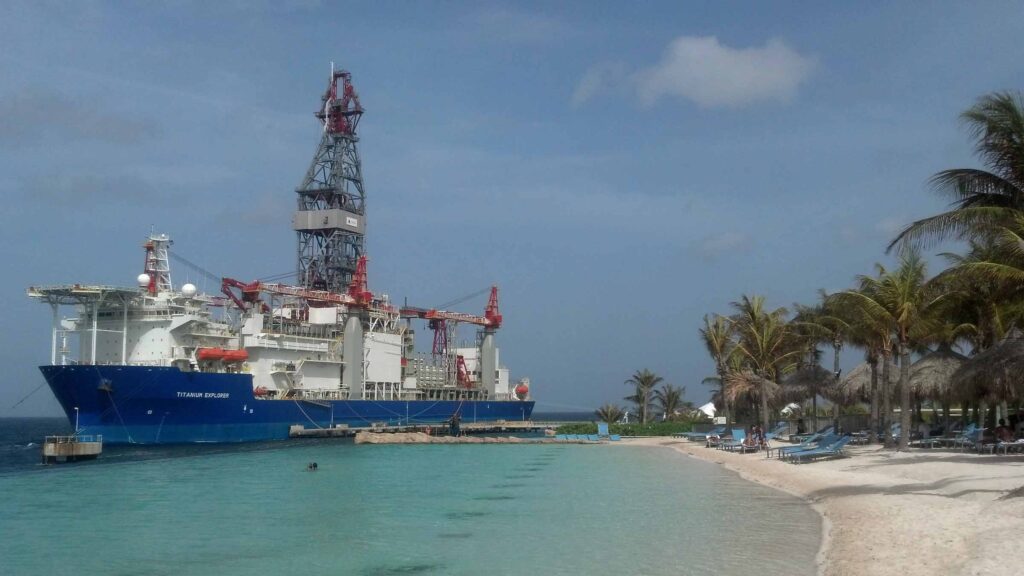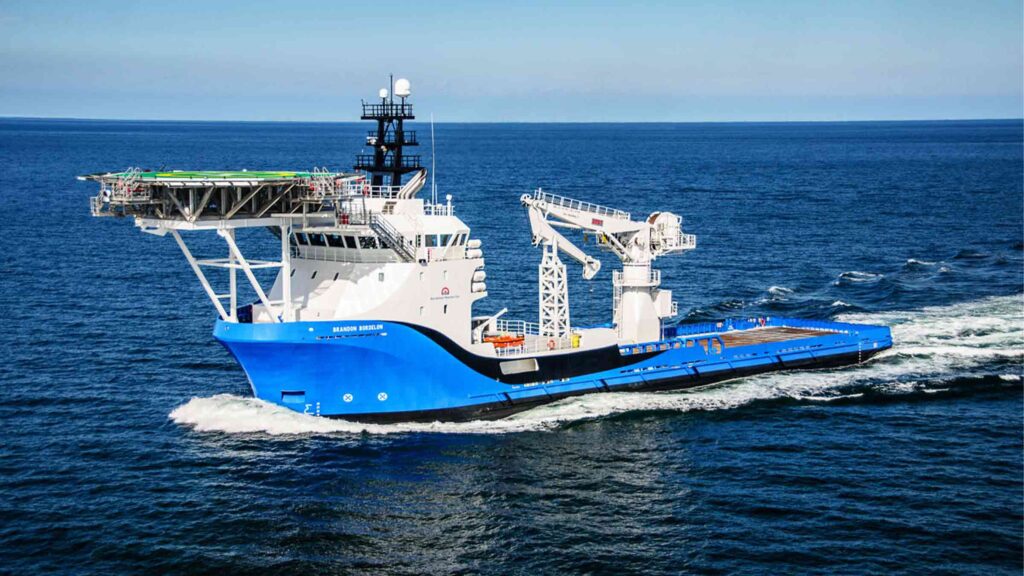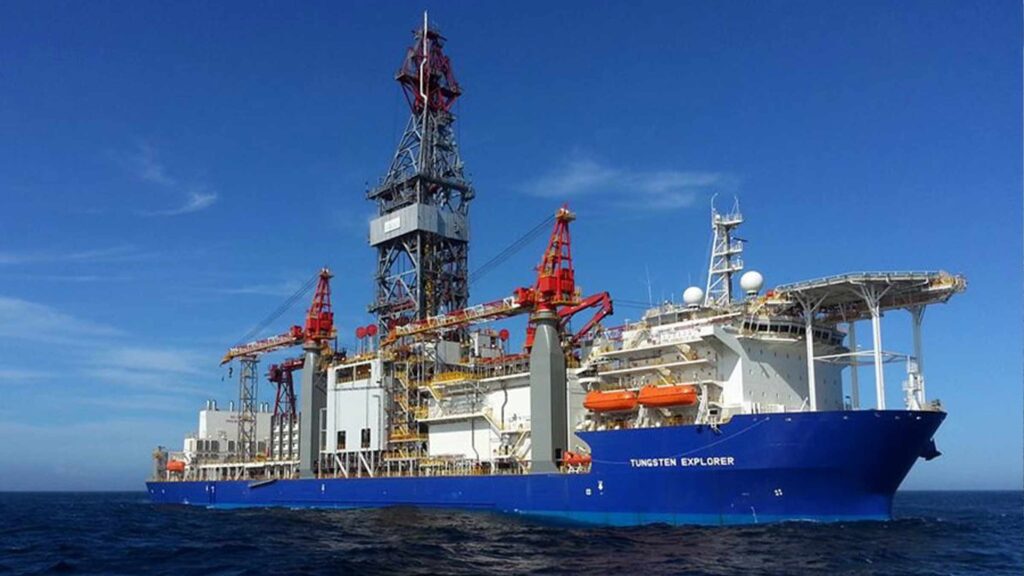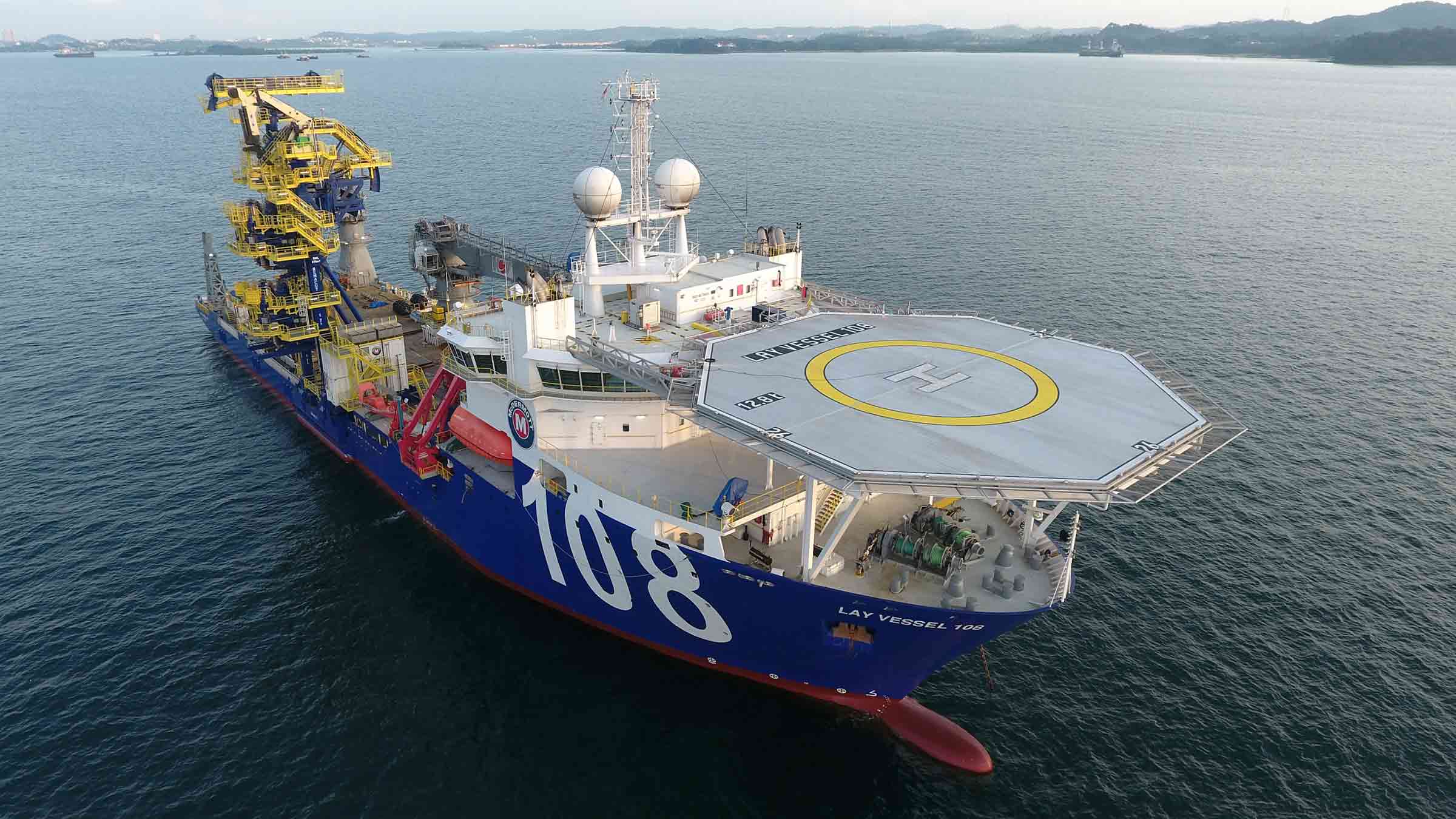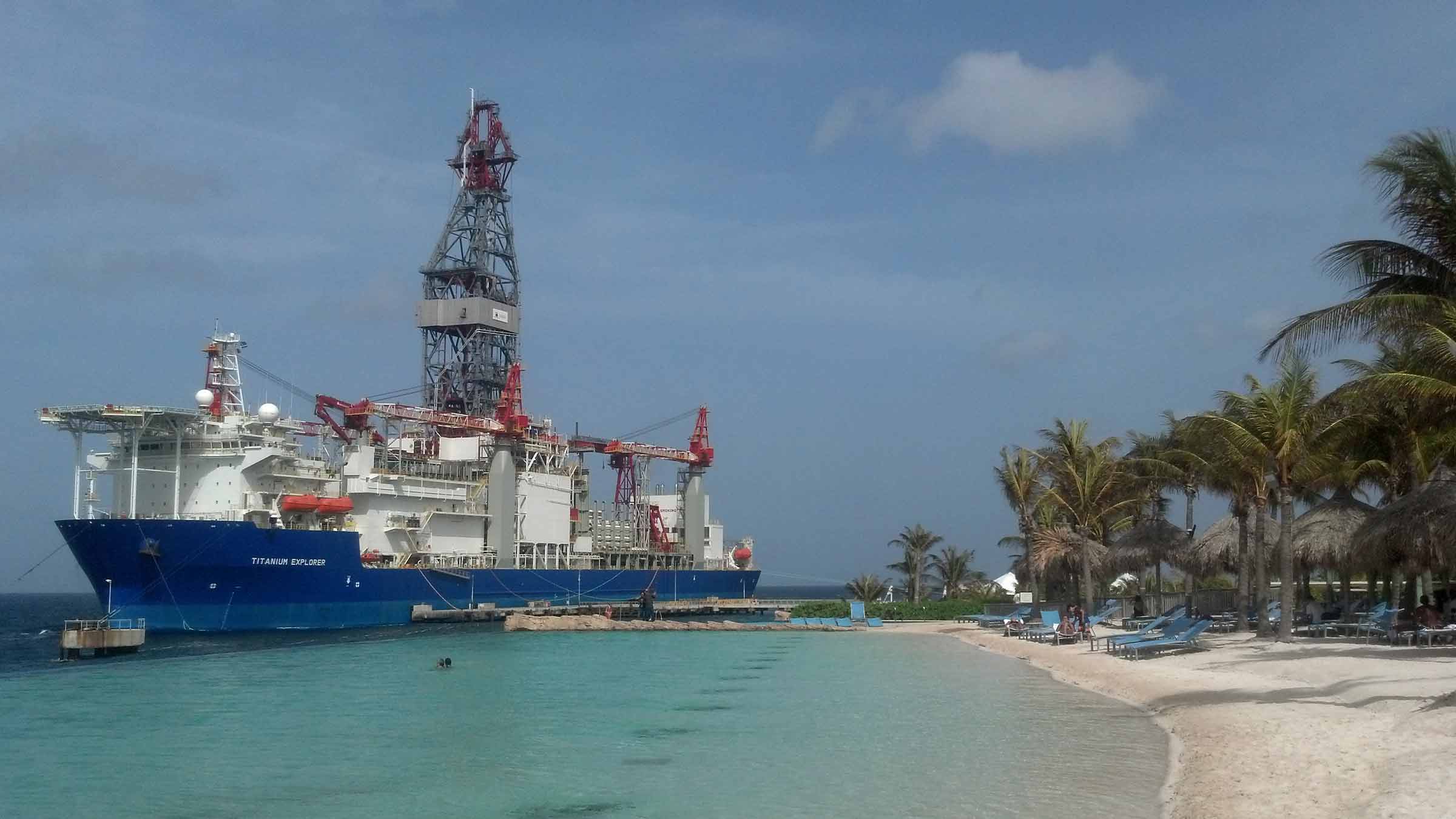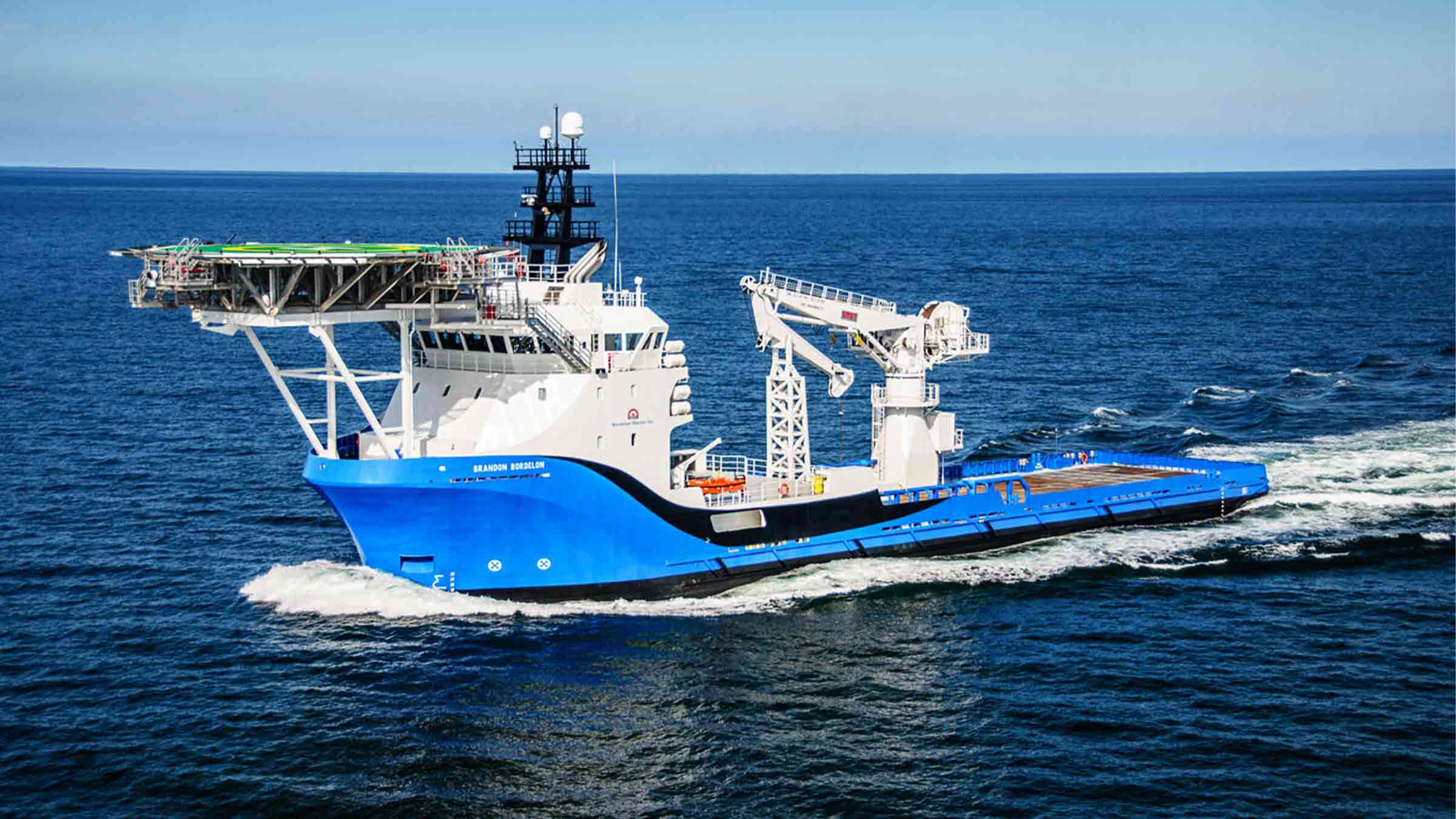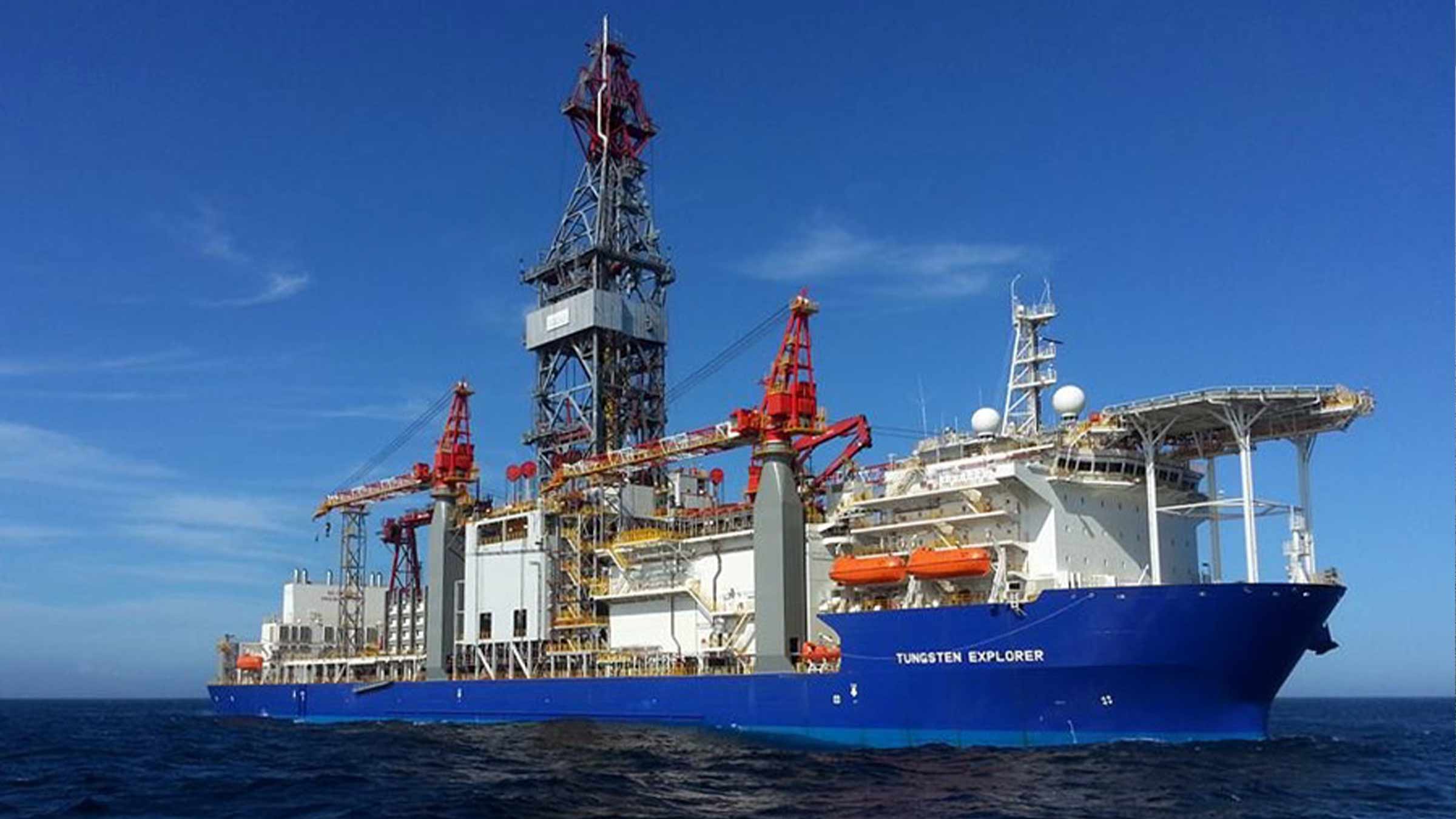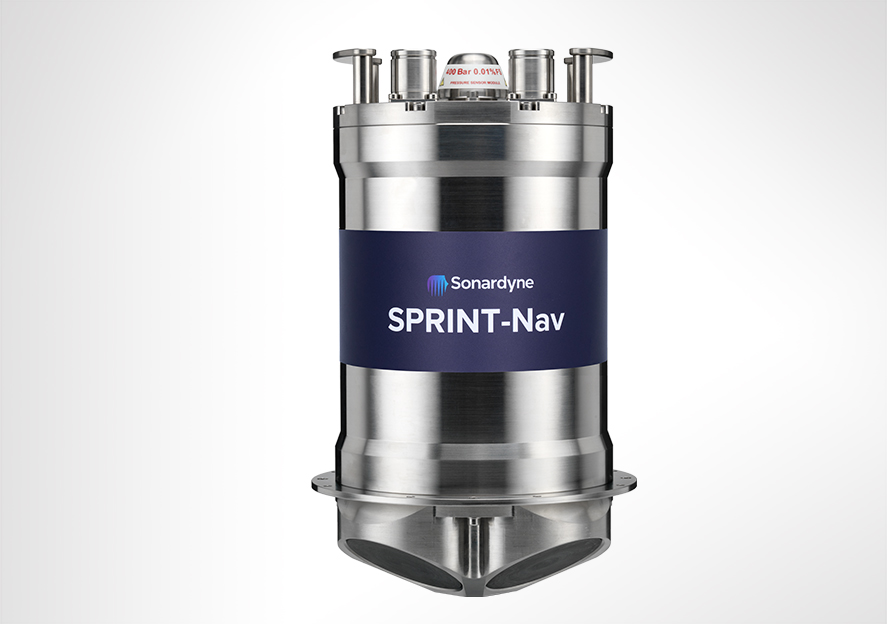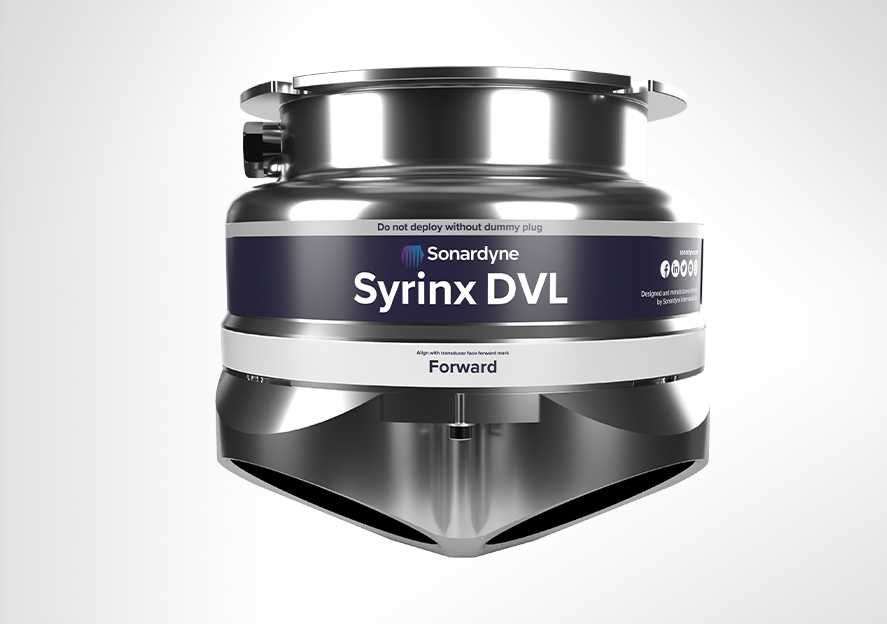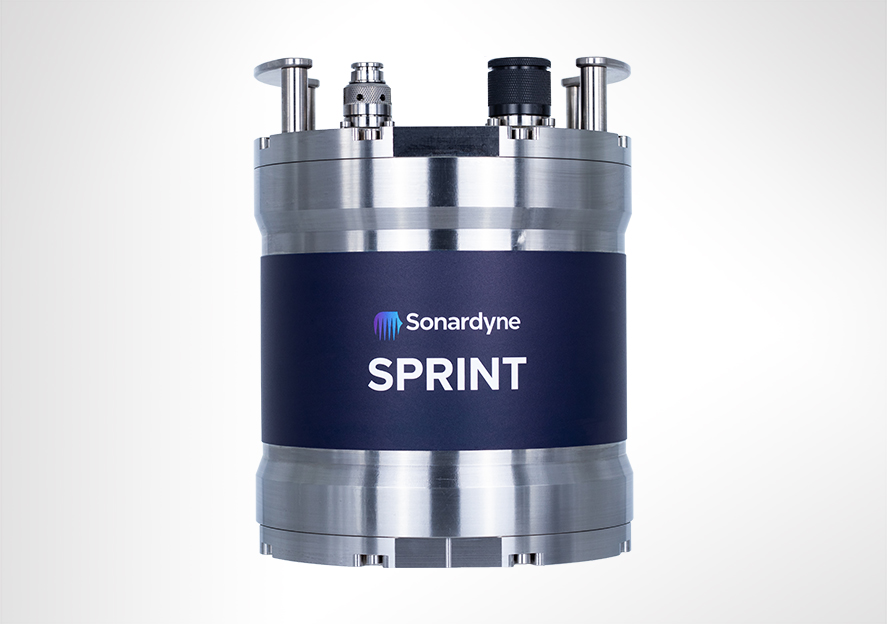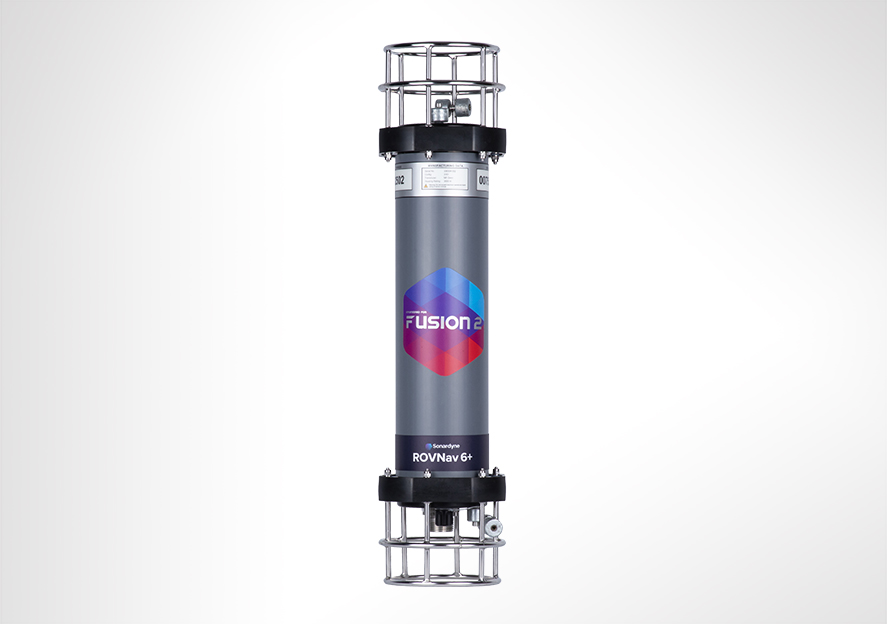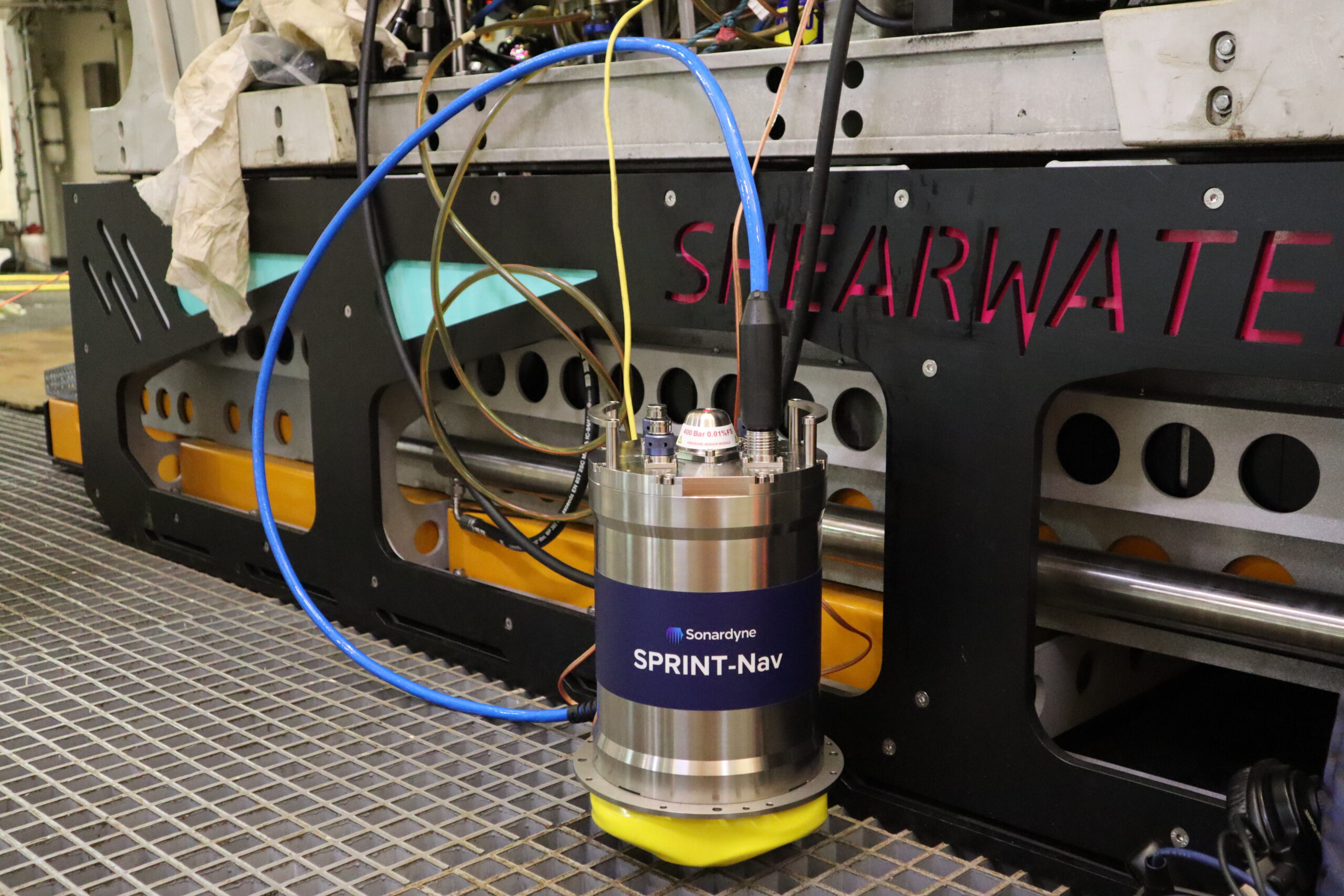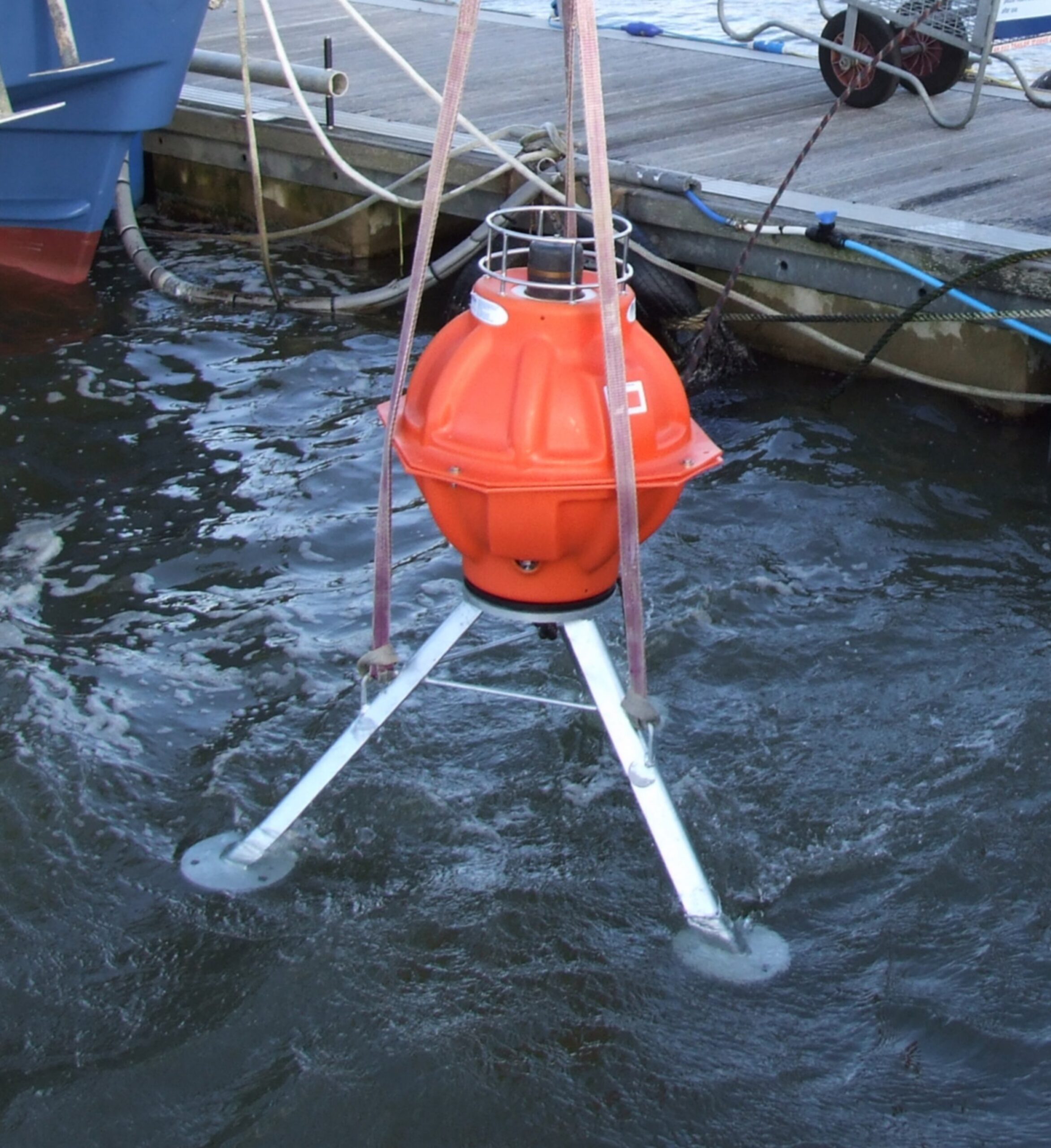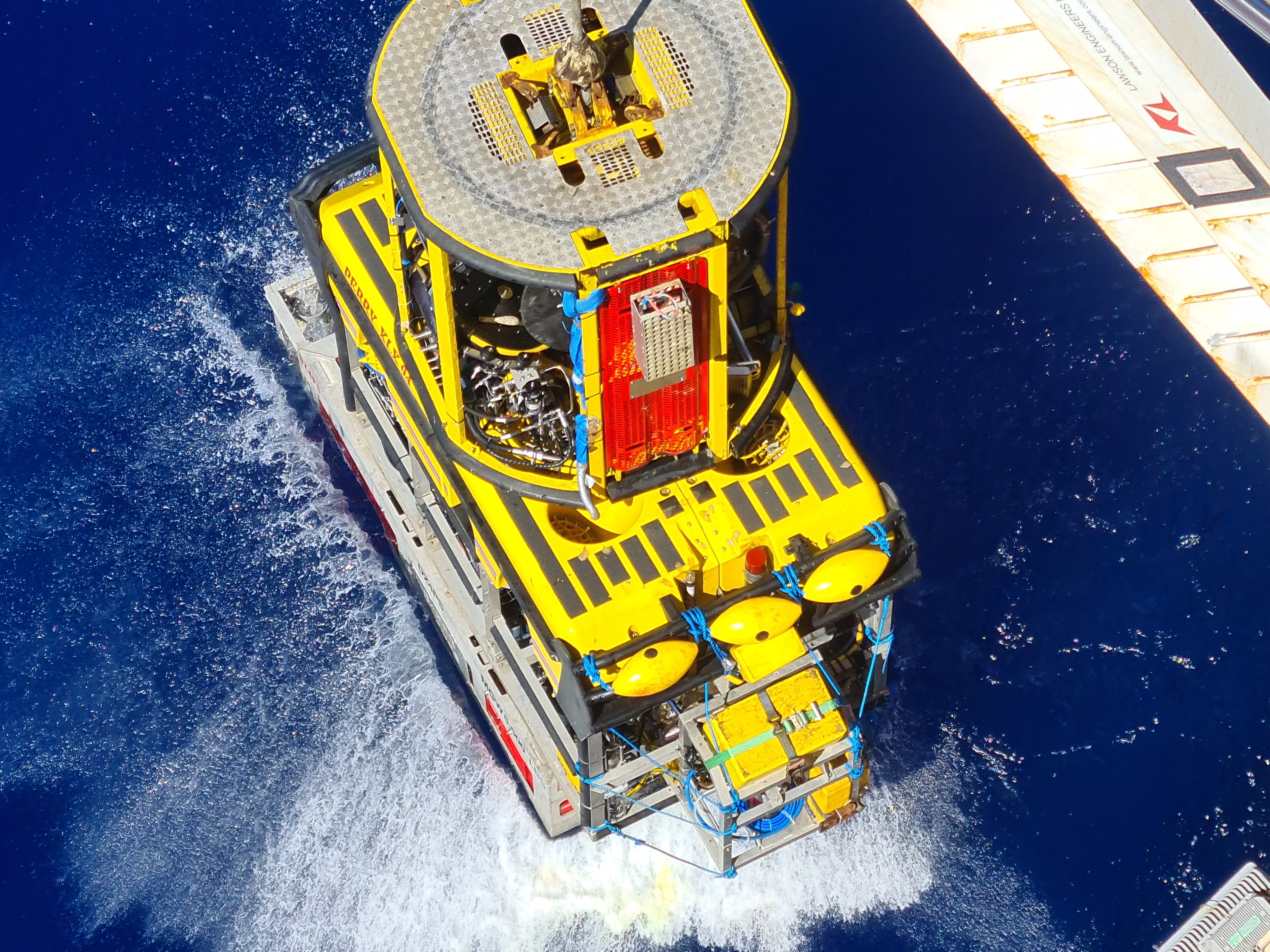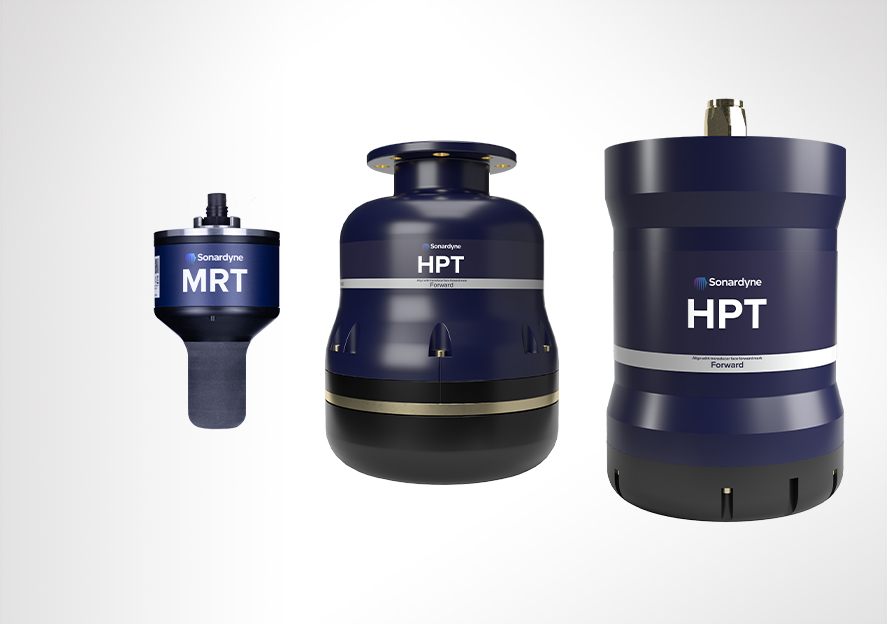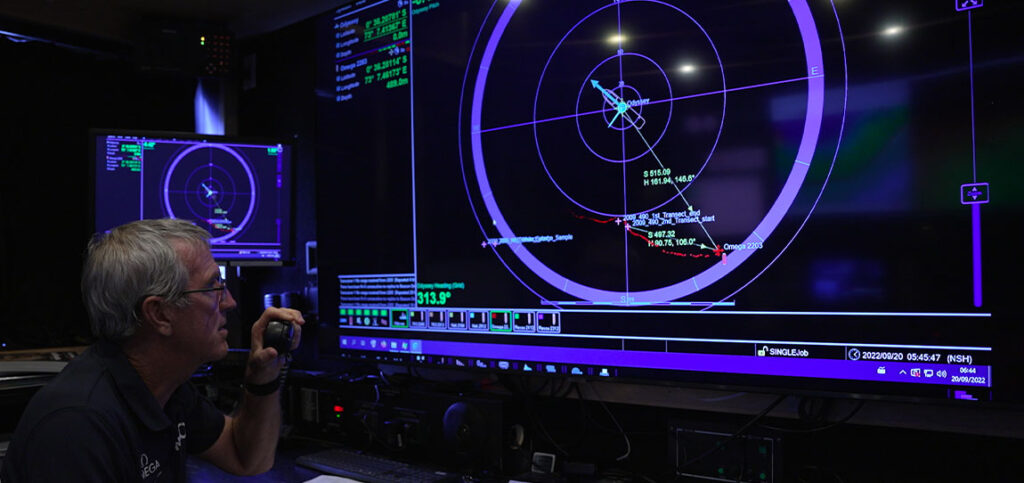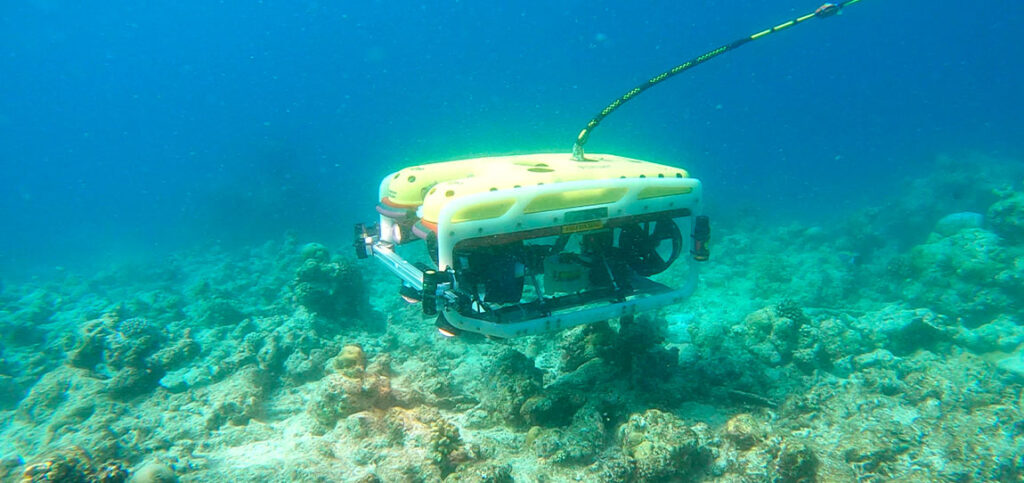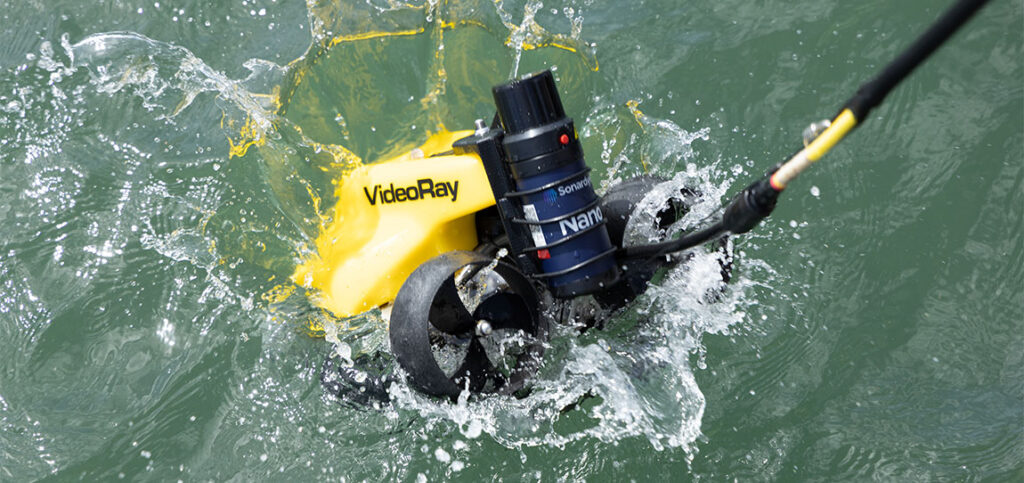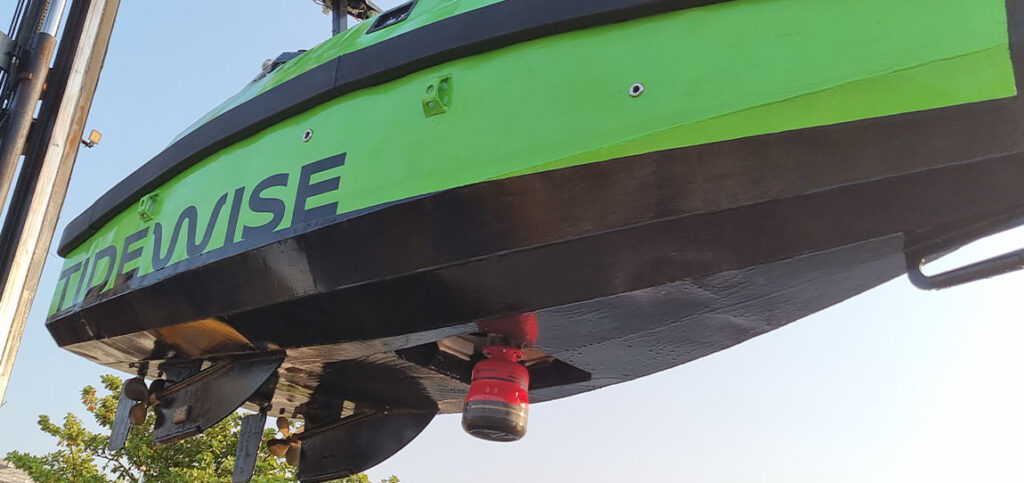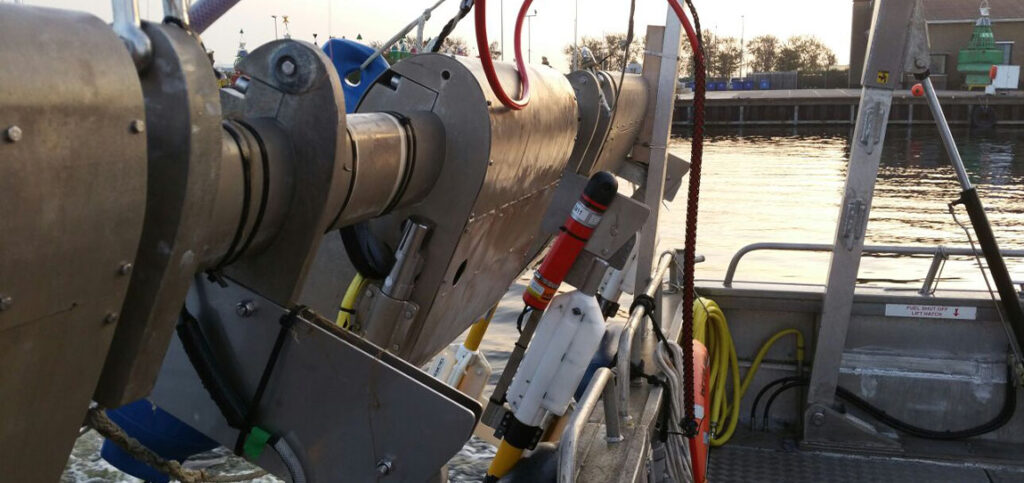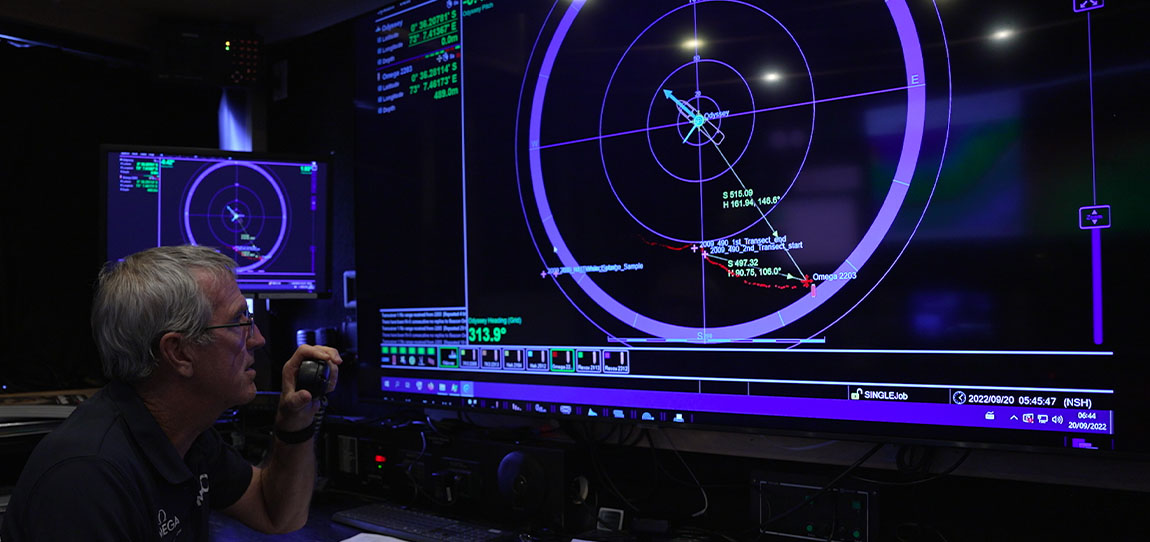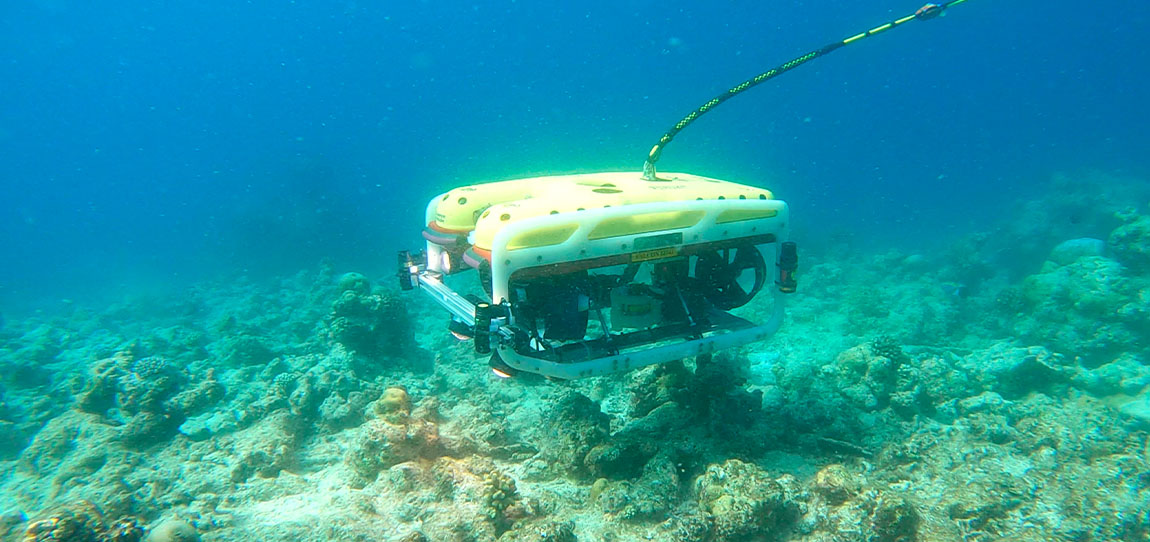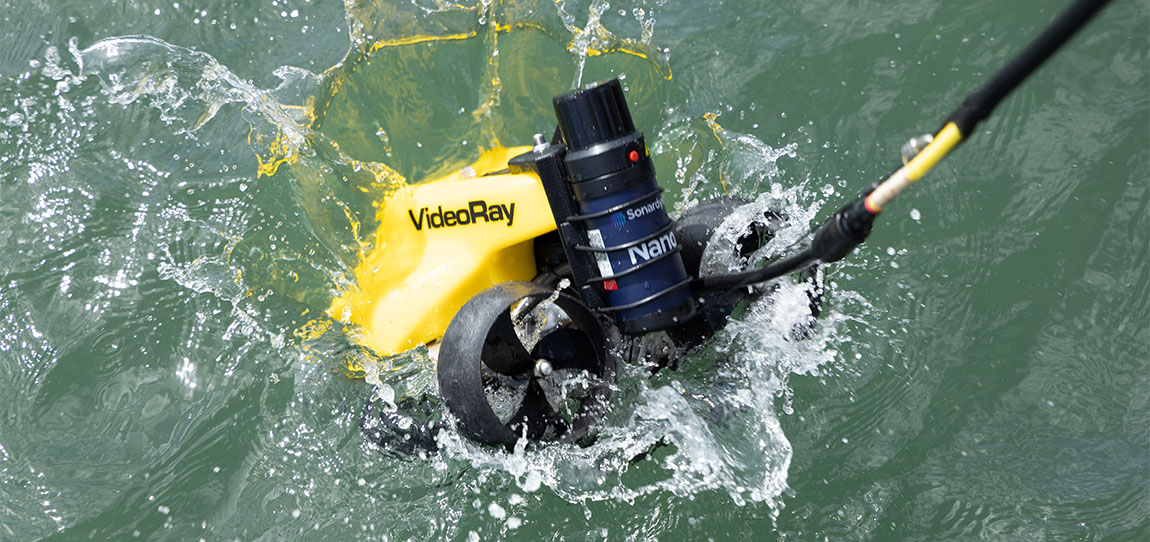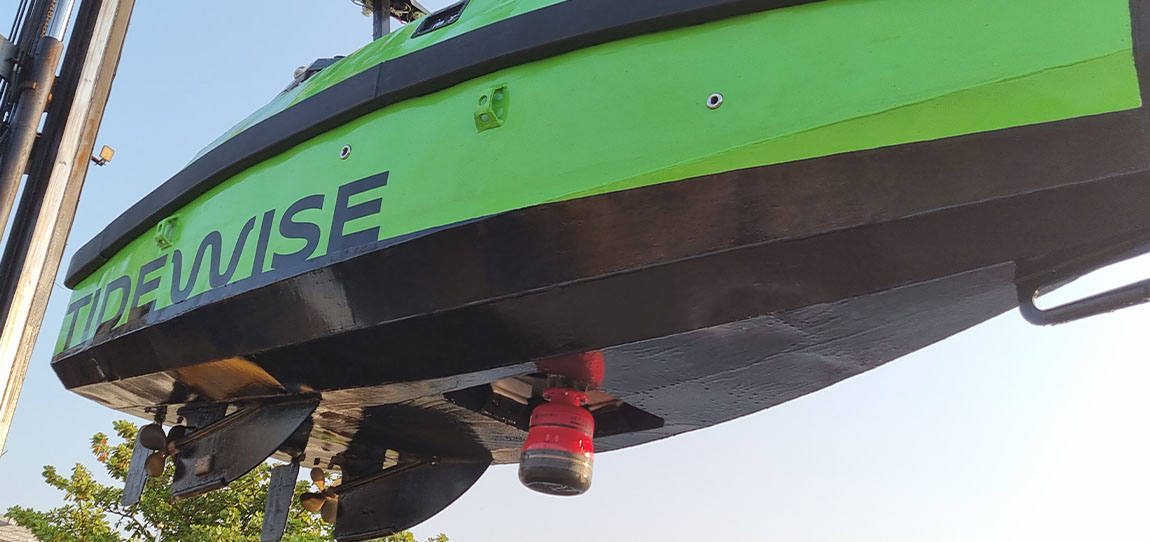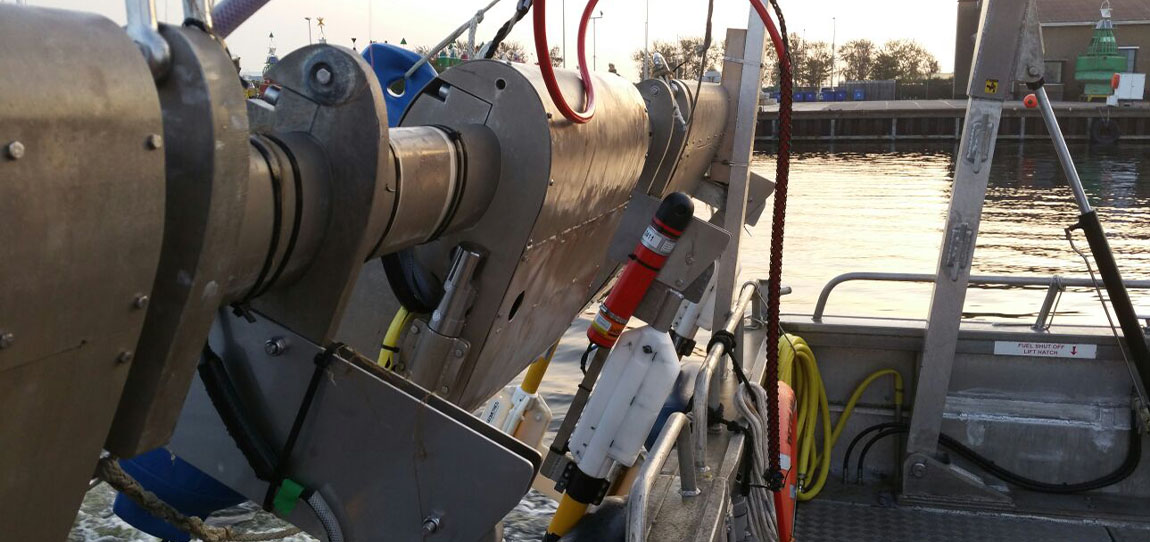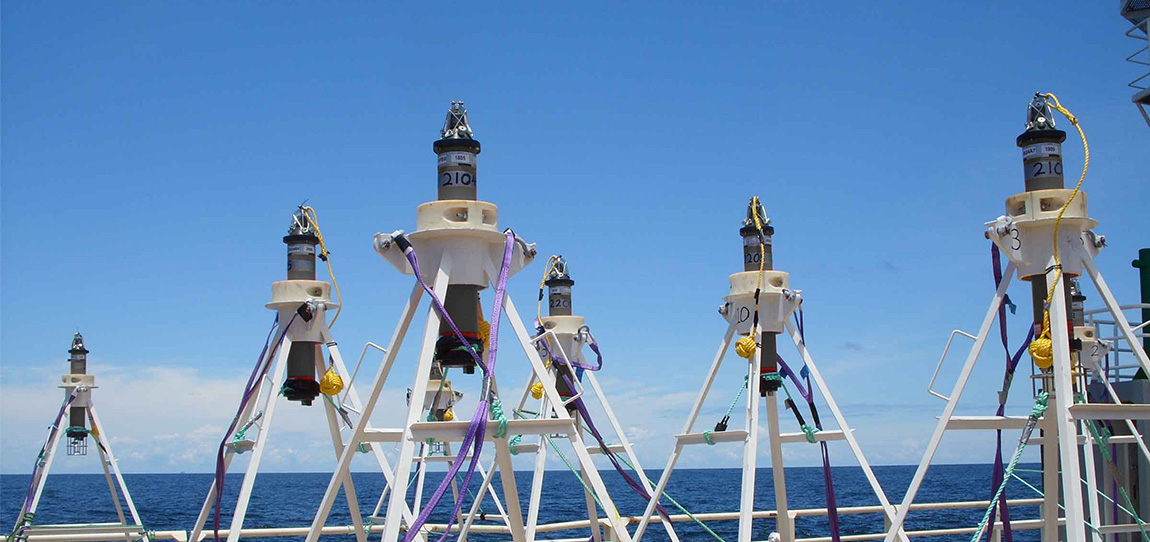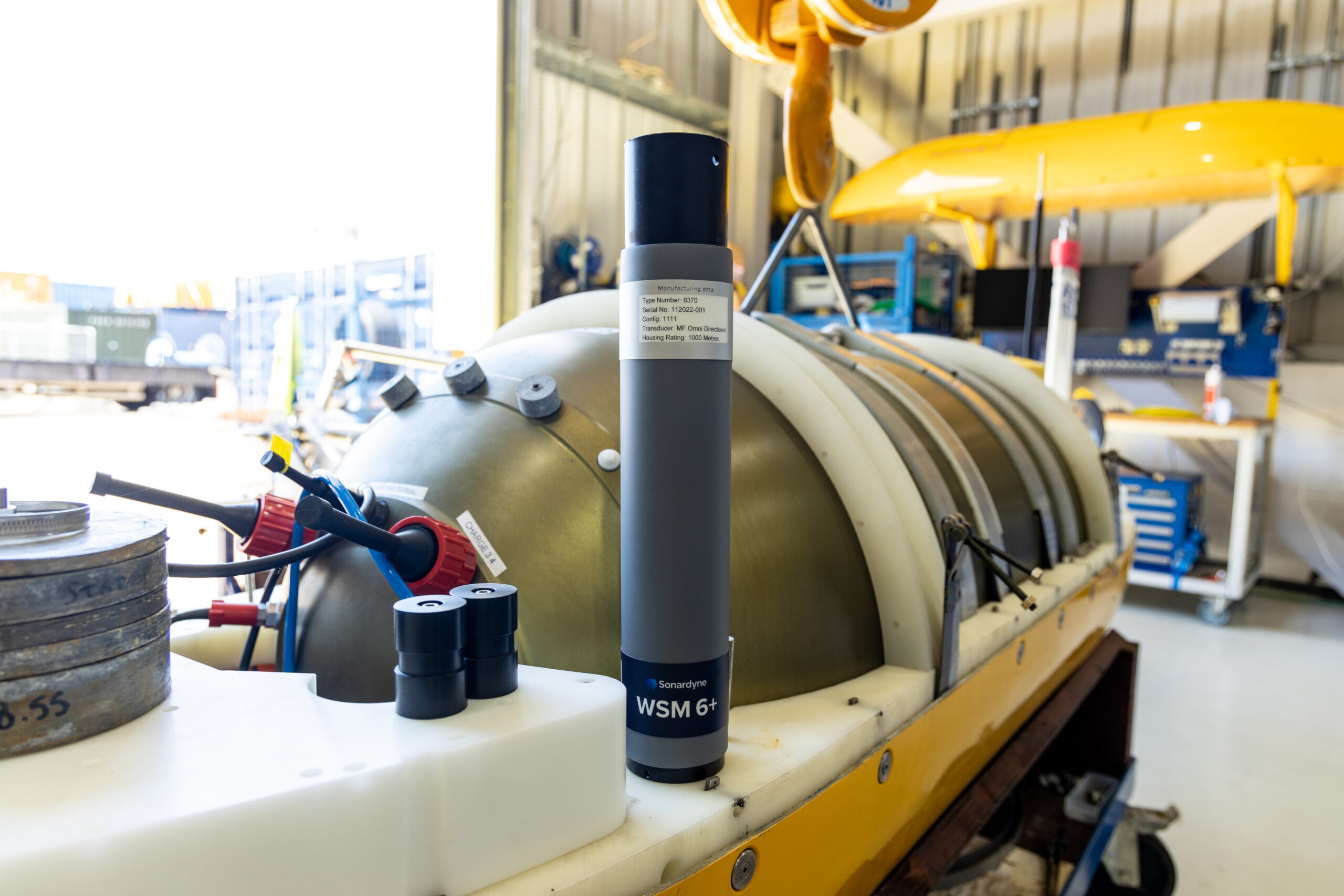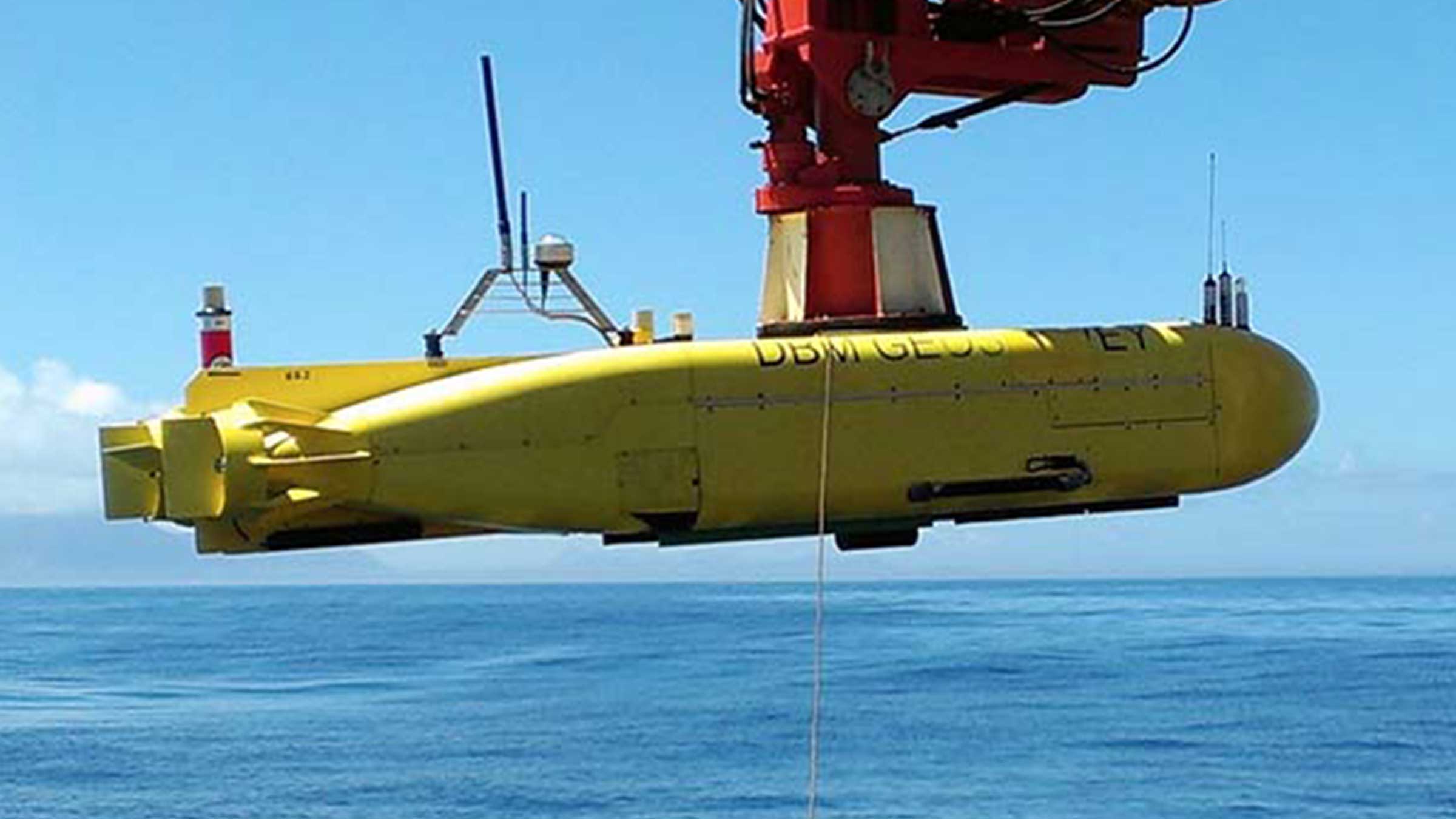Secure and reliable
When safety is paramount in your survey and clearance operations, IT 6 offers a solution to ensure your success.
For energy: With any offshore energy development, there’s the potential to encounter unexploded ordnance (UXO). IT 6 improves the safety and efficiency of clearance operations, keeping your personnel away from risk and your project on track.
For defence: An important new addition to the MCM and underwater ordnance playbook, IT 6 helps your clearance divers and robotic platforms dispose of modern day and historical ordnance, quickly and effectively.
IT 6 is based on our field-proven Wideband 2 digital signal technology, which offers a reliable and long-range underwater wireless communications link. With IT 6, your personnel no longer need to hard wire mine neutralisers up to signal relay buoys on the surface and can set up an initiation operation in bad weather and outside of daylight hours.
Initiation Transponder 6 (IT 6) is designed to be connected directly to a remotely deployed, non-electric (NONEL) mine neutralisation device, such as a Viper from ECS Special Projects. This allows commercial and naval EOD teams to send a wireless, acoustic command from their vessel to initiate a shock tube.
It can be placed directly by a clearance diver or remotely operated vehicles (ROV). Divers and ROVs are constrained by the equipment and payload they can carry so we’ve designed IT 6 to be small and lightweight yet tough enough to withstand everyday operational situations.
With use cases from offshore renewable energy to government and defence, IT 6 transponders are suitable for high order detonation and low order deflagration scenarios.
At a glance:
- Efficient, secure, safe
- 357 mm tall by 55 mm in diameter; 0.10 kg weight in water; designed to be carried by clearance divers or small ROVs
- Controlled using IP67-rated Deck Topside and cabled acoustic dunker
- Safe: automatic time-outs, hydrostatic switch, independent circuits for acoustics and firing
- Built using 6G hardware and Wideband 2 digital signal architecture: track with our Ranger 2 family of USBL tracking systems
The complete solution
Built for your UXO, MCM and EOD missions
Wireless
Underwater acoustic command and control is in our DNA, so IT 6 can be considered as reliable and as secure as traditional methods involving shock tubes and a lot safer than electrical detonation lines.
Safe
Safety and simplicity are key with the IT 6 and it features several fixed and user-configurable safety features.
Firstly, the IT 6 comes complete with a hydrostatic switch, which means the unit cannot be put into an armed state when shallower than the fixed hydrostatic switch depth. If recovered back to deck, the IT 6 will also render itself impossible to arm when it goes below the minimum allowed depth.
Configurable off-deck delays and seabed timeouts mean fixed arming and firing windows can be set. The internal circuitry of the IT 6 also means that no power is applied to the independent detonation circuitry until the operator chooses to fire/initiate the NONEL output from the IT 6.
The clear housing on the IT 6 contains three status LEDs which allow the operator to quickly assess the state of the transponder and its safety. A magnetic ‘remove before use’ pin also means the IT 6 has a long operational battery life and can be powered down completely when not in use.
IT 6 is controlled using our field-proven Deck Topside system. Environmentally rated to IP67, the topside features a daylight readable 7-inch resistive touch screen, physical initiate/arm buttons and rechargeable battery – perfect for operating from small craft with no external power.
A further operational benefit of IT 6 is that its location can be tracked using any our Ranger 2 USBL systems which are installed on hundreds of energy, defence and science vessels globally.
General
• Wireless; replaces need for a hard-wired surface-to-seafloor connection
• Size and weight optimised, perfect for divers and small vehicles
• Low risk; engineered using COTS acoustic technologies in use globally
• Improves the efficiency and safety of improve the safety and efficiency of UXO, MCM and EOD operations
Ownership
• What’s in the box: IT 6
• Accessories: Float, pressure test kit
• Warranty: 1 year return to Sonardyne service centre
• ITAR Controlled: No
• UK Export Licence: Yes PL8001.a.3.
Performance
• MF operating frequency (20-34 kHz)
• Depth rated to 300 m
• Operating range > 1,000 m
• 11-pin Size-A CRE connectors x 2. Custom connectors on request
• Accepts 3 mm shock tube
• Alkaline battery
• 0 m, 2 m and 8 m hydrostatic switch options
Design
• 357 x 55 mm, 0.1 kg weight in water
• Acetal housing construction, clear
• Magnetic on/off switch
• External mounting point
• Integrated inclinometer for monitoring orientation
• High brightness internal status LEDs
• 262,144 unique addresses available
Specifications table
| Feature | Type 8373 | |
|---|---|---|
| Depth Rating | 300 m | |
| Operating Frequency | MF (23–31 kHz) | |
| Transducer Beam shape | Hemispherical | |
| Transmit Source Level (dB re 1 µPa @1 m) | 184 dB | |
| Operating Range | >1000 m | |
| Hydrostatic switch | 0 m, 2 m and 8 m options available | |
| Subsea status indicators | LEDs and acoustic communication | |
| Shock tube outer diameter accepted | 3 mm | |
| Operational Battery Life (Alkaline) | >45 days in not ready to arm state, >22.5 days in ready to arm state |
|
| Storage battery life | >3 years | |
| Repeat Firings with firing pin | >10 | |
| Mechanical Construction | Acetal | |
| Operating Temperature | -20 to 55ºC | |
| Storage Temperature | -20 to 55ºC | |
| Maximum Dimensions (Length x Diameter) | 357 x 55 mm | |
| Weight in Air/Water | 0.85 kg / 0.10 kg | |
| Export Status | Controlled under PL8001.a.3 | |
| Standards | UKCA |
STP files
Datasheets
Manuals and quick start guides
Did you know?
RT 6-6000 can be used with our Ranger 2 USBL family or Deck Topside
Entry level – next level
What's possible
The RT 6-1000 is the versatile acoustic release transponder for your subsea operations. It can be commanded from multiple sources, including the Deck Topside, an Android app, or any Ranger 2 USBL system. This flexibility allows you to easily deploy, track, locate and retrieve your seabed equipment and ocean sensors.
One of the key advantages of the RT 6-1000 is its depth rating of 1,000 metres and weight load limit of 150 kg. This depth and payload capacity make it an ideal choice for scientists, surveyors, and military personnel who require a reliable and enduring solution for their underwater applications.
The RT 6-1000 is compatible with Sonardyne’s Ranger 2 USBL tracking systems, which are widely used on survey vessels around the world. This integration allows for seamless deployment, tracking, and retrieval of your equipment. No access to Ranger 2? No problem, the RT 6-1000’s NFC capability enables setup and control via its Android app or a dedicated Deck Topside unit.
Deploy. Track. Locate. Recover
At a glance
- The reliable choice to deploy, leave and recover seafloor equipment and sensors
- 1,000 metre depth rating; twice that of similar low-cost acoustic release transponders
- Tested, loaded, commanded and released using Deck Topside
- Also works with any Ranger 2 USBL to track it and activate it
- >13-month battery life means less time servicing it and more time using it
- 150 kg Working Load Limit to support your sensors and instruments
- Optional rope canister for heavy lifting
The RT 6-1000 offers impressive endurance, with a battery life of up to 13 months, making it well-suited for long-term deployments and year-long surveys. Its screw-off release mechanism ensures reliable recovery of the transponder and your equipment.
An optional rope canister attachment allows you to quickly and easily raise items left on the seabed, such as tools, cables and salvage. The canister deploys a high-strength rope as the transponder ascends, providing a convenient means of retrieval.
Acoustic
• Medium Frequency (20-34 kHz) band.
• Omni-directional transducer. Track it all the way to the surface
• Sonardyne Wideband 2 signal architecture supporting over 300 unique addresses. Perfect for very large surveys involving multiple moorings close to each other
Performance
• 1,000 m depth rated
• >13 months battery life; alkaline battery
• 150 kg Working Load Limit
• Compatible with Ranger 2 USBL systems
• Secure and robust two-way acoustic Communications. Only release what you want to release
Design
• 450 mm x 65 mm (max dia. 100 mm), 500 grams weight in water
• Field proven screw-off release mechanism
• NFC for setup using Android app
• Optional rope canister for lifting heavy items
• Plastic, super duplex stainless steel and anodised aluminium construction. ROHS compliant
Ownership
• Warranty: one year return to Sonardyne service centre
• ITAR Controlled: No
• UK Export Licence: Not required
• What’s in the box: RT 6-1000, shackles, release nuts (x10), manual on USB
Specifications table
| Feature | Type 8327 | |
|---|---|---|
| Depth rating | 1,000 m | |
| Operating frequency | MF (20–34 kHz) | |
| Transducer beam shape | Hemispherical | |
| Transmit source level (dB re 1 µPa @ 1 m) | 187 dB | |
| Tone Equivalent Energy (TEE) | 193 dB | |
| Receive threshold (dB re 1 µPa) | <100 dB | |
| Working load limit (4:1) | 150 kg | |
| Proof load | 300 kg | |
| Breaking load | 600 kg | |
| Maximum safe release load | 150 kg | |
| Battery life (alkaline) | >13 months | |
| Inclinometer accuracy | ±5° | |
| Mechanical construction | Anodised aluminium alloy, plastic and super duplex stainless steel | |
| Operating temperature | -5 to 40ºC | |
| Storage temperature | -20 to 55ºC | |
| Maximum dimensions (length x diameter) | 450 x 65 mm | |
| Weight in air/water | 2.0/0.5 kg | |
| Standards | CE Marked to EN-60945, EN-61010 | |
| Options | Part number | |
| Shallow Water Deck Kit (Deck Topside) | 602-0175 | |
| Rope Canister | 70 m (250 kg WLL) | 641-0673 |
| 120 m (250 kg WLL) | 641-3265 | |
| 160 m (150 kg WLL) | 641-0080 | |
| Release Nut | 830-0073 (note: 10 nuts supplied with each new RT 6-1000) |
|
| Shackle (bridle) | 231-0140 | |
| Deployment rope (bridle) | 231-0351 |
Frequently asked questions
What is an Acoustic Release and how does it work?
Why isn’t serial communication available using the iWand in RT 6 Dunker Mode?
RT 6-1000 NFC connection and operating information
6G Terminal Lite Range Test
How long can an RT 6-1000 be deployed for?
What is the safe working load for different RT 6 products?
What should i use instead of an LRT
How do I mark where my RT 6-1000 is deployed?
No NFC device is available to connect the battery
Why can’t my NFC device contact the transponder?
How to change the battery in an RT 6-1000
Which RT 6 is correct for my operations?
Why should I use a rope canister and what is it?
Where can I find the RT6 release app
How to release an RT 6 acoustic release transponder using Ranger 2
How to use a rope canister
How to recover an RT 6-1000
Deployment
STP files
Software and firmware
Software and control hardware
Datasheets
Manuals and quick start guides
Did you know?
RT 6-1000 can be used with our Ranger 2 USBL family or Deck Topside
What is possible
Ranger 2 comes with an impressive list of features including our award-winning 6G (sixth generation) acoustic hardware platform and Sonardyne Wideband 2 digital signal architecture. It provides stable and repeatable acoustic position referencing for your ship’s DP system, including those from GE, Kongsberg, MT, Navis, Thrustmaster and Wärtsilä.
As your needs grow and become more complex, bolt-on software packs unlock additional capability and protect your investment. Take the DP pack and enable your acoustic ranging to be aided by our inertial navigation technology (DP-INS). Add the robotics pack and commanding a swarm of up to 99 AUV’s is at your fingertips.
Ranger 2 can do even more, it also supports robust two-way data telemetry, allowing you to control our range of seafloor deployed, long-endurance sensors and recover your all-important data.
Track everything, in any depth, from any vessel
Why choose it?
- Tracks multiple targets to 11 km;
- Compatible with all makes of DP system – GE, Kongsberg, MT
- System accuracy: when fully optimised it will deliver 0.04% of slant range
- Works with a global inventory of pre-deployed Sonardyne 6G hardware
- Configurations available for USV and temporary vessel installations
- Valuable features included as standard
- Bolt-on packs available for growth with your operations and ambitions
- Developed and supported by a company with over 50 years of experience in innovative underwater technology
Learn more about Ranger 2 USBL
The kit
Transceivers
Our High Performance Transceiver (HPT), is available in a range of different designs to suit your operations whether they are in deep or shallow water or over a long layback.
HPT 5000 / 7000 are acoustic and telemetry transceivers designed for use with Ranger 2 USBL system. HPT 5000 enables targets offer wide range of water depths to be tracked; HPT 7000 is optimised for noisy DP drilling and construction vessels and in deep water.
HPT 5000 offers full hemispherical acoustic coverage so is a popular choice for tracking multiple targets (ROVs, AUVs, towfish, seafloor sensors) over a wide range of depths and elevations. The unit is also suitable for dynamic positioning reference on survey, research and offshore support vessels.
HPT 7000 is engineered for ultra-deepwater operations, tracking targets far below (rather than to the side of) a vessel, and for high vessel noise operating environments such as those typical of DP, drilling and construction where activity from thrusters is liable to cause signal interference.
If you need a solution for a vessel of opportunity, our pre-calibrated, all-in-one Gyro USBL transceiver is perfect. Lighter, smaller and just as capable, our second-generation Gyro USBL transceiver works seamlessly with Ranger 2 to track the position of your subsea targets from a USV, vessel of opportunity or from a pipelay vessel’s stinger over extreme ranges.
- All-in-one instrument; combined 6G acoustic transceiver and AHRS
- Choose between standard or ‘plus’ variants to suit your project’s specifications
- Optimises the performance of Ranger 2; eliminates lever arm offsets, pole bending and ship flexing errors
- Calibrated in-water before delivery – saving you time; install it and go to work
Transponders
The flexibility of the Ranger 2 family is further extended by our range of transponders to support a wide variety of your operations. WMT is a high-power transponder capable of operations to 7,000 m, while AvTrak 6 is our most capable acoustic vehicle instrument, combining the functions of a USBL transponder, LBL transceiver and modem for demanding applications such as AUV command and control.
Discover Ranger 2 in action
A new world of multi-robot ocean exploration
Read moreOptimising shallow water positioning for combined magnetometer and hydrographic surveys
Read moreLong-endurance AUV development with shallow water simplicity
Read morePerformance
• Up to 0.04% of slant range system accuracy
• Up 99 targets tracked, sequentially
• Up to 11,000 m tracking range (LMF)
• 1 Hz position update rate
• Supports all industry standard DP telegrams
• Supports acoustically aided INS
Acoustics
• MF frequency (20–34 kHz) or LMF (14-19.5 kHz)
• Compatible with a wide range of 6G transponders
• Supports Sonardyne Messaging Service for data exchange up to 9,000 bps
• Sonardyne Wideband 2 acoustics for reliable performance in both shallow and deep-water environments
Ownership
• ITAR Controlled: No
• Warranty: 1 year return to Sonardyne service centre
• UK Export Licence: Required
• What’s in the box: HPT 5000 / 7000 / Gyro USBL, deck cables, software, manual
Overview
• Can be used for both survey and construction phases
• Configurable to work in the LMF band enabling you to track targets to beyond 11 km
• Supports complex tracking scenarios such as structures and vehicles with multiple transponders and multiple remote offsets
Specifications table
| Feature | Specification |
|---|---|
| Design | The most powerful USBL system on the market |
| Incorporates 30 years of USBL innovation and know-how | |
| Recommended for installation on large vessels and USVs | |
| Global vessel track record; offshore, research, cable-lay, salvage and naval | |
| Shares common platform with other Sonardyne USBLs | |
| Performance | Up to 0.04% of slant range system accuracy |
| Up to 99 targets tracked, simultaneously | |
| Up to 11,000 m tracking range (LMF) | |
| 1 Hz position update rate | |
| Support all industry standard DP telegrams | |
| Supports acoustically-aided INS | |
| Acoustics | MF frequency (20-34 kHz) or LMF (14-19.5 kHz) |
| Sonardyne Wideband 2 digital acoustics for reliable performance in both shallow and deep environments | |
| Supports Sonardyne Messaging Service for data exchange up to 9,000 bps | |
| Compatible with a wide range of 6G transponders |
Frequently asked questions
Planning 6G beacon deployments
CASIUS calibration recommendations
What is a USBL and how does it work?
How to use Auto Discover to scan the water for unknown transponder addresses
How to format the sound speed profile for Marksman and Ranger 2
How to use HPR418BCD telegrams for DP
How to mount and extract an ISO image
How to track an underwater locator beacon
How to Compensate for Responder Latency
How to set up an SSB_LBP Telegram
Marksman/Ranger 2 DP INS indicator sequence explained
How to create an alarm to warn that the transceiver deployment pole has been left deployed
How to import waypoints into Ranger 2
How to enter Transceiver & Lodestar Offsets for Optimised USBL
Frequency management is obsolete. Here’s why.
How to set up Responder Mode
Opening a .DJF file on Sonardyne De Novo Job Viewer
How to Skip Telemetry Options in Rangers 2 and Marksman LUSBL
What should I do if my Sonardyne security dongle expires or reports a problem?
How to Capture a cef in Marksman and Ranger 2
How to download or upload files using Filezilla
Why am I getting old / incorrect data from my GyroCompatt 6+?
How to turn on a Lodestar Gyro Compatt using Ranger 2 or Fusion 2
I’m outputting a GGA from Fusion 2 / Ranger 2 to NaviPac but the position isn’t appearing in the correct location?
Health check for your acoustic system
How do I mark where my RT 6-1000 is deployed?
Will Compatt 6+ work with Ranger 2 and Marksman?
The transponder isn’t replying to interrogation or commands
Can I get USBL position updates from my AUV with Ranger 2/ Mini-Ranger 2?
How quickly can I start tracking beacons with Ranger 2?
Has anyone ever installed an echosounder and Ranger 2 USBL transceiver directly beside each other? Would this work?
Can I perform a USBL verification in shallow water without an ROV to deploy or recover the beacon?
How do USBLs work?
Which USBL Deployment Machine is most suitable for my vessel?
Advantages of using Ranger 2 for ROV tracking
When to use Depth Aiding
What’s new in Micro Ranger 2?
What to consider when mounting acoustic transducers
What acoustic address should I use for my USBL transponder
What do my CASIUS results tell me about my USBL calibration
Calibration tips for Ranger 2 USBL systems
How to align Gyro USBL to the vessel frame of reference
How to interface Ranger 2 into a 3rd party survey system
How can an uncrewed system interact with Ranger 2 software?
How can I synchronise a clock on my AUV to a GNSS reference using Ranger 2?
What is Telemetry Tracking, and why would I need it?
How to release an RT 6 acoustic release transponder using Ranger 2
How to set up an update rate in Ranger 2
How to set the operating range in Ranger 2
How to configure sound speed in Ranger 2
Ranger 2 – How to release an RT6 acoustic release transponder
Software and firmware
Software and control hardware
How to enter Transceiver & Lodestar Offsets for Optimised USBL
How to set up Responder Mode
Opening a .DJF file on Sonardyne De Novo Job Viewer
What’s new in Micro Ranger 2?
What do my CASIUS results tell me about my USBL calibration
How to release an RT 6 acoustic release transponder using Ranger 2
How to set up an update rate in Ranger 2
Top tips
How to Skip Telemetry Options in Rangers 2 and Marksman LUSBL
What should I do if my Sonardyne security dongle expires or reports a problem?
How to Capture a cef in Marksman and Ranger 2
How to download or upload files using Filezilla
Which USBL Deployment Machine is most suitable for my vessel?
Advantages of using Ranger 2 for ROV tracking
When to use Depth Aiding
What to consider when mounting acoustic transducers
What acoustic address should I use for my USBL transponder
Calibration tips for Ranger 2 USBL systems
How to align Gyro USBL to the vessel frame of reference
Datasheets
Manuals and quick start guides
Technical bulletin
Unlocking subsea secrets with PIES
Imagine the possibilities
Boost your operations: Make informed decisions with a deeper understanding of ocean currents and seismic activity.
Save time and money: Deploy PIES for up to five years, reduce personnel costs and environmental impact through unmanned data retrieval.
Uncover hidden insights: Combine PIES data with other geophysical measurements for a comprehensive view of the ocean floor.
How PIES works for you
PIES is designed to seamlessly integrate into your system:
- Easy to use: Simple setup and configuration, with flexible ping rates to match your needs.
- Reliable data: Consistent, accurate measurements for months or even years.
- Versatile retrieval: Access data when you want it, remotely, mid-operation, via unmanned vehicles or by traditional end of mission retrieval methods.
- Comprehensive insights: Developed for marine seismic and ocean science applications.
Why invest in PIES
- Suitable for environmental surveys / ocean currents monitoring / site survey and characterisation
- Harvest data using ROV, AUV, USV or surface vessel
- Integrated acoustic release for easy recovery
- Depth ratings to 6,000 m
- Choice of form factor to suit your operations
PIES in action
Unlocking the Gulf Loop Current
Read moreTransponders provide reliable releases for Allton offshore Norway
Read moreLong endurance monitoring of tectonic motion
Read morePerformance
• 3,000 or 6,000 m depth rated
• Up to five-year deployment life
• Monitor for months or years – PIES is engineered for sustained observation campaigns
• PIES helps oceanographers and geophysicists to better understand the physical processes that occur deep in the ocean
Design
• Anti-trawl frame option available
• Customisable sensor payload options
• Glass sphere or hard anodised aluminium housing options
• Easy to set up with configuration and sampling period programmable via modem
Acoustic
• 80–120 dB (7 levels) receive sensitivity
• 190–202 dB (4 Levels) transmit source level
• LMF (14–19 kHz) operating frequency
• Integrated modem with data rates ranging from 100 to 9000 bps
Ownership
• Warranty: 1 year return to Sonardyne service centre
• ITAR Controlled: No
• UK Export License: not required
Specifications
| Feature | Type 8302-3116 | Type 8306-3816 | |
|---|---|---|---|
| Depth Rating | 3,000 or 6,000 m | 3,000 or 6,000 m | |
| Operating Frequency | LMF (14–19 kHz) | LMF (14–19 kHz) | |
| Transmit Source Level (dB re 1 µPa @ 1 m) | 190–202 dB (4 levels) | 190–202 dB (4 levels) | |
| Receive Sensitivity (dB re 1 µPa) | 80–120 dB (7 levels) | 80–120 dB (7 levels) | |
| Battery Life (Capacity) | Multi-years life, dependent on sensors and sampling interval (100 Ahr) |
5 years life (dependent on sensors and sampling interval (180 Ah) | |
| Mechanical Construction | Hard anodised aluminium housing, duplex stainless steel guards | Glass sphere, galvanised stand, duplex stainless steel guards and connectors | |
| Weight in Air/Water | Fetch | 30.6/16.1 kg | 43/-10 kg (upthrust buoyancy) |
| Stand | n/a | 60/52 kg | |
| Sensors and Options | |||
| Temperature (±0.1°C) | Standard | Optional | |
| Tilt Switch (±30–45°) | Standard | Standard | |
| High Precision Strain Gauge (±0.01%) Keller or Presens |
Optional | Optional | |
| Paroscientific DigiQuartz Pressure Sensor (±0.01%) 1,350 m, 2,000 m, 4,130 m, 6,800 m |
Standard | Standard | |
| High Accuracy Inclinometer Range: ±90° Accuracy: ±0.05° over 0–±15°; ±0.2° over 0–±45° |
Optional | Optional | |
| Sound Velocity Sensor ±0.02 m/s Accuracy Under Calibration Conditions |
Optional | Optional | |
| External Sensor Options Turbidity, Conductivity, ADCP | n/a | Optional | |
| Release Mechanism (Screw-off) | Standard | Standard | |
| Connector Type | Subconn MCIL8M | Impulse MCIL-8-MP | |
| Note: See Compatt 6 and AMT datasheets for more information |
Frequently asked questions
Software and firmware
Datasheets
Manuals and quick start guides
Overview
Acoustic release transponders are a vital piece of ocean equipment – relied upon by energy, defence and science users to moor valuable equipment strings for years at a time, and when commanded to do so, reliably return equipment and logged data to the surface.
Transponders need to be tough, reliable and easy to work with. RT 6-6000 meets these requirements.
Part of our new range of acoustic releases, RT 6-6000 combines the extensive mechanical design track record of our renowned ORTs and DORTs with the flexibility of our 6G platform, resulting in enhanced battery life and perhaps most significantly, compatibility with our Ranger 2 USBL family
With RT 6-6000, you can use your vessel’s Ranger 2 USBL to deploy, track, locate and command the instrument – removing the need for a separate topside unit. If you don’t have access to a Ranger 2 USBL, our rugged and lightweight Deck Topside with an over-the-side dunker is all you need to both configure and command RT 6-6000s.
At a glance
- Tested, loaded, deployed and released using Deck Topside
- Also works with Sonardyne Ranger 2 USBL to deploy, track and command in very deep water
- Highly reliable release mechanism design and thousands are in service globally
- Working Load Limit 1,275 kg (4:1)
- Depth rated to 6,000 m
- External battery disconnect to maximise battery life with no need to open unit
- Compact and rugged design
RT 6-6000s are most commonly used to anchor oceanographic moorings to the seabed. However, their compact size and compatibility with Ranger 2 makes them ideal for incorporation into instrument frames or lowered platforms to enable deployment of sub-system packages.
Standard features include a Working Load Limit of 1,275 kg (at 4:1) and a spring-assisted release mechanism. RT 6-6000 is compatible with our standard tandem and high-load release frames for scenarios requiring a higher WLL. Speak to us about your requirements as custom frames are also an option.
A battery disconnect fob is located on the transducer and uses an internal magnetic switch to electronically disconnect the battery when not in use. This means you do not have to open the unit to manually disconnect the battery, saving time and reducing the risk of incorrect re-assembly.
RT 6-6000s use the same trusted spring-assisted release mechanism that has been in service for many years and used on thousands of Sonardyne transponders globally.
Choice of topsides
You can use our rugged Deck Topside, or if you’ve got access to a Ranger 2 USBL system on your survey or research vessel, then you have everything you need to control your RT 6-6000.
Versatile
RT 6-6000 is more than just an acoustic release. It can be tracked with our Ranger 2 USBL making relocating and recovering it fast and simple.
High WLL
Use it with our Heavy-Duty Release Frames and significantly increase your Working Load Limit when deploying seabed structures.
Support
You can find a wide range of support articles for our family of acoustic release transponders on our knowledge base.
Specifications table
| Feature | Type 8321-6250 |
|---|---|
| Depth Rating | 6,000 m |
| Operating Frequency | LMF (14–19 kHz) |
| Transducer Beam Shape | Hemispherical |
| Transmit Source Level (dB re 1 µPa @ 1 m) | 188 dB |
| Tone Equivalent Energy (TEE) | 192 dB |
| Receive Threshold (dB re 1 µPa) | <90 dB |
| Working Load Limit (4:1) | 1,275 kg |
| Proof Load | 2,550 kg |
| Breaking Load | 5,100 kg |
| Maximum Safe Release Load | 1,700 kg |
| Battery Life (Alkaline) | >32 months |
| Inclinometer Accuracy | ±5° |
| Surface Unit | Deck Topside, Ranger 2 USBL |
| Mechanical Construction | Aluminium bronze and duplex stainless steel |
| Operating Temperature | -5 to 40°C |
| Storage Temperature | -20 to 55°C |
| Dimensions (Length x Diameter | 700 x 142 mm (27.5 x 5.6”) |
| Weight in Air/Water | 20/15 kg |
| Standards | CE Marked to EN-60945, EN-61010 |
| Options | Deep Water Deck Kit (Deck Topside) – 602-0180 |
| Heavy Duty Release Frames (7.5 T, 15 T and 25 T) |
Frequently asked questions
What is an Acoustic Release and how does it work?
Why isn’t serial communication available using the iWand in RT 6 Dunker Mode?
6G Terminal Lite Range Test
What is the safe working load for different RT 6 products?
What should I use instead of an ORT and DORT?
How to correctly set an RT 6-6000 release mechanism
How to change the battery on an RT 6-3000 or RT 6000
How to load the release on an RT 6-3000 and RT 6-6000
Which RT 6 is correct for my operations?
How to release an RT 6 acoustic release transponder using Ranger 2
How long can an RT 6-3000 and RT-6 6000 be deployed for?
Deployment
STP files
Software and control hardware
Manuals and quick start guides
Did you know?
RT 6-6000 can be used with our Ranger 2 USBL family or Deck Topside
Overview
Gyro iUSBL combines our generation high performance HPT Inverted USBL transceiver and a Lodestar Attitude and Heading Reference System (AHRS)/Inertial Navigation System (INS) in the same titanium pressure rated mechanical assembly capable of operating at depths of 7000 m.
With the AHRS/INS in fixed mechanical alignment to the iUSBL’s pressure balanced acoustic array, the Gyro iUSBL can be quickly deployed without need for a calibration to determine the alignment of the ship’s motion sensors to the acoustic transceiver. For many applications, this can enable significant time savings and operational costs.
At a glance
- Designed to work with Ranger 2 USBL
- Tracks your deep tow vehicle beyond 10,000 m
- Integrated USBL transceiver and SPRINT INS
- Depth rated to 7,000 m
- Offers 10x improvement in positioning precision
Specifications table
| Features | Type 8084-000-7535 | |
|---|---|---|
| Operational Frequency | MF (20–34 kHz) | |
| Transceiver Performance |
Operating Range | Up to 7,000 m |
| Pressure Rating | Up to 7,000 m | |
| Acoustic Coverage | Up to ± 90° | |
| Range Accuracy Positioning Repeatability | Better than 15 mm All transceivers tested to Better Than 0.1% of Slant Range 1 drms |
|
| Transmit Source Level (dB re 1 µPa @ 1 m) | 200 dB | |
| Tone Equivalent Energy (TEE) | 206 dB | |
| Heading | Range | 0–360° |
| Accuracy | 0.05 to 0.1° secant latitude | |
| Settle Time | <5 minutes | |
| Follow Up Speed | 500° / second | |
| Resolution | 0.01° | |
| Pitch & Roll | Range | ±180º (No physical limit) |
| Accuracy | 0.01° | |
| Resolution | 0.01° | |
| Heave | Range | ±99 m |
| Accuracy (Real Time) | 5 cm or 5% (whichever the greater) | |
| Resolution | 0.01 m | |
| Electrical | +48 V dc maximum 160 W | |
| Communication | RS485, baud rate switchable, ethernet 100 Mbps | |
| Operating Temperature | -5 to 40°C | |
| Storage Temperature | -20 to 55°C | |
| Dimensions (Length x Diameter) | 475.5 mm x 240 mm (without end connector) | |
| Weight in Air/Water | 45/24 kg |
Frequently asked questions
Software and firmware
Datasheets
Manuals and quick start guides
Did you know?
Gyro iUSBL is depth rated up to 7,000 m
Overview
The instrument is a turn-key solution comprised of carefully selected high grade and highly reliable inertial sensors integrated into in-house designed inertial measurement unit (IMU).
The selected inertial sensors are the standard for commercial aviation with a proven 20+ year track record. These sensors have a highly desirable characteristic being insensitive to vibration, temperature changes and having very limited initial errors. The result is a system which is highly suitable for the marine environment where performance, robustness and data integrity need to be available from initialisation, even during the harshest conditions.
Lodestar requires no external aiding and settles robustly in dynamic conditions in less than five minutes. On-board data storage and backup battery functionality ensures continued operation and eliminates the risk of data loss even if communications or external power are lost. Power-pass through to external aiding sensors is supported to ease integration requiring only a single cable for comms and power.
If a full INS solution is required, Lodestar can easily be field upgraded to a SPRINT system (apart from Lodestar 200). This makes the Lodestar a flexible and future-proof solution for both ROV guidance and survey applications.
Lodestar has a proven track record spanning more than 10 years in the field in diverse applications from ROV guidance and autopilot to demanding survey applications. The instrument is available in 4,000 and 6,000 metre depth ratings with a variety of connector options and configurations.
At a glance
- Designed to aid subsea vehicle guidance: AUVs, ROVs and UUVs
- Uses high quality Honeywell gyro and accelerometers
- Sensors available in three performance levels: 200, 300 and 500
- Fast settling time so you can get straight to work
- Integrated DVL option available; Lodestar-Nav
- Factory upgradeable to SPRINT INS
Lodestar-Nav 200
Lodestar-Nav 200 provides all-in-one navigation solution for subsea vehicles by combining a Lodestar 200 AHRS with our Syrinx Doppler Velocity Log (DVL) and a high accuracy pressure sensor in a single housing. This saves cost, payload space and the complexity of integrating and operating separate sensors from different vendors.
Lodestar-Nav is pre-calibrated providing the ROV pilots with a robust and reliable solution, even in the most challenging operational scenarios, without needing to worry about sensor offsets.
Syrinx DVL inside that provides a large altitude range and high precision at all altitudes; this combines the best of 300 and 1200 kHz DVLs. Each DVL transducer is fitted with a full depth rated water block to ensure protection of the internal components and easy replacement if damaged.
Lodestar-Nav can be interfaced via a single connection and/or the DVL can be interfaced separately depending on requirements. Continuous on-board data storage supports post-mission diagnostics and post-processing.
Size
Measuring just 260 mm tall, the 4,000 m rated titanium housing allows easy fitment to any subsea vehicle. 6,000 m housing option.
Long life sensors
Lodestars and SPRINTs use Honeywell-supplied RLGs and inertial sensors with 400,000 MTFB, which have been proven in over 20 years in commercial aircraft.
Connectivity
Most Lodestars can be upgraded to SPRINT in the field as your requirements grow so there’s no need to remove and re-install a different instrument.
Specifications
| Feature | Lodestar 300 | Lodestar 500 | |
|---|---|---|---|
| Depth rating | 4,000 / 6,000 m | 4,000 / 6,000 m | |
| Heading | 0.2° | 0.1° | |
| AHRS settle time | <5 minutes in dynamic conditions | <5 minutes in dynamic conditions | |
| Roll and pitch | 0.01° | 0.01° | |
| Power requirement | 20–50 V dc, 15 W nominal, 35 W maximum | 20–50 V dc, 15 W nominal, 35 W maximum | |
| Power pass through | 3 x for external aiding sensors (up to 3A per sensor) | 3 x for external aiding sensors (up to 3A per sensor) | |
| Back up battery type/life | Li-ion/5 minutes | Li-ion/5 minutes | |
| Data storage | 8 GB internal memory | 8 GB internal memory | |
| Serial ports/protocol | 4x RS232 or RS485 | 4x RS232 or RS485 | |
| Other ports | 1x Ethernet, 4 triggers | 1x Ethernet, 4 triggers | |
| Output rate | Up to 100 Hz | Up to 100 Hz | |
| Output telegrams | Industry standard AHRS/INS telegrams including acceleration and rotation rates | Industry standard AHRS/INS telegrams including acceleration and rotation rates | |
| Connectors | 4x Seacon / Seanet, 1x Seacon / Seanet | 4x Seacon / Seanet, 1x Seacon / Seanet | |
| Mechanical construction | Titanium | Titanium | |
| Dimensions (diameter x height) |
4,000 m (Seacon) | 205 x 260 mm | 205 x 260 mm |
| 6,000 m (Seacon) | 205 x 280 mm | 205 x 280 mm | |
| 4,000 m (Seanet) | 205 x 250 mm | 205 x 250 mm | |
| Weight in air/water | 4,000 m | 18.5/11.5 kg | 18.5/11.5 kg |
| 6,000 m | 22/14 kg | 22/14 kg | |
| Operating temperature | -20 to +55°C | -20 to +55°C | |
| Storage temperature | -20 to +60°C | -20 to +60°C | |
| Shock rating | 22 g, 11 ms half sine | 22 g, 11 ms half sine |
Frequently asked questions
SPRINT, SPRINT-Nav, Lodestar and Lodestar-Nav troubleshooting
How to connect to the Lodestar within a Gyro USBL via an NSH
How to enter Transceiver & Lodestar Offsets for Optimised USBL
What cables do I need for my Lodestar?
How do I mate and calibrate a DVL to my Lodestar?
Can I power my subsea instruments with Lodestar or SPRINT?
How do I mate and calibrate a SPRINT or Lodestar to my Syrinx DVL?
What’s the difference between FOG and RLG?
STP files
Software and firmware
Software and control hardware
Manuals and quick start guides
Technical bulletin
Did you know?
Lodestar is highly optimised for cost, size, weight and power (C-SWaP)
Overview
ROVNav 6+ uses our new Wideband 3 signal technology, which is key to unlocking the benefits of your Fusion 2 LBL system.
It allows, for the first time, sensor telemetry data (e.g. pressure, depth or temperature) from a seabed or structure deployed Compatt 6+ to be embedded within navigation (ranging) data. This change has a big impact on operations such as structure installation, as breaks in tracking to get sensor reading updates at vital moments are now a thing of the past.
Its compatibility with Wideband 3 and Wideband 2 telemetry commands, and support of high power Wideband 2 ranging protocols, proven for their accuracy and robustness, means the ROVNav 6+ offers improved range and acoustic performance in challenging conditions such as on noisy vehicles or in multipath environments.
At a glance
- High power, long range LBL transceiver for ROVs
- Wideband 3-enabled supporting embedded sensor data with ranging data
- Optimised for Fusion 2 and compatible with Fusion 1
- 3,000, 5,000 or 7,000 m depth rated options
- USBL mode for emergency ROV relocation
- Modem mode for harvesting data from Sonardyne logging sensors; Fetch, AMT…
ROVNav 6+ is also a fully functional USBL responder or transponder, compatible with Wideband 2 USBL systems and HPR400. The internal li-ion rechargeable battery pack also enables emergency transponder mode, so if the umbilical and therefore power is cut to the ROV it can still be located by USBL.
The omni-directional remote MF transducer makes installation on an ROV easy. ROVNav 6+ is designed to be rugged and relatively lightweight and utilises robust underwater connectors. ROVNav 6+ supports a range of internal sensors including: strain gauge pressure, PRT temperature and MEMS based inclinometer.
ROVNav 6+ is also fully compatible with our modem and logging equipment such as AMT and Fetch products, allowing it to be used to retrieve data or configure logging regimes. It supports all of our Wideband 2 and Wideband 3 spread spectrum acoustic communication; 100 to 9,000 bps data rates can be selected depending on the environment.
Sensor options include a Digiquartz pressure sensor, precision inclinometer and altimeter interface. This provides a fully featured ROV manipulator deployable tool/sensor pack for a range of different applications including metrology, bathy survey and structure deployment operations, without the requirement for any additional interfacing on the ROV.
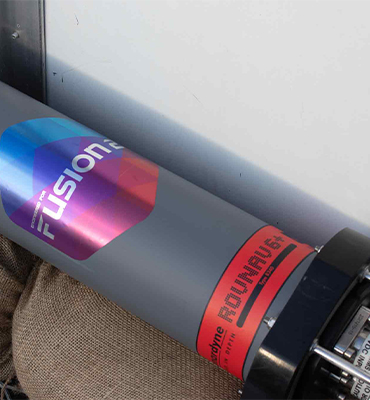
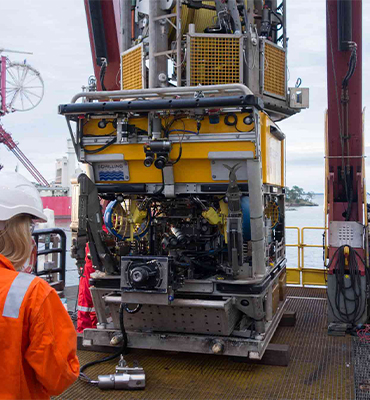
Specifications table
| Feature | 8340-3161 | 8340-5261 | 8340-7261 |
|---|---|---|---|
| Depth Rating | 3,000 m | 5,000 m | 7,000 m |
| Operating Frequency | MF (20–34 kHz) | MF (20–34 kHz) | MF (20–34 kHz) |
| Transducer Beam Shape | Omni-directional | Omni-directional | Omni-directional |
| Transmit Source Level (dB re 1 µPa @ 1 m) | 187–196 dB (4 levels) | 187–196 dB (4 levels) | 187–196 dB (4 levels) |
| Range Precision | Better than 15 mm | Better than 15 mm | Better than 15 mm |
| Serial Communications | RS232 or RS485 (half-duplex) | RS232 or RS485 (half-duplex) | RS232 or RS485 (half-duplex) |
| Battery Life Li-ion (Listening) | 3 days | 3 days | 3 days |
| Operating Voltage | 24 or 48 V dc (±10%) | 24 or 48 V dc (±10%) | 24 or 48 V dc (±10%) |
| Serial Communications Connector | Subconn (8-way female) | Subconn (8-way female) | Subconn (8-way female) |
| Remote Transducer Connector | Burton (3-way male) | Burton (3-way male) | Burton (3-way male) |
| Housing Mechanical Construction | Hard anodised aluminium 6082 | Hard anodised aluminium 7075 | Hard anodised aluminium 7075 |
| Remote Transducer Mechanical Construction | Stainless steel 316 | Stainless steel 316 | Stainless steel 316 |
| Dimensions (Maximum) (Length x Diameter) | 768 x 200 mm | 768 x 200 mm | 768 x 200 mm |
| Weight in Air/Water | 14.3/5.3 kg | 14.7/5.7 kg | 15.5/6.0 kg |
Frequently asked questions
If I’m using Fusion 2, can I choose to use Wideband 2 or Wideband 3 telemetry?
Can ROVNav 6+ be used with standard Compatt 6s?
Will my ROVNav 6 work with Fusion 2?
Do I need to upgrade to Compatt 6+ and ROVNav 6+?
Where should I install my ROVNav 6+ transducer?
What are the differences between a ROVNav 6+ and Mini ROVNav 6+ ?
How to QC a Sound Velocity (SV) in Fusion 2
How far can my Compatt 6+ be above the seabed?
How do I perform an LBL calibration in Fusion 2?
STP files
Software and firmware
Transponders
Datasheets
Manuals and quick start guides
Technical bulletin
Did you know?
ROVNav 6+ is compatible with Fusion 1 and can be depth rated up to 7,000 m
Reassuringly reliable Ranger 2
Ranger 2 is more than just an acoustic tracking and positioning system. It goes way beyond tracking; it can be part of a dynamic positioning system, it supports robust two-way data communication with a range of seafloor sensors to collect data, it can support AUV command and control and will even release seabed moorings.
Ranger 2 can even be run from an uncrewed surface vehicle (USV) enabling truly remote, autonomous operations. Whether your mission involves seabed surveys, offshore energy site inspections or commanding a fleet of AUV’s, Ranger 2 can help you expand them over the horizon and to the edges of your imagination.
It comes with an impressive list of standard features, our award-winning 6G (sixth generation) acoustic hardware platform and Sonardyne Wideband 2 digital signal architecture. The flexibility of the Ranger 2 family is further extended by our range of 6G transponders to support a wide variety of applications.
Why should you invest?
Our Ranger 2 family gives you the versatility you need, at the investment level you can afford, to get your project completed quickly and efficiently. It’s engineered like no other USBL on the market. Adaptable, scalable and always compact, there is a Ranger 2 USBL to suit any size vessel or project. As your needs grow, bolt-on software packs unlock additional capability and protect your investment. Whichever size suits you best, they will always be compatible with our full range of 6G transponders and many other vessel systems.
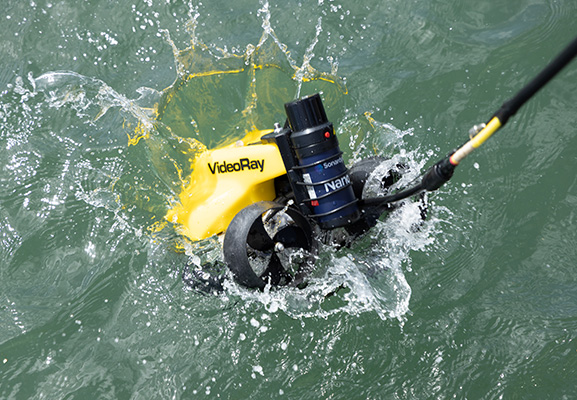
Micro-Ranger 2 USBL
The ‘baby’ of the Ranger 2 family and the ideal entry-level USBL, Micro-Ranger 2’s compact size contradicts its impressive performance. It may be our smallest underwater tracking system to date, but it will have a big impact on your operations.
Never used a USBL system before? No problem. Micro-Ranger 2 is simple to setup and use.
Need to know where your targets are? Micro-Ranger 2 has them covered. Precision, ease of use and versatility come as standard. It’s built around the same market-leading hardware and digital acoustic technology you’ll find in our family of deep water USBL systems, but for significantly less cost and complexity.
For the full picture of what your Micro-Ranger 2 USBL is capable of, please visit its dedicated product page.
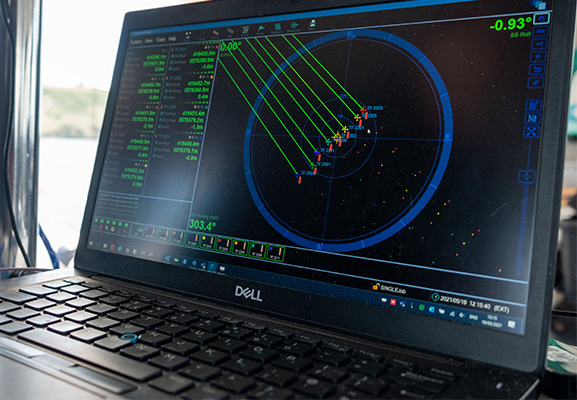
Mini-Ranger 2 USBL
Mini-Ranger 2 is our mid-level USBL target tracking system, perfect for nearshore operations; UXO surveys, search and recovery and structure inspections. With a 995 m operating range, extendable to 4,000 m, it can track up to ten underwater targets simultaneously, including divers, towed instruments, ROVs and AUVs.
Choose to add the Marine Robotics software pack and it will communicate with subsea robotic platforms, sharing positions and exchanging data.
A compact, easily installed, system it’s your ideal choice for temporary installation on small survey vessels, as well as USVs.
For the full picture of what your Mini-Ranger 2 USBL is capable of, please visit its dedicated product page.

Ranger 2 USBL
Ranger 2 is the largest USBL in the family and the most powerful USBL on the market. Able to simultaneously track up to 99 targets with up to 11,000 m range, it is anything but standard.
Recommended for installation on large vessels and USVs, Ranger 2 incorporates over 30 years of our USBL innovation and know-how. It has a global vessel track record and is used for offshore energy, research, cable-lay, salvage and naval operations, to name but a few.
Sharing a common platform with other Sonardyne USBLs, Ranger 2 supports all industry standard DP telegrams and acoustically aided inertial navigation systems (INS).
For the full picture of what your Ranger 2 USBL is capable of, please visit its dedicated product page.
6G
Our 6th generation (6G) technology provides faster, secure and robust data communications from seabed to surface . This gives you speedier updates on the location of your assets and access to your vital data.
Wideband
Our wideband technology enables digital high-throughput data, range resolution and accuracy with low latency. Teamed with our 6G it gives you fast, reliable, accurate data over greater distances.
Robotics
Uncrewed, autonomous surface and underwater vehicles are increasingly used for coastal, deep sea and over-the-horizon operations, reducing costs, risks and carbon footprint. Thats why we have a dedicated “bolt on” pack for our Ranger 2 to enhance your robotics operations.
Dynamic positioning
We’ve been engineering high integrity position reference systems for dynamically positioned vessels since the early 1990s. Our USBL, LUSBL and SPRINT- INS products provide dynamic positioning solutions for a range of vessels and environments.
